







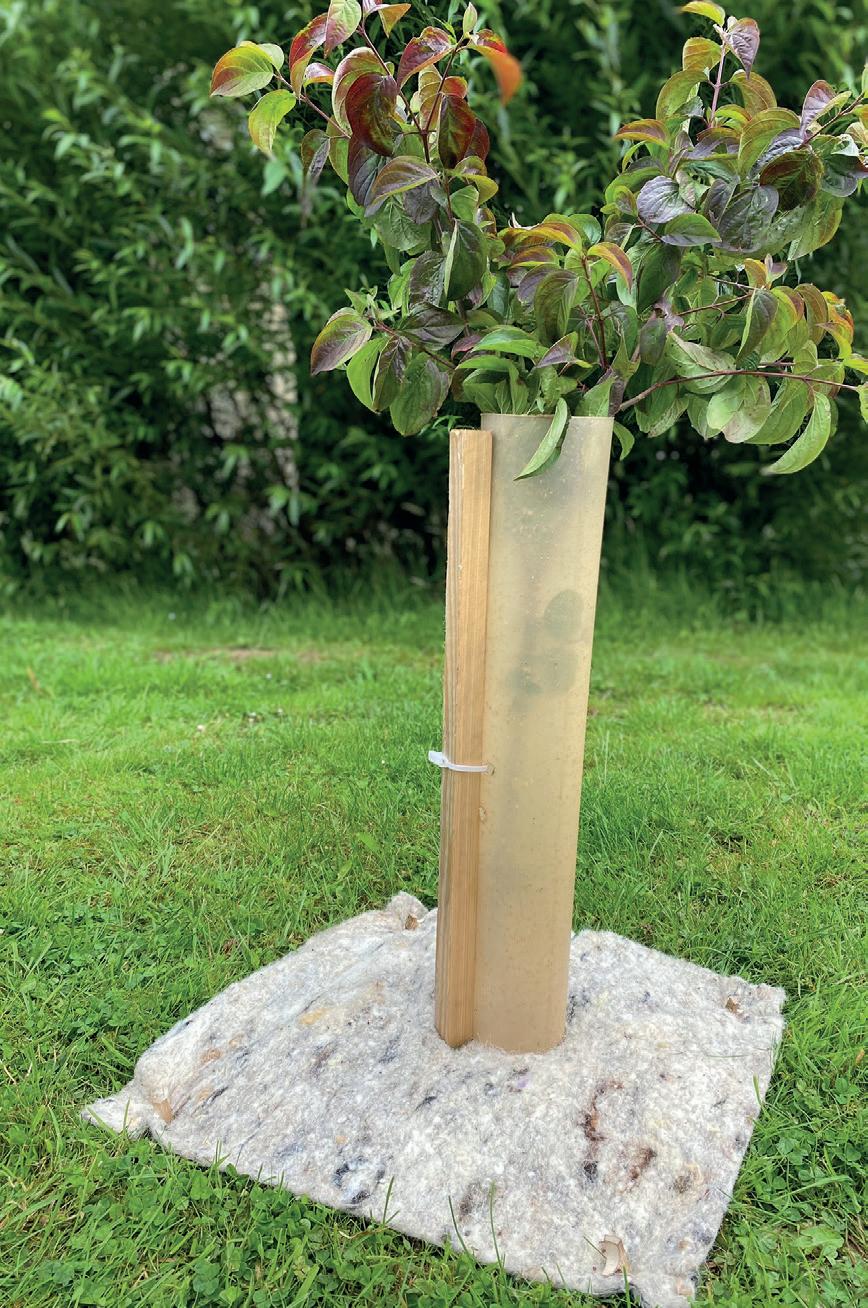











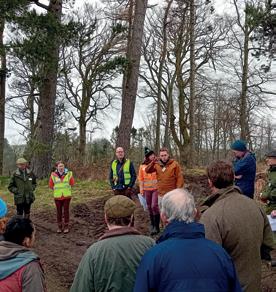






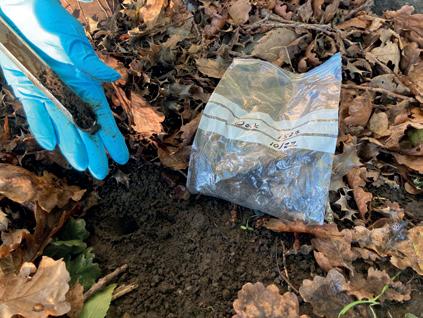






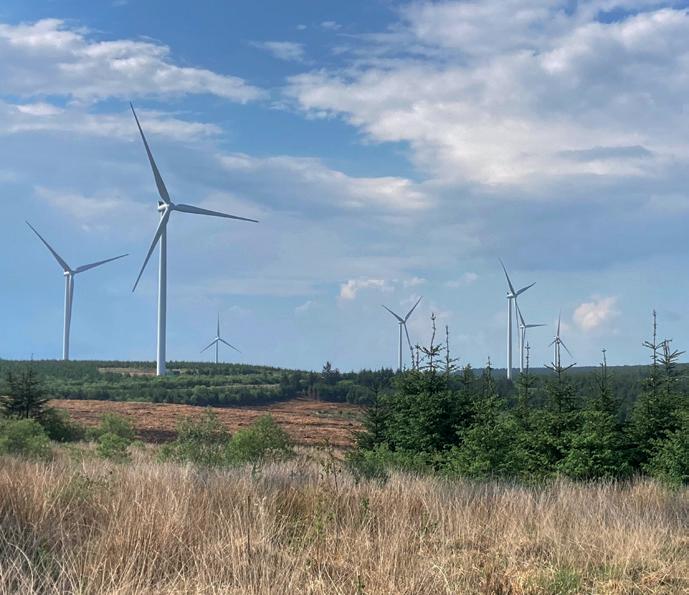
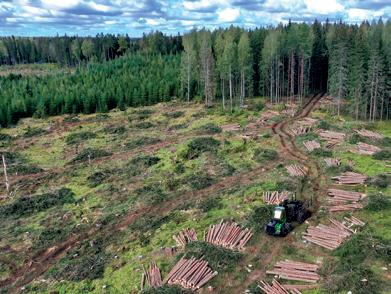
EDITORIAL





































EDITORIAL





STUART GOODALL CHIEF EXECUTIVE, CONFOR
The Climate Change Committee (CCC) advises the UK and devolved governments on tackling climate change. As government efforts to reduce emissions look set to fall short and sequestration technologies like Carbon Capture and Storage appear to be no closer than before, the CCC’s latest advice places increased emphasis on tree planting - it says it’s “vital that tree planting rates more than double to 37,000 hectares per year, by 2030”.
So far, so positive. However, the CCC’s ‘pathway’ to 2050 assumes 65% of new woodlands will be broadleaf and only 35% conifer, even though Forest Research’s evidence is that only fast-growing trees will sequester any meaningful amount of carbon by 2050.
As this is advice to the UK Government, which only has policy responsibility for forestry in England, it may be that this proportion of broadleaf and conifer is only applicable in England. However, as I write this, the Met Office has said the global average temperature over the next five years is likely to exceed 1.5°C above pre-industrial levels, apparently the very thing the Paris Agreement was intended to avoid.
Confor is a membership organisation that promotes sustainable forestry and wood-using businesses. Confor members receive Forestry and Timber News for free as part of their membership. For more information on membership, visit www.confor.org.uk/join-us
Past issues and articles can be accessed online at www.confor.org.uk/news/ftn-magazine
Non-member subscriptions: £77.99/(£84 overseas) Contact FTN@confor.org.uk
Forestry and Timber News is published by Countrywide Publications on behalf of Confor.
For advertising, contact Danny Lewis 01502 725858 danny.lewis@micropress.co.uk
Printed by Micropress Printers Ltd

That 1.5°C isn’t just a figure plucked out of the ether. It is based on the advice of climate experts that keeping global warming to under 1.5 degrees by 2050 (measured over a 20-year period, not just a five-year one) is required to avoid ‘tipping points’ – events that would tip the world into accelerated warming.
A number of governments are slowing down some planned net zero actions e.g. the transition to electric vehicles and installation of heat pumps, so we can expect the pressure to sequester carbon will become even greater in the coming years, with early action being particularly important.
Which makes it difficult to understand why the CCC thinks native woodland creation should dominate – even if that proportion is only for England, rather than UK.
The answer may lie with the old problem of misperceptions of productive forestry. In its advice the CCC talks of avoiding “nonresilient monocultures” and the need to deliver “wider benefits”. As the weather changes, it feels like understanding of our industry still hasn’t changed in some key places, even though Confor has tried in the past. More work is clearly required.

Stuart Goodall
Chief Executive T: 0131 240 1416

E: stuartg@confor.org.uk
Andy Leitch
Deputy Chief Executive M: 07881 510171
E: Andy.leitch@confor.org.uk


Eliza Hibbins-Cline
Membership and Marketing
M: 07918 880285
E: eliza@confor.org.uk
Eleanor O’Neill
Communications Manager M: 07918 255930
E: eleanor.oneill@confor.org.uk

Dr Kate Palmer
Technical and Industry
Support Manager
E: kate@confor.org.uk

John Bruce
National Manager for England E: john.bruce@confor.org.uk

Richard Hunter
National Manager for Scotland
E: richard.hunter@confor.org.uk


Elaine Heckley
National Manager for Wales E: elaine.heckley@confor.org.uk
Confor head office and editorial office
Argyle House, 3 Lady Lawson Street, Edinburgh EH3 9DR
Follow @forestsandwood on Twitter for the latest Confor news and updates


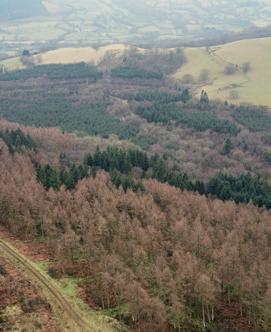
Carno, Powys
179.87 acres / 72.79 ha
An excellent, very high quality medium sized commercial woodland just about to enter its second rotation of production.

Situated on fertile mineral soils wrapping around a gently sloping hill, the property includes a valley, watercourse, some low-lying areas and a pond.
Good access. Freehold.
Guide price
£1,200,000
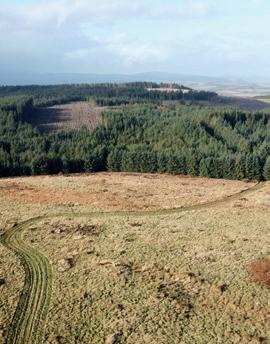

Chillingham, Nr Wooler, Northumberland
391.06 Acres / 158.25 Ha
A large, well-managed commercial forest entering a new rotation in good condition. This forest, with its stunning location and all of its productive ingredients, is an extremely attractive forestry investment and includes a forest lodge and wild swimming pond.


Sporting rights owned and included in the sale. Freehold.
Guide price
£2,600,000
FOWNHOPE PARK WOODLAND
Fownhope, Herefordshire
188.61 Acres / 76.33 Ha
A well-managed woodland featuring a diverse mix of conifer species ranging from 1964 to 2022 as well as mixed broadleaves.
Felling licence expiring 2029
Sporting rights owned and included. Good access.
Freehold.
Offers over £900,000




COED CWM GLOYWFA
Pencraig, Llangynog, Powys
105.36 Acres / 42.64 Ha
Well-situated woodland with a productive future. 19.92ha replanted mainly with improved Sitka spruce in 2022 with on-going maintenance.



Open section of moorland with potential for planting with native broadleaves subject to consents.
Sporting rights owned and included.
Good access. Freehold.
Guide price £320,000
BICTON WOOD WEST
Callington, Cornwall
94.67 Acres / 38.31 Ha
Classic lowland ex-FC peninsula woodland. A productive commercial woodland that is advanced in restructuring and remains capable of producing further timber income.
A technically excellent site for growing commercial timber. Good access. Freehold.


Sporting rights owned and included.
Guide price £485,000
BELL COPPICE
Far Forest, Cleobury Mortimer, Shropshire
203.45 Acres / 82.33 Ha
A premier productive well-managed Oak woodland. Deer fencing. Stream.
Timber ready to harvest. Good access.
3 meadows included in sale. Freehold.
Sporting rights owned and included.
Guide price £1,575,000
New data layers and functionality in myForest provide powerful insights and information to support planning and decision-making on the ground by land managers.
myForest is a dedicated forestry mapping and data solution provided by Sylva Foundation, designed by foresters for foresters. It incorporates mapping tools, specialist data storage and unique reporting linked to regulations and incentives. Users include private woodland owners, community groups, and forestry professionals who together have mapped more than 210,000ha of woodland across the UK.
Since launching with this innovative and intuitive platform in 2010, Sylva’s team of foresters and web developers have worked closely with practitioners across the forestry and woodland management sector, continuously developing myForest to meet their evolving needs. A key feature of myForest is that it holds compartment and sub-compartment data geospatially without the complexity of more generic GIS, making it easy to use straight out of the box.
Sylva works closely with regulators in Scotland and England to support woodland management and creation by integrating templates such as Felling Permission applications and Woodland Management Plans. Resources available
in myForest include multiple mapping backgrounds and unique supporting tools such as the recently launched UKFS Checker.
myForest works through a freemium model where users can sign up for free access to functionality to get them started on the path to sustainable forest management. More functionality (such as access to OS mapping and additional data layers) is available through a paid tier. Later this year, myForest will be launching new tiers providing more flexibility and sharing across teams.
The most recent development in myForest has been an overhaul of geospatial data layers to provide even more functionality and flexibility.
Access to data layers for use in the forestry context can be complex. Different nations host environmental geospatial data in different ways, and it can be difficult for foresters to bring these layers directly into their chosen mapping solution. In Wales the data is organised into one location through Data Map Wales. In England, data is viewable
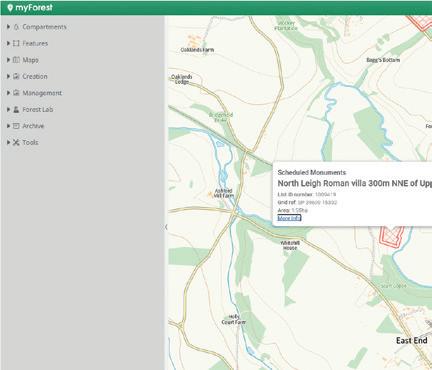

in MAGIC Map and through the Forestry Commission’s map browser. In Scotland, data can be viewed in the Scottish Forestry or Scotland’s environment map viewers. In Northern Ireland, different types of data layers have to be viewed on the different government departments’ map viewers.
Other data layers are accessed from the data owners’ own sites. In most cases, the information cannot be easily extracted, for example for a forester to link it with a client’s planning data. If data is available to bring over to a user’s own mapping solution, it is often not a seamless process.
myForest provides a growing suite of forestry-specific data layers straight to its mapping solution that can be used for woodland management and creation, many of which are direct feeds from the original source. The team regularly checks government (and other) open data sources to ensure the data layers are kept up to date. Data layers are now organised by UK Forestry Standard chapter and can be filtered by nation, and a new search function, making it easier to find the data layer you need.
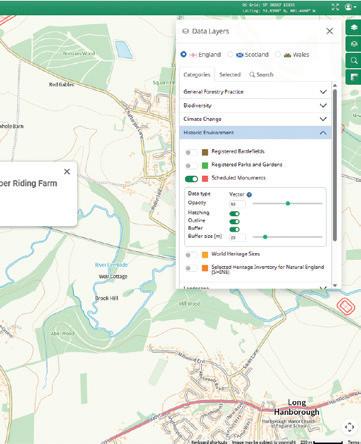
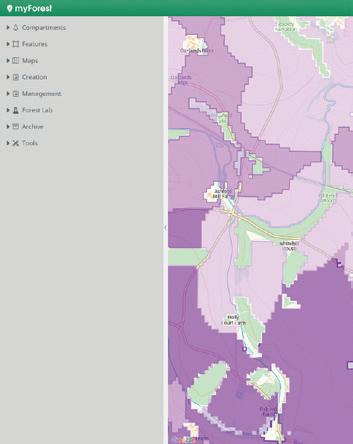
myForest is now also able to show attributes for a growing list of data layers which is really useful when more information about the data is needed.
Designing a new woodland can be a complex process. The UK Forestry Standard requires woodland creation projects to identify and consider multiple aspects, including soil, landscape, resilience, biodiversity and the historic environment.
The challenge when planning new woodland has often been the difficulty in accessing information on potential environmental constraints, especially related to the historic environment. Data is held in multiple places; some at a national level and some at a local level, with some features designated and others not.
Thanks to a unique collaboration between Sylva Foundation and Forestry Commission, an enhanced suite of free historic environment data layers for England has recently been added to myForest, including data on historic assets for many areas that were previously available only on request from individual local authorities. The purpose of the collaboration is to support woodland creation across England by enabling land managers to consider historic environment data at an early stage when developing their plans.
Landowners and managers planning woodland creation in England can now access a range of key historic environment datasets online in a single location. As well as mapping that shows the extent of historic features, it is possible to view attribute data and links to individual online records relating to many
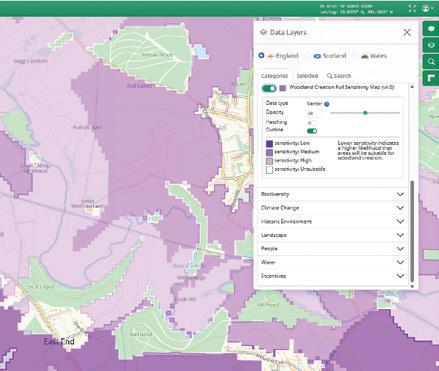


Sylva Foundation is an environmental charity focussing on trees and woodland. It uses its forestry knowledge and information technology skills to provide innovative solutions to some of the greatest environmental challenges facing modern society.

As well as myForest, in collaboration with partners it has also developed tools such as the Woodland Wildlife Toolkit, the Woodland Condition Assessment app and environmental funding platform NatureBid, which has supported the delivery of more than £39M of environmental funding in the last seven years.

From its base in south Oxfordshire, Sylva Foundation runs a Wood Centre and Wood School supporting training and promoting the use of home-grown timber.

heritage assets, directly in the myForest mapping interface, making it easier to find out whom to contact when seeking specialist historic environment advice, as required by the UKFS
The new data layers include designated heritage assets, such as Scheduled Monuments and Registered Battlefields. Crucially, these features can also now be buffered using myForest mapping tools, facilitating users to create woodland creation plans that comply with the requirements and guidelines of the UK Forestry Standard.
Furthermore, powerful additional functionality has been added to myForest providing access to locally held historic environment datasets for non-designated heritage assets - Selected Heritage Inventory for Natural England (SHINE). Thanks to an agreement between the Forestry Commission and the Association of Local Government Archaeological Officers, myForest is now able to supply SHINE data from 26 Local Historic
Environment Services covering almost 40% of land in England.
The SHINE data layer in myForest will be continually updated as more data is added in the coming years.
myForest now also displays the Forestry Commission’s Woodland Creation Full Sensitivity Map (v4.0). This allows myForest users to see how land has been classified with respect to its suitability for woodland creation, taking into account a wide range of constraints, helping land managers identify the best land for planting. Importantly, this can be used to support the England Woodland Creation Offer Fast Track process which streamlines grant applications.
Combined with the existing woodland creation mapping, recording and planning tools, the new data layer functionality will allow myForest users to better consider a wide range of historic environment data at an early stage when developing their plans. Ultimately this will save time and result in more robust plans.
Dr Kate Palmer has joined Confor as interim Technical and Industry Support Manager.



After establishing a career in low carbon transport innovation, Kate achieved a PGDip in Environmental Forestry in 2022 and brought her skills in project management and stakeholder engagement to the sector.
Starting off as a Forester at Pryor & Rickett Silviculture, she quickly developed a sound understanding of the technical aspects of forestry and the workings of the industry.
By March 2024







Kate was Key Client Manager for PRS, delivering a consistent quality of service across 15,500ha of commercial forestry for several key clients.






After more than 32 years at the core organisation, most recently in the role of Office Manager, Ann Stewart will be retiring from Confor at the end of June 2025.







In her role at Confor, Kate will be working closely with Deputy Chief Executive Andy Leitch to further develop and deliver technical services to meet Members’ needs. She is also directly involved in developing and managing projects that aid with the economic development of the sector across the UK.
Ann originally joined Timber Growers Scotland in 1993 and has seen many changes in the industry and for members, from the first edition of the UK Forestry Standard to the establishment of Confor in 2004 through the merging of the Association of Professional Foresters and the Timber Growers Association.
Many long-standing members will be familiar with Ann, and we hope you will join us in wishing her the best for her well-deserved retirement.

Eliza Hibbins-Cline, Membership & Marketing Manager
It’s hard to believe we are halfway through 2025 already! I hope you have had a positive and productive start to the year.
Looking ahead, the Royal Welsh Show is fast approaching. We hope to



Richard Hunter has in the meantime taken over the role of National Manager for Scotland while April Armstrong is on maternity leave. and role

Brodies’ Capital Square offices in Edinburgh.

see many members and potential new faces there! Please do keep an eye on our website and newsletter for updates about what’s on.
We are looking for members to share their experiences with Confor to promote as testimonials on our website and in recruitment materials. If you feel you or your business has benefitted from being a Confor member, please send your testimonial over to us at members@confor.org.uk.
Remember the more people in the industry we can encourage to join Confor, the louder our voice can be!
If you would like to get more out of your membership with us, please also
Confor has partnered with leading Scottish law firm Brodies LLP to host a conference examining the future of forestry in Scotland at a time of major challenge and change.
‘Forestry and Wood Processing at the Crossroads’ will feature speakers from the world of forestry and a political panel, with an optional workshop on new contract templates for regulating the sale and purchase of carbon units from carbon sequestration projects.
This event will now be held on 25 September 2025 at Brodies’ Capital Square offices in Edinburgh in a change to the previously advertised date. Bookings for the conference and workshop will soon open online.
feel free to reach out to your regional National Manager and find out how to get involved or receive support: Scotland: Richard Hunter (richard. hunter@confor.org.uk)
Wales: Elaine Heckley (elaine.heckley@ confor.org.uk)
England: John Bruce (john.bruce@ confor.org.uk)
Northern Ireland/International: Andy Leitch (andy.leitch@confor.org.uk)
As always, a warm welcome to our newest members:
England: SGA Commercial Ltd
Scotland: Kirsty Gibson
Wales: Geo Smart Decisions











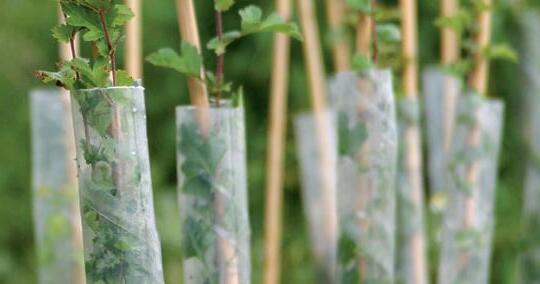






•
•
•
•
•
•





+44 (0) 1623 812444Email: info@ansini.co.uk

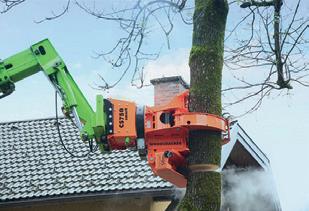






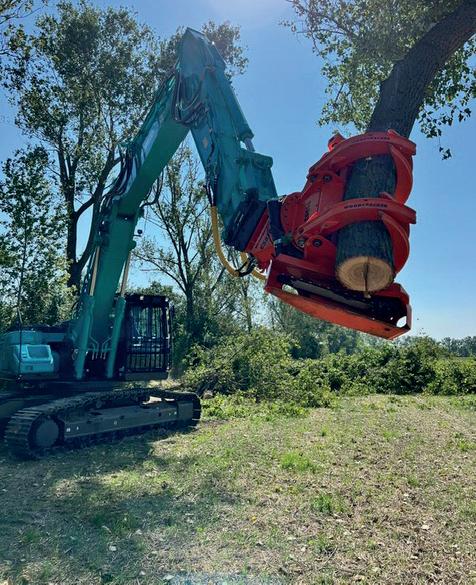



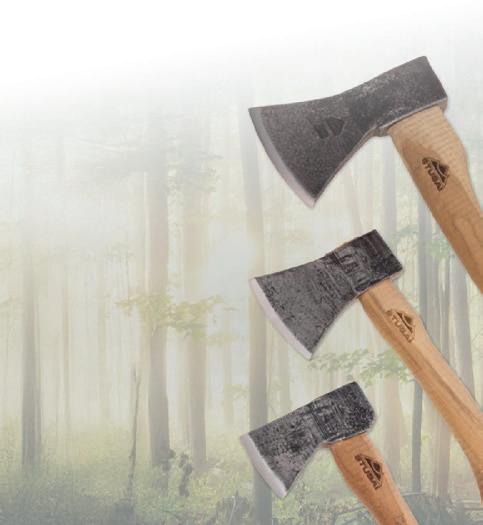

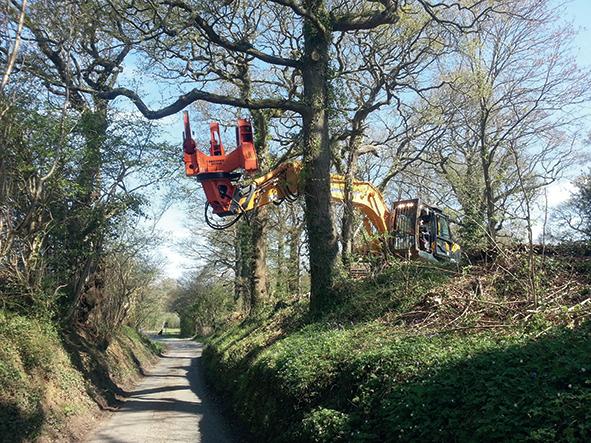
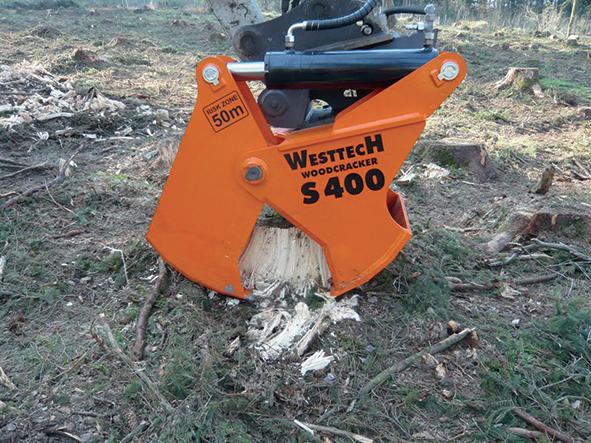
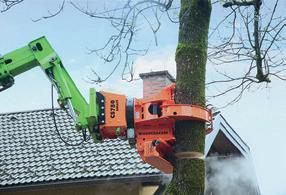




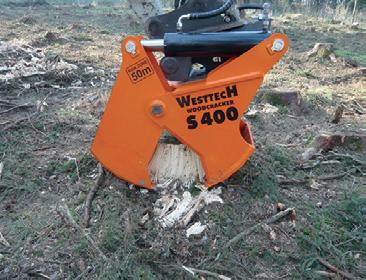









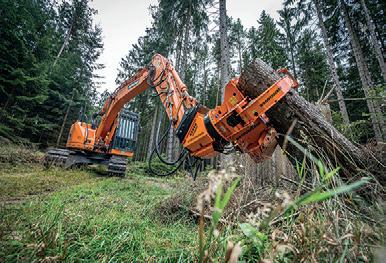

























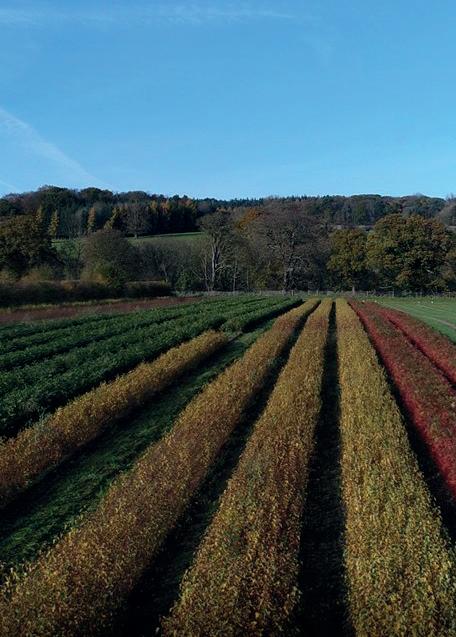









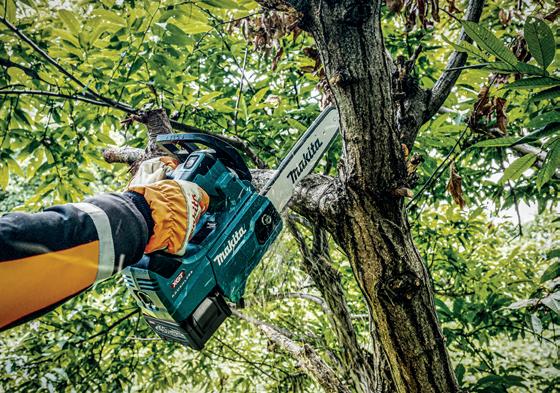













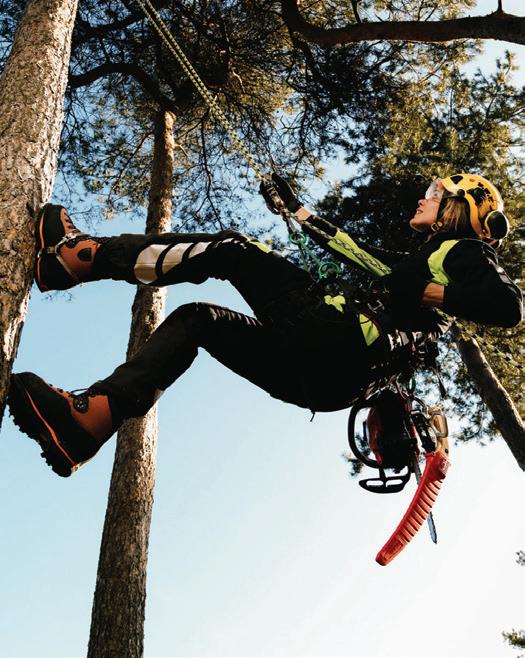
www.aspenfuel.co.uk


National Manager for Wales Elaine Heckley tells us what to look forward to on the Confor stand at the Royal Welsh Show, taking place 21-24 July 2025.
Once again, Confor will be at the Royal Welsh Show and this year we are trying out a new format, complementing our activity at the Spring Festival and the Winter Fair and focusing more on interacting with the rural land sector.
Deputy First Minister Huw IrrancaDavies plans to launch the Sustainable Farming Scheme and Welsh Timber Industrial Strategy at the Show. Mr Irranca-Davies has taken an active interest in our sector and hopes to join us for a few of our activities. This is a potentially high-profile year for forestry, and we hope members can join us in celebrating the support we have gained from the Senedd and Welsh Government.
Our Contractors Breakfast, supported by the Royal Forestry Society (RFS), Forestry Industry Safety Accord (FISA) and Forestry Contractors Association (FCA), is centred around mental health in the forestry sector. RFS have a project they are keen to share with the industry which has been supported by Confor, FISA and the FCA. This event also feeds into Wales’ Mental Wellbeing Pie and Pint events happening this autumn.
The Confor Lunch will once again host a fine selection of forest foods, thanks to the kind sponsorship of Bronwin & Abbey. The forestry awards will follow this event, celebrating their fifth year.
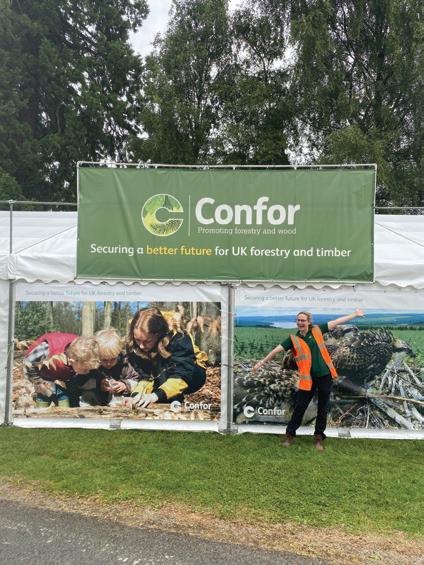
Confor has sponsored the 2025 tree felling competition, which is taking place on 5-6 July.
The much-anticipated Schools photography competition will also be displayed in our tent this year, allowing more people to enjoy this aspect of the awards and raising its profile to the wider Show.
Following on from the success from last year, we will be hosting another breakfast in the CLA tent on the Wednesday, with the theme ‘Beyond
Monday 1pm FISA 2pm Forest Research
Tuesday 9am Contractors’ Breakfast 10.30am Forest Research 11.15am ICF 12pm Confor Lunch & Forestry Awards
2pm Welsh Government: Timber Industrial Strategy & Forestry Skills
3pm Squirrel Accord
Wednesday 9am CLA Breakfast: Beyond the Tree
11am Skills/Careers Foresters Presentations
the Tree’. We will be discussing the opportunities that come with promoting forestry and timber use, with the help of Gary Newman from Woodknowledge Wales and other key members of the supply chain.
Wednesday is Careers Day for the Royal Welsh Show and we plan to host foresters for flash talks explaining their roles and how they got into the industry, as well as a careers drop-in clinic at the MWMAC stand.
Confor’s 2025 conference, ‘Timber in Construction: From Roadmap to Reality’, will be taking place on 20 November at the QEII Centre, Westminster, London.
The event will explore what actions are needed to turn the Timber in Construction Roadmap into reality –and what that reality might look like.
Forestry Minister Mary Creagh MP
will be invited to speak, alongside representatives from the construction and architecture industries, Defra, Welsh Government, the Climate Change Committee, and experts on international forestry.
This year, we are hosting the conference in association with the launch of the 2025 UK Forest Market Report from Tilhill Forestry
and Goldcrest Land and Forestry Group on 19 November. Those planning to attend both London events may benefit from an exclusive discount on general ticket sales. More details will be communicated to members after booking opens in July. A full agenda and list of speakers will be available on the Confor website in due course.
Paul Brannen, Director of Public Affairs for CEI-Bois & EOS, received the Changing Attitudes Award at the Confor Dinner & Awards 2025 for his work promoting the use of timber in construction.
How do you feel about winning the Changing Attitudes Award?
I was genuinely chuffed. I haven’t won a prize for anything since I was at junior school!
‘Timber! How wood can help save the world from climate breakdown’ was my attempt at bringing the important issue of identifying the climate benefits of building more with wood out from the margins and into the mainstream.
To be able to walk into a bookshop, as I did recently in London, and find my book on the same shelf as Rachel Carson’s groundbreaking ‘Silent Spring’ gave me the sense that our issue – the climate need for more timber in construction – is starting to get recognised more widely, although this would not have been so visually apparent if my surname began with Z.



Has writing and promoting ‘Timber!’ taught you anything new?
Absolutely. Writing the book involved going deeper into some issues that I only knew a little about. The main revelation was in relation to insulation. I’d presumed that wood fibre insulation delivered three big wins: storing carbon, substituting for carbon intensive alternatives and having its own low level of embodied carbon i.e. a small carbon footprint.
As I delved deeper into the subject the facts clearly supported the first two benefits but not the third. Why? Because wood fibre insulation can have a surprisingly high level of embodied carbon resulting from the manufacturing process being ‘wet’ (akin to making paper) and the product then needing to be dried.
This means heat is needed and if it is derived from a fossil fuel then the embodied carbon shoots up. If the heat is derived from burning the woody side streams, then the embodied carbon levels drop. As a result, it’s possible that the same wood fibre insulation, made by the same company, in country A in factory X could have a bigger carbon footprint than the one made in country B in factory Z.


Your award is for ‘changing attitudes’ –how would you like to see the industry evolve towards that goal?
That’s a tricky one as I don’t want to sound critical. However, I think the industry needs to think bigger and move faster. Rather than incremental development we need step change.
I do appreciate that so often even small improvements need large commitments of time and energy. The chicken and egg scenario is common. For instance, the UK really should have at least one wood fibre insulation factory by now, but the demand is not there because the product is not visible.
Essentially the climate crisis necessitates something that would look much more like a war time economy; significant government intervention in the market driving the much needed bigger and faster change to achieve a fully functioning bioeconomy by 2050.
What has been your biggest career achievement so far?
I was part of the cross-sector development advocacy team that ran the 1990s campaign to get fairly traded products from the global south into the supermarkets and launch the associated Fairtrade Mark. This was the classic ‘from the margins to the mainstream’ campaign.






Oxfam and Traidcraft had been selling fairly traded tea and coffee for years but given most people do most of their shopping in a supermarket, they were very much niche products. Persuading first one, then several, of the major supermarkets to stock fair trade products was all about generating a customer demand.


Postcards and letters along with ‘fair trade request vouchers’ delivered in store at the till sent a growing signal to supermarket bosses that these products would sell. Fairtrade is now well established in the mainstream – we need to do something similar with timber products like wood fibre insulation.
What comes next for you?
I hope to write a short, punchy booklet on why we should be using more UK timber in the UK construction sector. If so, I could be ‘knocking on your door’ soon asking for your advice and help.

Independent forest management to maximise the value of your woodland.
www.fwforestry.co.uk enquiries@fwforestry.com
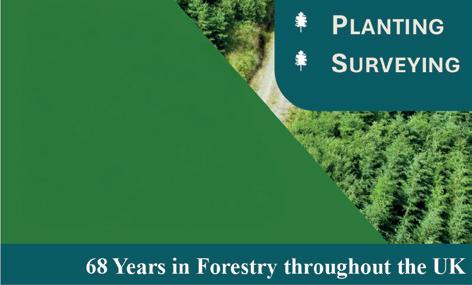
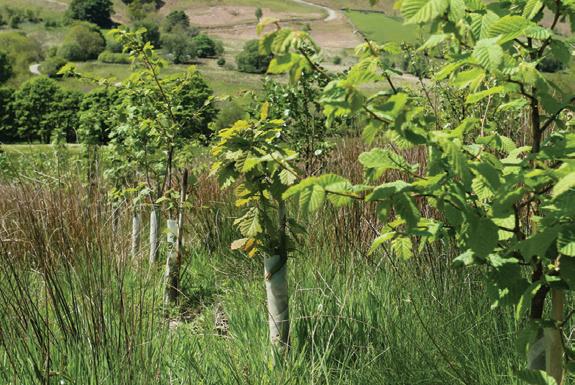
CarbonStore simplifies the process of securing carbon accreditation with the Woodland Carbon Code.
With over 6,000 hectares of woodland registered with the Code, we are one of the UK’s leading project developers.
Contact CarbonStore for clear, trustworthy, and impartial advice in woodland carbon accreditation.
07500 950832 | info@carbonstoreuk.com




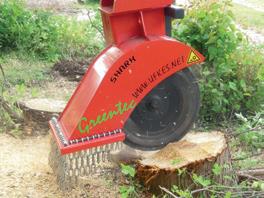
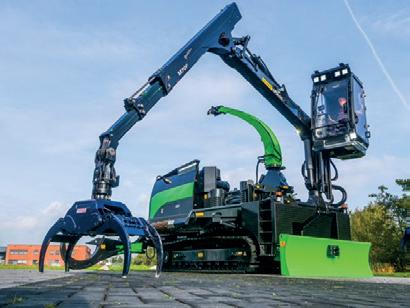

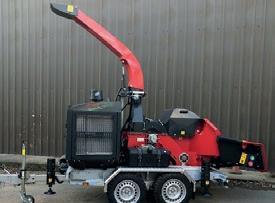

Confor Policy & Public Affairs Officer Jon Garson rounds up our recent political engagement activities.
While we are still in the first year of the new UK Government, with close to a year until elections in Scotland and Wales, much of the political focus recently has been on elections.
May kicked off with local elections in England and more than 1,600 seats contested in 23 councils, as well as six mayoral elections and a parliamentary by-election in Runcorn and Helsby. June saw a byelection in Hamilton, Larkhall and Stonehouse in Scotland.
These elections have generated significant commentary for one reason. This is as a result of the strong showing in all contests by the Reform Party.
These results saw Reform win most of the council seats (677 in total), followed by Liberal Democrats with 370, Conservatives at 319 and Labour dropping to 98 with independents winning 89 and the Greens winning 79.
They also won the Runcorn and Helsby byelection and came a close third in Hamilton.
It should be noted that given where we are in the political cycle, not too much can be read into these results in terms of outcomes in general elections across the UK.
From the point of view of Confor and the sector as a whole, we will need to be cognisant of the fact that Reform are taking votes from across the political spectrum. Additionally, with strong showings by the Liberal Democrats and the Greens, we will need to ensure that
we continue to engage with all parties as they set their agendas going into these campaigns.
Confor continues to be active across a range of files as we engage across all nations on issues important to members and industry.
We have received a response from the UK government to the letter submitted jointly by Confor, Country Land and Business Association, and the Royal Forestry Society addressing our concerns around changes to Inheritance Tax. Some of the core issues outlined in the letter have not been satisfactorily acknowledged, so we will look to continue discussions with senior government on this critical topic.
We have engaged in a number of consultations, including on Land Use in the UK and the Timber Industrial Strategy in Wales. In Scotland we have provided input into several significant Bills before the Parliament, including the Land Reform Bill and the Natural Environment (Scotland) Bill.

training programme on stakeholder engagement was a key focus. The next round of this training will take place in November and booking will open soon.
We have been part of visits by the Cabinet Secretary Mary Creagh (pictured below) to several members in England. In Wales the Deputy First Minister Huw Irranca-Davies will be joining Confor and members as part of his agenda for the Royal Welsh Show. In Scotland, First Minister John Swinney was part of an unveiling of a new timber frame facility in Irvine.



Since the last issue of Forestry & Timber News, we held our scheduled quarterly meeting with the Cabinet Secretary Mairi Gougeon, focused on increasing tree planting. The Cab Sec also provided comments to members at an event announcing the establishment of the global headquarters of the International Sustainable Forestry Coalition, an event co-hosted by Confor.










To this end, our Chief Executive Stuart Goodall recently participated in a roundtable hearing with the Rural and Island Affairs Committee in the Scottish Parliament. He also participated in an initial meeting with the Scottish Government on an update to the 2019-2029 Scottish Forestry Strategy.




Confor continues to be an active member of the Tree Planting Task Force. At the group’s last meeting, our










While a key focus for us at the moment is engaging with members as we look at developing our manifesto for the Scottish and Welsh elections, we continue to look at enhancing our engagement with elected officials across the UK. Confor will be a presence at key party conferences to raise the sector’s profile and to engage as many elected and prospective elected and party officials as possible on the issues of importance to the sector.


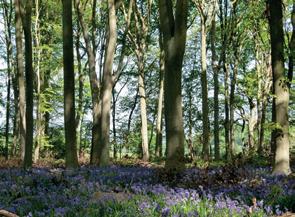
A fascinating fusion of beech, oak and Scots pine with many possibilities for an enthusiastic hobby forester. Two miles north of the market town of Braintree.
3.49 acres, £64,000 (freehold)


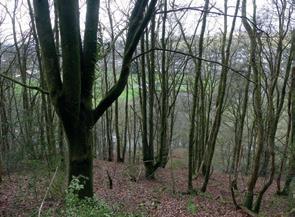
A rich and secluded oak and mixed broadleaf woodland, with incredible views over the Derbyshire Dales, located just south of the Peak District National Park.
3.93 acres, £48,000 (freehold)


Mature broadleaf woodland and former quarry on a north facing slope with good access and camping possibilities, with views over the River Teifi and Llandysul.
7.16 acres, £40,000 (freehold)
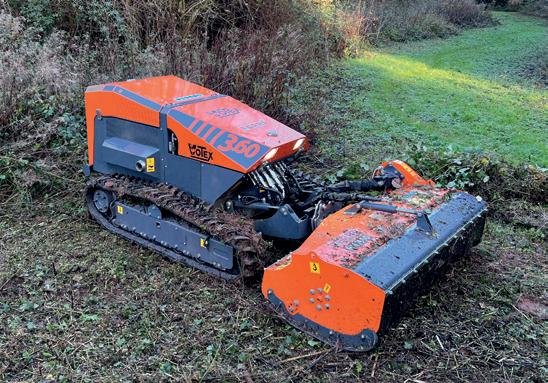




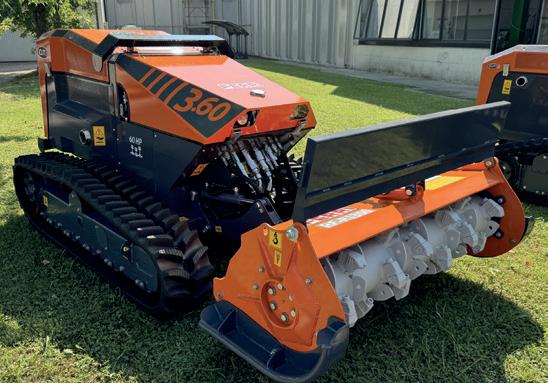



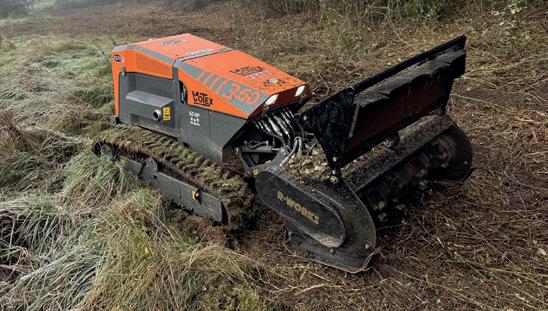
Confor was delighted to co-host an event marking the official commemoration of the International Sustainable Forestry Coalition’s new head office in Edinburgh.
The International Sustainable Forestry Coalition (ISFC) was established two years ago to provide an advocacy body for private sector forestry in global fora such as the climate and nature Conferences of the Parties (COPs).
Key UK-based members include Gresham House, Stafford Capital Partners and F&W Forestry (formerly Fountains Forestry).
On 13 May, the ISFC teamed up with Confor for an event at Dynamic Earth, next to the Scottish Parliamentary precinct. ISFC ‘opened’ its first global office and Confor promoted the important role of Scottish Forestry in a global context.
Cabinet Secretary for Rural Affairs, Land Reform and Islands Mairi Gougeon MSP addressed the reception at Dynamic Earth, stressing the need to communicate the value of the industry across public and private sector forums.


Attendees also heard from D&G Woodlands, Foresight Group and Par Equity about key projects promoting the community and stakeholder benefits of forestry across Scotland.
Introducing the speakers, Confor Chief Executive Stuart Goodall added: “This November will see COP30 take place in Brazil, and I know from speaking to counterparts in Brazil and as far afield as New Zealand that there’s real interest in how forests can deliver community benefit, with particular focus on new woodlands.”











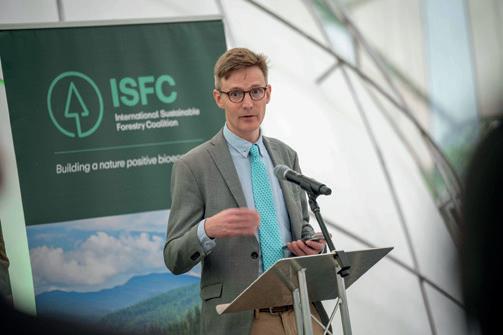



ust over two years ago, 32 CEOs of the world’s largest forestry companies convened, probably for the first time, in London and online to discuss the formation of a new group to create a new vision and roadmap for the future of the forestry sector.
The forestry sector has much to contribute to society.


Our land management can contribute climate solutions and the conservation and enhancement of nature. Forestry collectively manages tens, if not hundreds, of millions of hectares of the world’s forest cover on a sustainable basis. We are increasingly being seen as a ‘natural capital asset class’.




We are the source of sustainable renewable materials that can power the transition to a circular bioeconomy.






However, when you look at many international processes like the UN Conferences on Climate Change, Biodiversity and Desertification, forestry was often seen or treated like a sideshow. Yet forest management can contribute substantially to net zero and nature positive objectives. Much of incremental conservation needed to
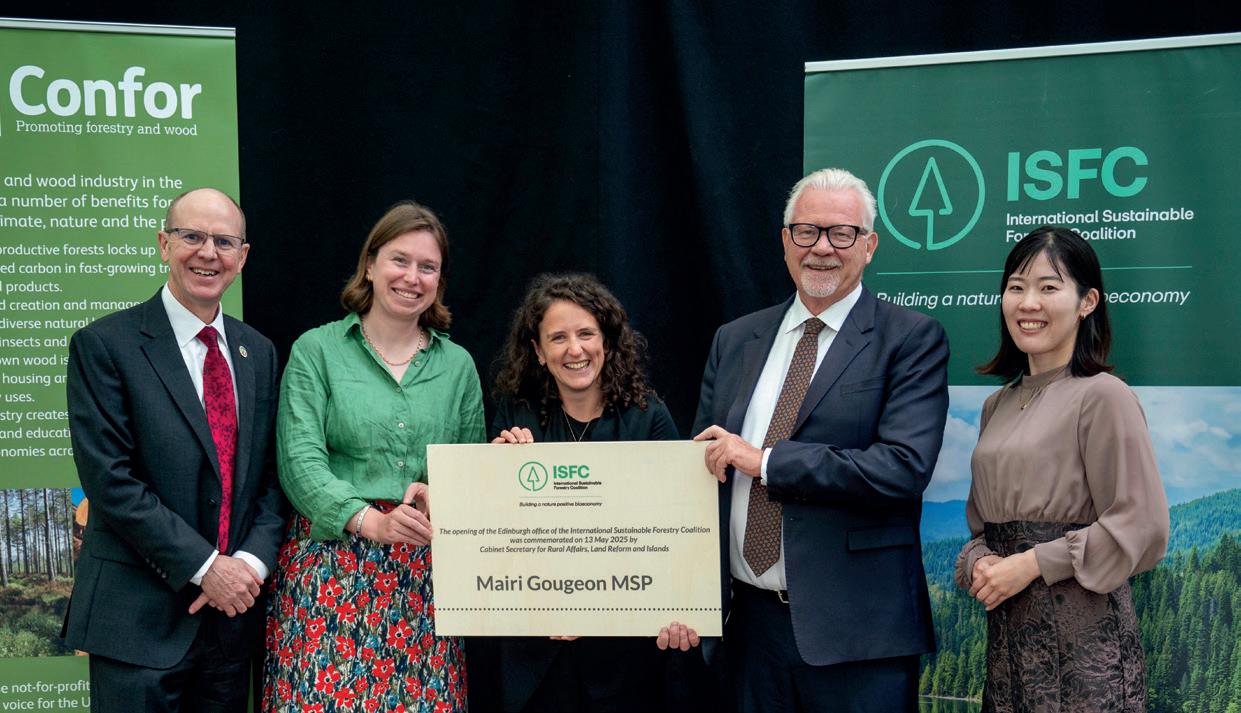











meet the Global Biodiversity Framework goal of 30% protected areas will have to come from private land and embedding conservation in landscapes. It is now being recognized that forests and forest management are the most important cross-cutting issue in the three COPs.
At the G20 in Brazil last year, one of the key outcomes was an initiative to accelerate the circular bioeconomy transition, and South Africa is building on this initiative with a G20 project to explore how to attract more climate finance to the bioeconomy transition. And so the International Sustainable Forestry Coalition has been able to immediately contribute to these key opportunities.
We are now representing 17 major organizations operating across almost 20 million hectares in 37 countries. Our members manage boreal, temperate





and tropical forests. We have members managing some of the world’s most productive timber plantations and embedding conservation alongside these plantations. Our members control extensive wood processing facilities and have some world leading innovations in wood processing and new wood-based materials, construction systems and more.
We are collaborating on not only the bioeconomy transition but natural capital accounting - urging investors to look at increasing their investments to climate and nature positive investments. We are trying to standardise measurement and reporting of these natural assets so that investors can track their progress against public commitments.
The UK and particularly Scotland have a tremendous history of forestry and can contribute more to the debate over how the forestry sector evolves.
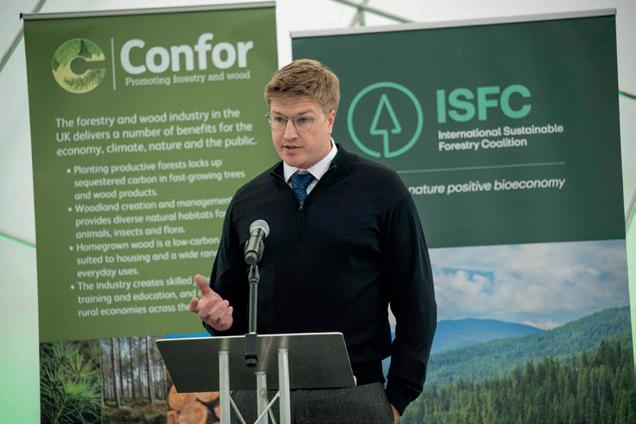
The World Bank, the FAO and others forecast significant new demand for timber and fibre in coming decades as part of the global economic restructuring needed to become a sustainable society.
At ISFC we say that the growth needed in the forestry sector can only be met if we are a climate positive and nature positive sector. To meet the opportunity for the forestry sector to scale up we must also emphasize recycling and reuse of timber and wood fibre.
We must get more from the timber estates we have. And we must grow more trees for timber and fibre on land which is not economically suitable for food production, especially in places such as the UK where governance and regulations are strong.
There couldn’t be a better country for us to pitch our global tent.
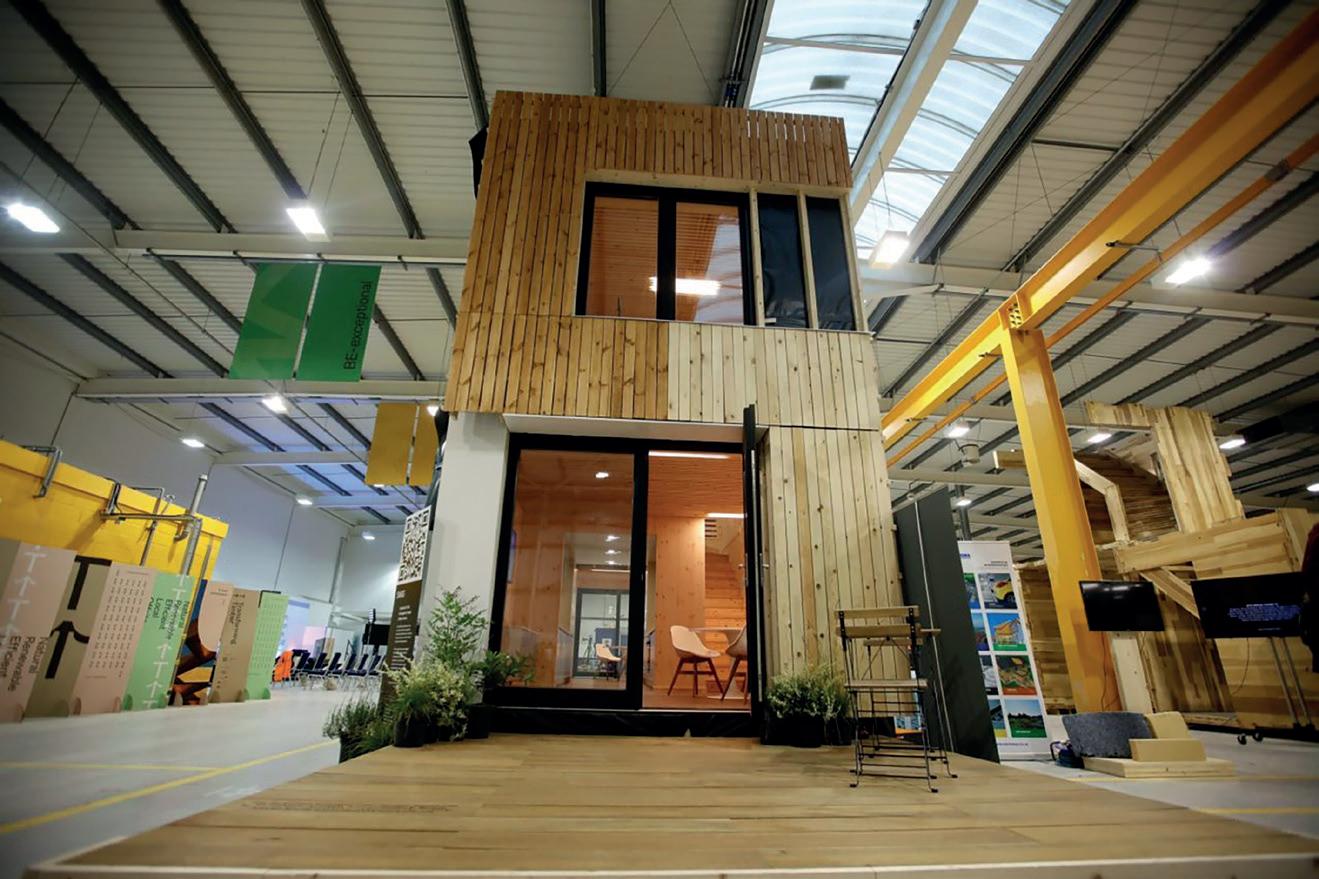
A centre of excellence for mass timber research, innovation and manufacturing was launched today by Built Environment – Smarter Transformation (BE-ST).
Supported by Scottish Funding Council and host institution
Edinburgh Napier University, the Innovation Campus at BE-ST will now house £1.5 million pounds of newly acquired, state-of-the-art mass timber post-processing equipment and a SuperBlower extraction system. This will complement existing capabilities and further enhance precision finishing, production capacity, and health and safety processes.
The Mass Timber Centre of Excellence will provide the UK construction and built environment sector with the facilities, knowledge, and connections to accelerate the adoption of UK-grown mass timber solutions and access the benefits these
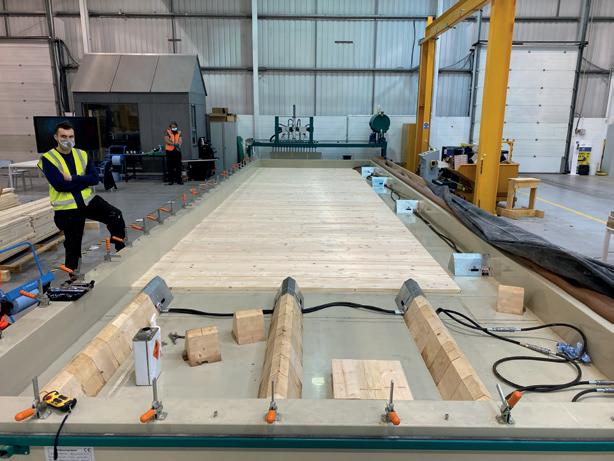
can bring, such as lowering carbon emissions associated with construction, strengthening local supply chains, creating jobs, and improving the efficiency of the delivery of the built environment.
The Mass Timber Centre of Excellence offers access to the UK’s most advanced mass timber manufacturing equipment. It hosts the largest commercially available CNC machine in the UK, while offering the full-scale production of Cross Laminated Timber (CLT), Nail Laminated Timber (NLT), and Glue Laminated Timber (Glulam). The factory is anticipated to have an annual manufacturing output capacity of approximately 8,000m³ once fully operational.
The UK faces the dual challenge of a climate emergency and a housing emergency. By advancing the use of mass timber, the Centre has been established to position the construction industry as a key part of the solutions to both challenges.
Mass timber is a category of engineered wood products made by compressing layers of timber to form large structural elements. Currently, the UK imports 73,000m3 of mass timber per year, by creating highervalue timber products in the UK, such as mass timber, and leveraging local supply chains, we can unlock significant economic and environmental benefits in the UK.
continued on p20



Abergorlech | Carmarthen
144.62 Hectares / 357.36 Acres
Freehold for sale as a whole Offers over £2,200,000
A rare opportunity to acquire an exceptional, highly productive, young conifer plantation including 18,350 Pending Issuance Units (Carbon Credits)
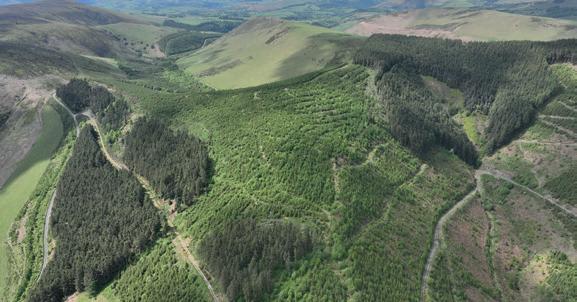

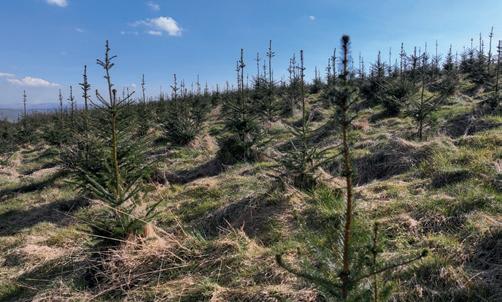
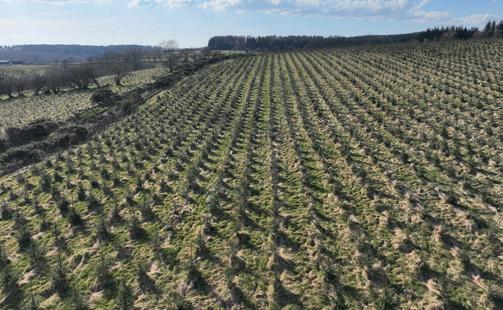

Powys | Mid Wales | SY19 7BB
50.07 / 123.72 Acres
Freehold for sale as a whole Offers over £600,000
A well-located commercial conifer woodland offering mature and young crops.
continued from p18
The Centre provides support to accelerate UK-grown mass timber adoption across the UK. As well as offering access to mass timber manufacturing equipment, the Centre offers research, innovation, and systems design support through partnerships with industry and academic experts to develop timber solutions; consultancy services to assist with product approvals, regulatory compliance, and manufacturing processes; and timber processing through trusted partners for felling, grading, kilning, and planing.
Hands-on training and skills development can also be provided via the Centre to upskill the workforce in the expertise required to deliver mass timber products.
Sam Hart, Associate Director of Manufacturing and Housing at BEST, said: “The Mass Timber Centre of Excellence opens up huge opportunities for the construction sector. By investing in mass timber, we are not just advancing low carbon approaches to construction, we are also investing in economic growth, creating jobs, and addressing some of the UK’s key challenges.”
Stephen Good, CEO of BE-ST, added: “The launch of this Centre will support the wider adoption of mass timber, helping to reduce carbon emissions, strengthen supply chains, and deliver much-needed domestic, non-domestic, public, and private infrastructure where appropriate, in a more efficient, affordable, higher quality and sustainable way.”
The Mass Timber Centre of Excellence is inviting businesses, policymakers, and construction professionals to explore the opportunities mass timber can offer, from adopting or manufacturing mass timber components or taking part in our skills programmes.
As Northwoods navigates the post-WiMFIF world, Project Manager Rosanna Curtis reflects on the impact of the Northwoods Innovation Progamme and routes to maintain momentum.
The end of March 2025 saw the close of Forestry Commission’s Woods into Management Forestry Innovation Fund (WiMFIF) and the conclusion of the Northwoods Innovation Programme which has run since Summer 2022. The funding supported Northwoods to deliver a range of activities to stimulate woodland management and re-establish a woodland initiative in the North East and Yorkshire.
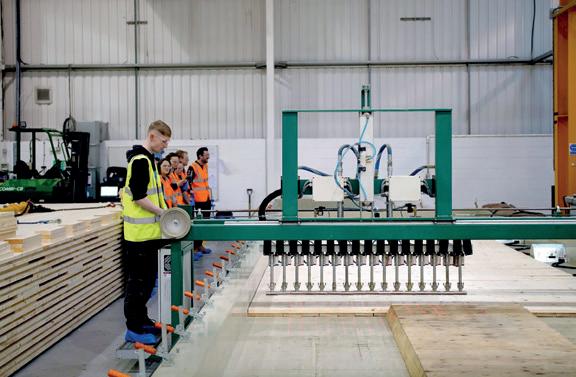
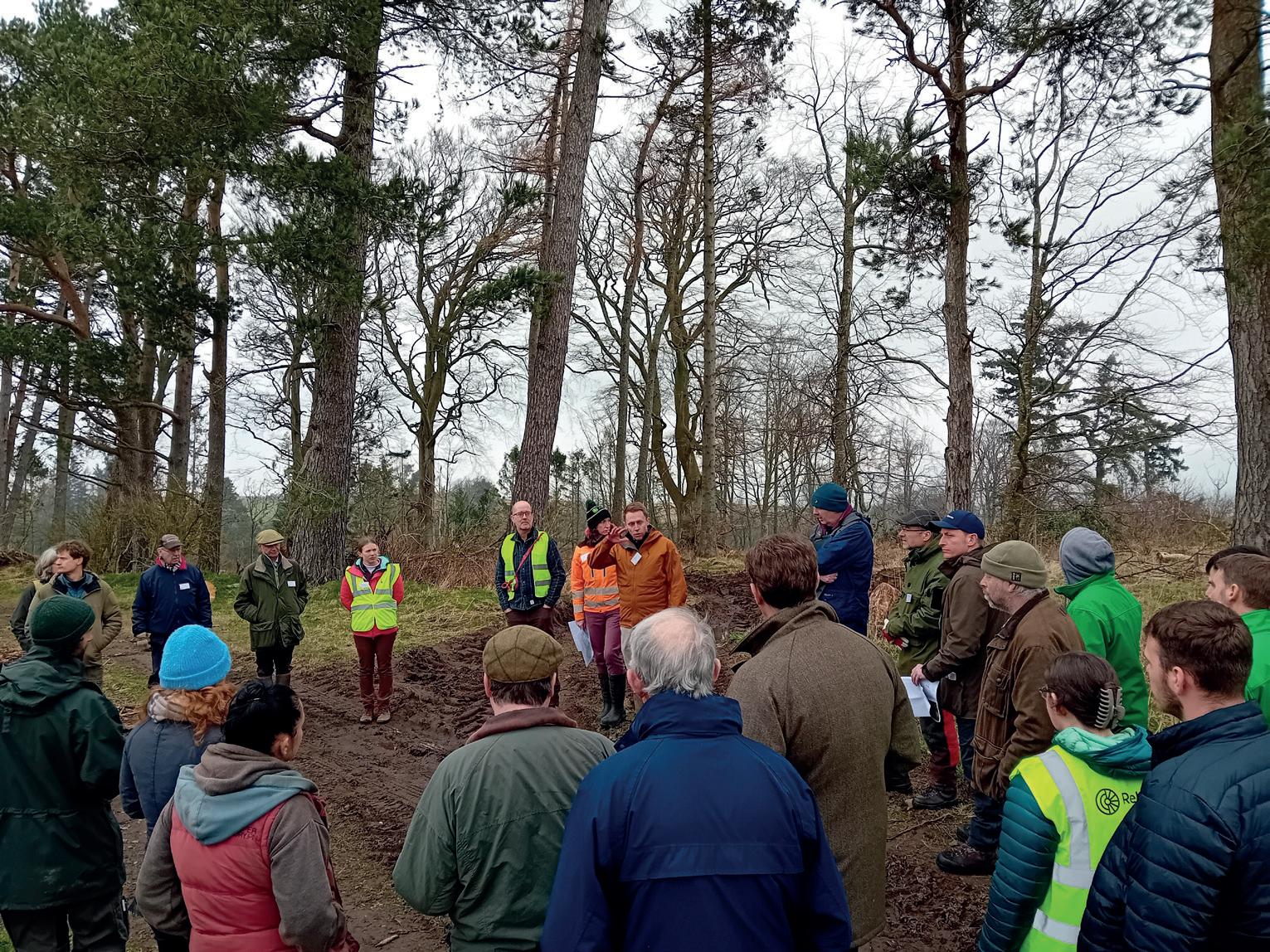
The Northwoods Innovation Programme supported a range of forestry innovators, including the Sylva Foundation as they improved the capabilities of their myForest Platform; Cloud Forest - the eBay for timber - by connecting them with sawmills in the region; forestry contractors diversifying their service offering by developing the business case and securing funding to invest in new equipment; and woodfuel resources to educate consumers on the benefits of softwood firewood and encourage uptake.
Over the past three years, Northwoods hosted 27 events both online and in-person that engaged over 660 attendees. These tackled challenges facing woodland owners such as diseases and deer, as well as exploring opportunities including biochar, local markets, and online sales platforms. These events, along with a regular newsletter featuring news and other events from the industry,
helped to share knowledge and connect woodland owners to the sector overcoming a commonly reported barrier, contact between woodland owners and the sector.
The work and thus the impact of the Northwoods Innovation Programme and other WiMFIF projects have been wide ranging. This is due to the flexibility of the WiMFIF funds, which recognised that while there is a central core of barriers to woodland management, approaches to tackling these need to deploy technological, social, and economic initiatives tailored to specific regions or addressing sector-wide challenges.
Woodland initiatives have a long history of engaging with regional bodies and governmental organisations to secure funding and support, and then delivering this support via specific project activities and business grants to create positive impact in the forestry,

farming, and timber processing sectors.
From the early 2000s to mid-teens, woodland initiatives were numerous and spread across the country. Working alongside other sector bodies, they left a positive legacy both in the landscape and with landowners and managers. Throughout the Northwoods Innovation Programme, we received numerous comments and re-engagement due to the positive legacy of the Northwoods brand in the region. Woodland initiatives have historically been a trusted source of impartial advice and support which landowners and managers remember for their meaningful impact.
As government funding pots, governance, and focus areas are increasingly regionalised, we as a sector must engage meaningfully with these bodies to ensure that the profile of our industry remains high, and that they continue to invest and support the forestry sector and our
timber processors to help achieve their objectives. Regional woodland initiatives are well placed and trusted vehicle to deliver sector support programmes to target financial support and achieve a wide range of objectives, whether it is rural business growth or nature recovery – perhaps even both!
Whilst the outcomes of the Government’s spending review will no doubt inform any central funding streams that can support initiatives such as the Northwoods Innovation Programme in the future, tight public finances and strict fiscal rules suggest that any future funding support could be hard to come by despite the positive, evidence-based benefits of this and similar programmes.
The initial outcomes of the spending review suggest that there will be a focus on leveraging private funding streams to support objectives around nature. Whilst nature markets are a well-talked
about pathway, they have yet to make a meaningful and sustained impact in the sector. Innovative collaborations such as Barbour and the National Trust, or Fatface and The National Forest offer alternative pathways. Many forestry businesses are investing heavily in the future of the sector, and projects focused on improving woodland management levels or public support for productive, resilient forestry could be part of this.
For our own part, Northwoods has secured funding for a pilot communication and education project to raise awareness and understanding of woodland management via the National Innovation Centre for Rural Enterprise (NICRE) based at Newcastle University and Warwick Business School, focusing on their objective of using digital solutions to tackle rural problems. We will be engaging with stakeholders to ensure that the impact of this work is high, and, if successful, that the project can move from pilot stage and increase its positive impact at a national level.
This project, like others, can only be progressed if funded and supported. Projects will have to align with regional objectives and will be more attractive with multiple funders. Indeed, this is most likely to increase the impact of the project and maintain the sector’s profile if managed correctly. Core funding, especially from organisations such as the Forestry Commission or DEFRA, helps attract other investment and funding.
Whilst Northwoods awaits announcements of central funding streams, we continue to advocate for the forestry sector in the region, identifying, and securing funding via alternative routes to maintain the momentum and networks reinvigorated through the Northwoods Innovation Programme.
The Northern Forestry Conference, taking place in Newcastle on 11 September, aims to explore the multifaceted benefits of trees and productive forestry with regional stakeholders with the objective to generating support, financial and in-kind, to deliver sectorbenefiting activities in the region. A number of regional stakeholders have already sponsored the event, thus showcasing how the sector can come together to advocate for its own future.
Please get in touch for more information on Northwoods activities including the Northern Forest Conference. rosanna.curtis@reheat. uk.com

A new £18m high-tech timber frame facility operated by Alexander Timber Design has opened in Scotland, utilising robots and precision engineering to produce 2,500 homes a year from homegrown timber.





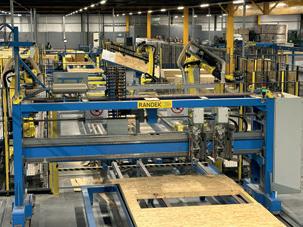
The First Minister of Scotland, the Right Honourable John Swinney MSP, has officially opened one of the UK’s most technologically advanced timber frame construction facilities in Irvine, Scotland.
The facility is operated by Alexander Timber Design (ATD), a company owned and run by Glennon Brothers. The £18 million investment in this new facility brings Glennon Brothers’ total investment in Scotland to over €80 million.
Located in Irvine, North Ayrshire, this cutting-edge manufacturing plant combines advanced robotics, precision engineering and the latest nextgeneration design systems to deliver high-quality Scottish timber homes, while excelling with world-class standards of efficiency, sustainability and resource maximisation.
Officially opening the new facility in April, Scotland’s First Minister John Swinney said: “Today’s opening is a symbol of the kind of future Scotland is building with high-skilled, high-tech and environmentally responsible next generation industries. This facility brings together sustainable construction, advanced manufacturing and regional economic development, placing Scotland firmly at the forefront of the green


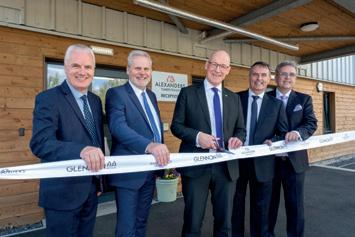
industrial revolution.
“It is an excellent example of the kind of economic opportunities that can exist that can help both grow our county’s economy whilst tackling the climate emergency. Quite simply, it is creating Scottish homes from Scottish timber.”
The factory uses Kuka robots and advanced technology to assemble timber frame panels incorporating insulation and other features, with an annual production capacity of 2,500 homes. ATD sources raw material from its nearby sister sawmill in Troon, which produces high-quality timber products for the construction industry as well as the fencing and packaging sectors.
The use of Scottish homegrown timber to build the frames is a unique feature, as most UK timber frame factories use imported Swedish timber.
Mike Glennon, Joint Managing Director of Glennon Brothers, said: “This is a very proud day for our company. We’ve always believed in the potential of Scottish timber and in the skilled people who make this industry thrive. With this facility, we’re investing not only in advanced technology, but in Scotland’s sustainable future. We are honoured to have First Minister John Swinney MSP here today to share this very positive story about
forestry, timber, and the outstanding economic and environmental benefits from which Scotland can prosper.”
Joint Managing Director of Glennon Brothers, Pat Glennon, added: “Today’s launch provides a real-world example for governments, developers, and consumers looking for greener alternatives. This facility offers a tangible example of how the timber industry can lead the transition to a low-carbon economy. It reinforces Scotland’s role as a leader in modern methods of construction, helping meet the rising demand for energy-efficient, affordable housing.”
As the UK construction industry is under increasing pressure to reduce its carbon footprint, the opening of this plant offers a scalable, sustainable solution that aligns with national and international climate goals. Timber frame construction is widely regarded as one of the most environmentally friendly building techniques available, offering lower embodied carbon, faster build times, and greater energy efficiency.
Glennon Brothers now employs more than 340 people directly across its four operations in Scotland, with another 170 indirectly employed in harvesting and haulage.

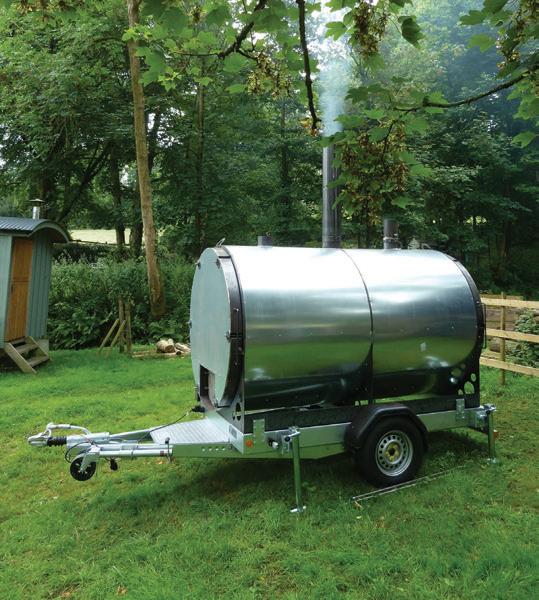









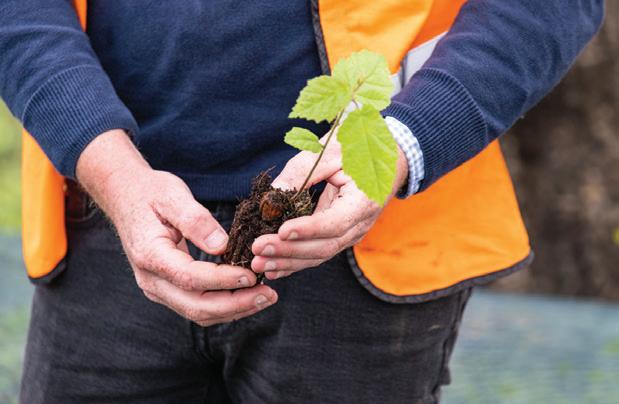
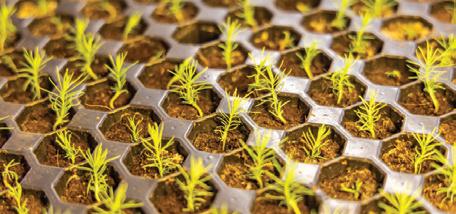
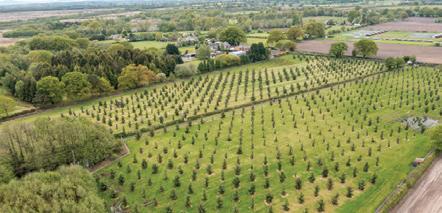

Confor’s Richard Hunter reports from the 2025 HIRP Conference, where conversations revolved around new ways to manage Hylobius abietis populations in the UK
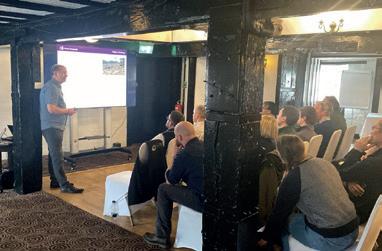
The Hylobius Industry Research Programme (HIRP) held another very successful conference in late April 2025. While the problem of the large pine weevil wasn’t solved on the day, several significant steps forward were taken.
The industry has oft relied on chemicals to reduce the destruction caused by the pest. However, it will not have escaped notice that the regulation process for chemical approval has become tighter. Additionally, due to the small size of the forestry market, it can take years for any manufacturer to recover the costs of research, development, authorisation and manufacturing via sales.
While we greet the emergency approval for Lanzarta with relief, we cannot rely on always having a chemical if we don’t actively undertake Integrated Pest Management. In order to demonstrate to the Chemicals Regulation Division (CRD) of the HSE that we need chemicals, and ideally a wide range at that, to prevent buildup of resistance, we must also be actively using non-chemical methods.
To that end, the speakers at the conference included Dr Minshad Ansari from Bionema, who spoke passionately about using entomopathogenic nematodes (EPM) and fungi along with a biocompatible soil wetting agent. The EPM are two different native nematode strains: Steinernema carpocapsae and Heterorhabditis downesi. The field trials conducted by Bionema show an 88%95% efficacy.
The next speaker, Bryan Limerick from Lallemand Plant Care, talked about the fugus Metarhizium brunneum. This
















product again has good results and can persist in the environment for two years post-application.
Koppert is a name many will be familiar with, having produced plant protection products since the 1960s. Koppert have being growing nematodes to protect a wide range of crops but have turned their focus onto forestry, working with Forest Research to test if nematodes can be applied via drones in place of hand application or purposeconverted timber forwarder.
The Biocontrol and Natural Products group from Swansea University led by Professor Tariq Butt gave a video presentation on Push-Pull strategy linked with a lure and kill method. By using oviposition attractants and repellents, the intention is to move weevils from one area and help concentrate them where a lure and kill device is placed.
Syngenta spoke about their newly released chemical Lanzarta, available under the CRD emergency approval (EA) system. It is important to note that an EA is often a positive step towards full approval. Syngenta need to demonstrate where and how much of the product has been used so it is important that all users feedback this data; we need to work with CRD not against them.
A key requirement of a EA is that there is no other product filling the same niche so Lanzarta cannot be applied in nurseries as Coragen can be used there. There is Forester as weevil treatment
which does fill the same niche but has a higher toxicity rating and, due to UKWAS requiring the use of the lowest toxicity rating, CRD accepted that this was not going to be conflicting product usage.
This led to the next steps by both industry and the HIRP group. The whole industry needs to get behind the Scottish Forestry Trust’s call for funding to support industry-directed research into our preferred method. The HIRP group will direct that research and has since met to organise a cost/benefit analysis of which of the already mentioned routes to follow.
Weevils are not a problem that anyone can ignore and certainly not a problem that we should look to others to solve. A landscape-wide approach to bring down the overall population is needed and that requires working together and funding from across the sector as we will all benefit from less weevils.
According to Forest Research, the UK has massive populations (we know that) and it was calculated that on the worst affected sites, there can be as many as 84,000 weevils per hectare: waiting for others to come up with the answer is not an option.
The conference was kindly sponsored by Bionema and Syngenta. Presentation slides and content from the day may be found on the Confor website (https://bit. ly/3yUlBEF).






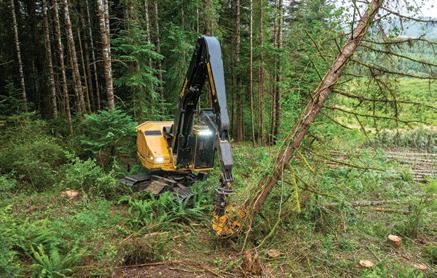


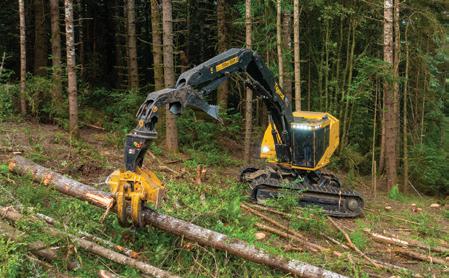





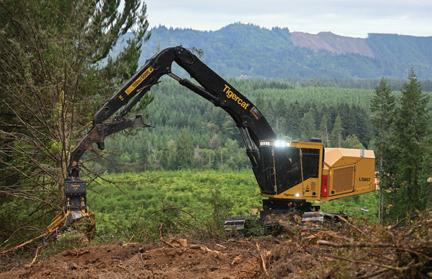


Fiona Angier takes a look at the innovative work being supported by funding from the Forestry Commission’s Tree Production grants.
Forestry Commission’s Tree Production grants are now open for their fourth cycle of funding to boost resilience and productivity in tree production. More than £16m has been made available over the initial three rounds of the Tree Production Innovation
Two projects from the 2023 TPIF round looked at weed control. Forest nursery weeding is heavily reliant on a diminishing manual labour resource and an everdecreasing range of herbicides.
Earth Rover Ltd looked at the feasibility of using AI and concentrated light for weed control, initially developed for the vegetable and salad market.
Equipped with state-of-the-art image processing via eight built-in cameras, AI and GNSS RTK satellite navigation, CLAWS™ (Concentrated Light Autonomous Weeding and Scouting) is a lightweight, autonomous field robot using concentrated light weeding.
At less than 450kg, resulting in a similar pressure to walking, the robot allows for longer access across a wider range of weather conditions and soil wetness, often allowing earlier weed zapping. Light is not affected by wind or rain either.
Fund (TPIF), Tree Production Capital Grant (TPCG) and Seed Sourcing Grant (SSG).
£4.1m is now available for 2025 to equip nurseries to enhance domestic tree and tree seed production and help meet the ambitious statutory tree planting targets for climate, nature and people, while supporting green jobs and helping to boost growth in the sector.
This will help ensure we plant treescapes that are resilient to stresses including climate change and pests and diseases, while bolstering capacity.
A wide range of projects have benefitted from the three funds thus
• Tree Production Capital Grant (£2m): 25 June
• Tree Production Innovation Fund (£1.5m): 9 July
• Seed Sourcing Grant (£600k): 19 August
far, and their various outcomes have been shared via knowledge transfer events, case studies and blogs. At a recent webinar, a number of projects were showcased with a focus on weed control, grading and mycorrhizae.
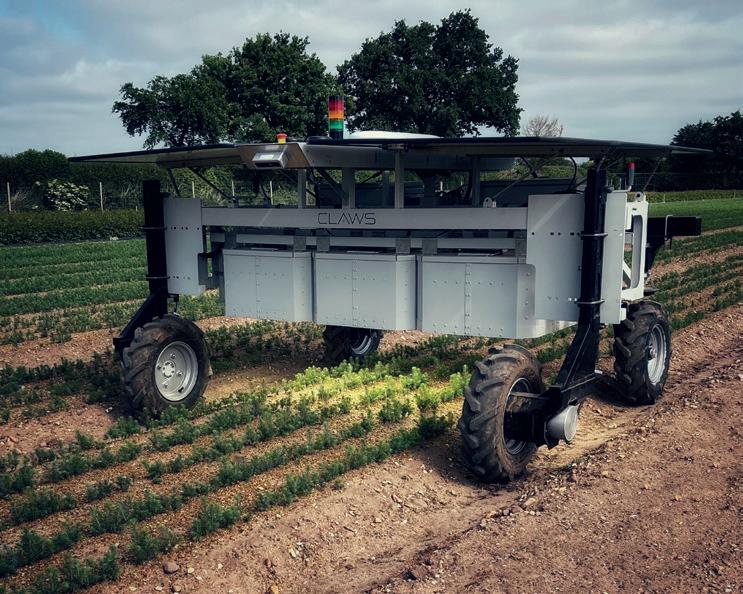
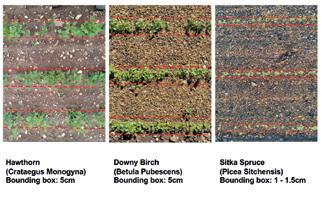
Initially focussing on inter-row weeding, AI was used to determine “rows” in a seedbed. A protection band is then overlaid the “row” depending on the species growing. Light pulses then target anything growing outside the protection band with a 90% kill rate. The more established a row the better the protection band coverage.
Working with J&A Growers, Earth
Symbiotic ectomycorrhizal fungi accelerate tree growth with the fungi providing nitrogen, phosphorus and water to the tree in return for sugars given back to the fungi. eDNA shows that these symbiotic fungi do not move much more than 3-5m from existing trees so planting on new sites and poorer land would benefit from addition of symbiotic fungi.
Rhizocore Technologies collect target fungi species based on ecological traits linked to forest productivity. This strain library is cultured and preserved in cold storage before liquid fermentation technology allows growth of 3,000+ doses of mycelium per litre. This is then pelletised with current production capacity now at 3m pellets per year.
Improved growth and survival are seen in both commercial and regeneration forestry - 23% growth
Rover are looking to help forest nurseries improve their efficiency and productivity, while also reducing their environmental impact.
Just three of a potential 30 tree species grown in nurseries were used in these tests. Next steps include working with a wider range of species to calibrate more protection bands and adapting to more bed layouts, including gantrys, glass houses and vineyards.
This AI weed detection and classification tool from University of Warwick has focussed its learning on three of the most common weed types found in forest nurseries - groundsel, cranesbill and meadowgrass.
Using YOLO v8 (You Only Look Once computer vision) to detect weeds with three RGB-D cameras on an integrated robot platform, it can now track these labelled weed species, as well as adjust the level of herbicide spray required to kill depending on growth stage. Germination and herbicide trials determined the most effective doses of
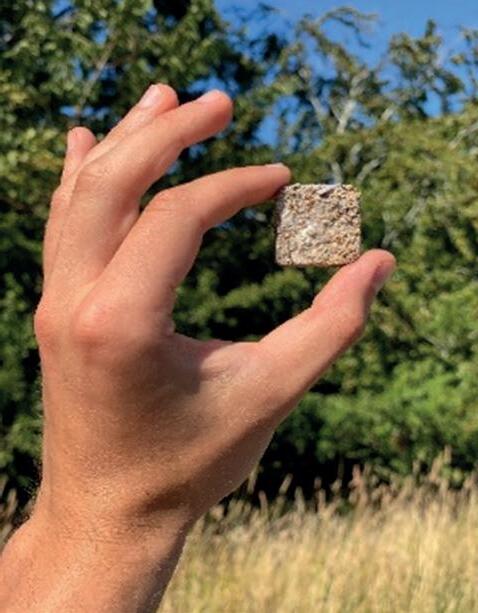


improvement in Sitka on pastureland; 13% growth improvement of downy birch in upland moor; and 17% improved survival of Pinus planted on spoil.
The most commonly planted tree species can benefit from these symbioses, including spruce, pines and
common broadleaves. Improved growth was also seen in nursery trials with beech.
The minimum size of order has grown from an initial 200 pellets to currently 1,000 and next season will again grow to 10,000 pellets.

glyphosate needed at both 2-leaf and 4-leaf stages.
A 90% reduction in herbicide use is seen along with enhanced seedling development.
Future developments will aim to enhance weed targeting accuracy and more species by integrating higherprecision sensors and optimizing hardware configurations while keeping a cost-effective approach. A new weeding manipulator tool will be introduced to increase operational speed and
adaptability across varying weed densities and species.
Combining capabilities of these two projects will accelerate the advancement to a robust high-impact solution for precise weed classification and the targeted application of concentrated light via an autonomous robot.
By bridging innovation and implementation, any collaboration would enhance the commercial appeal of the technology.
Another time and labour-intensive forest nursery activity is in the grading shed, separating bare root tree seedlings so they can be graded by stem and height and then bundled for onward use. Two 2022 projects have been looking at this issue.
University of Lincoln worked in partnership with J&A Growers to mimic the accurate, firm and safe grasp types of workers to singulate seedlings, and then used intelligent computer visualisation to grade them according to a range of decision criteria – known and unexpected.
Five grasp types were identified, and a soft gripper inspired by fish fins was developed to replicate human grasp types and apply the required grip forces


to singulate tree saplings in the nursery.
YOLOv8 was used to develop the singulation algorithm with computer recognition to (a) split a large bunch, then (b) splitting a smaller bunch to
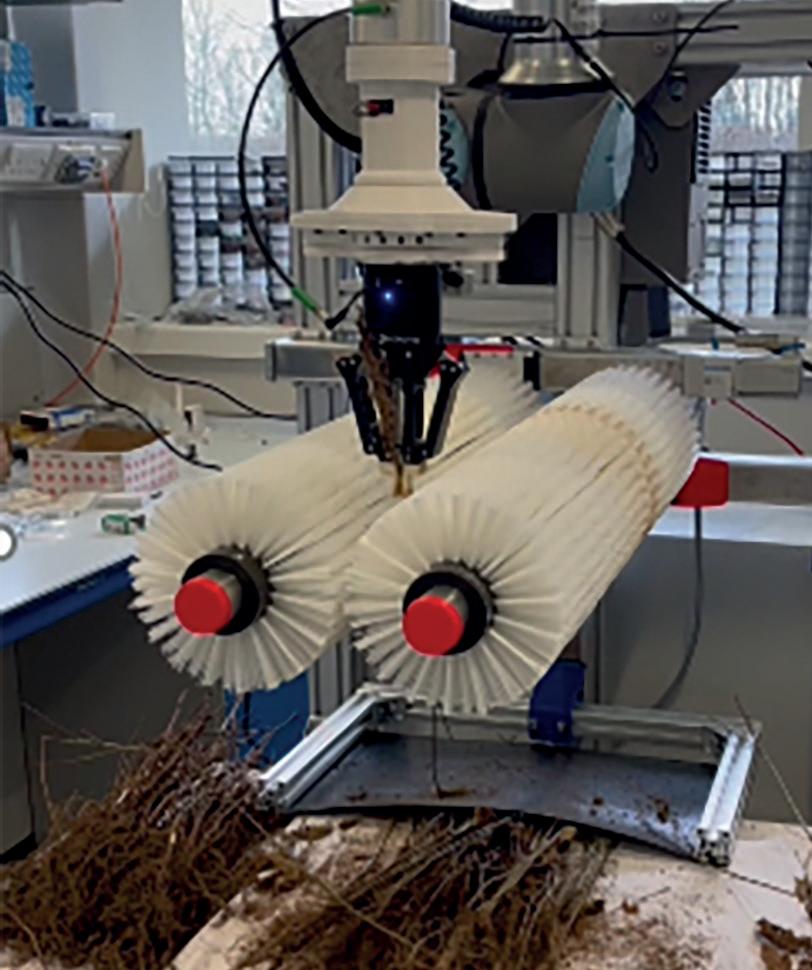
ultimately (c) picking up a single tree. Additional work was done in different light levels, angles, numbers of trees in a bundle, as well learning how to deal with unexpected situations.
The vision of this project was to automate the system for taking tree bundles as harvested from the field to graded bundles ready for despatch, a modular scalable system capable of meeting increased demand as well as increased precision and data traceability. Warwick Manufacturing Group worked with a consortium of growers.
The first module looked at recognising, locating, grasping and moving the field harvested bundles from the deposit zone along to the cutting station conveyor. The string holding the tree bundle together is recognised by cameras using colour, the bundle is then grasped by a gripper and the string cut by an effector.
Automated separation of the trees within the bundle uses cameras to provide 3D coordination for robotic manipulators to grasp the target tree smoothly away from the rest of the bundle. Brush rollers with segmented stiffness options currently help to separate trees picked up together to leave single trees for grading.
Achieving successful singulation marked a key milestone in the project and validates the core functionality of the system.
The focus is now on scaling and optimising the process – targeting a singulation success rate of over 85% and reducing cycle time. These two steps are critical in accelerating the path to commercialisation and support the sector.































A school-leaver upskilling with chainsaw qualifications is the latest awardee to benefit from the Forest Industries Education & Provident Fund.
Max Barratt was employed by Lexham Estate a school-leaver to enable him to progress in his career in forestry. This not only helps the estate in maintaining their 550 acres of parkland and mixed woodlands, but also surrounding Norfolk landowners should he choose to continue his career elsewhere.
The estate paid for his chainsaw maintenance and cross cutting course in September, and he is now more involved with the forestry operations but also wants to expand his knowledge in the forestry sector.
Max undertook a Level 2 Certificate in Felling small trees with finding from the Education Fund. He has given a day-by-day account of his course and subsequent assessment:
We spent a couple of hours in the workshop being told about different felling cuts we would learn and ran through the health and safety requirements for the felling course.


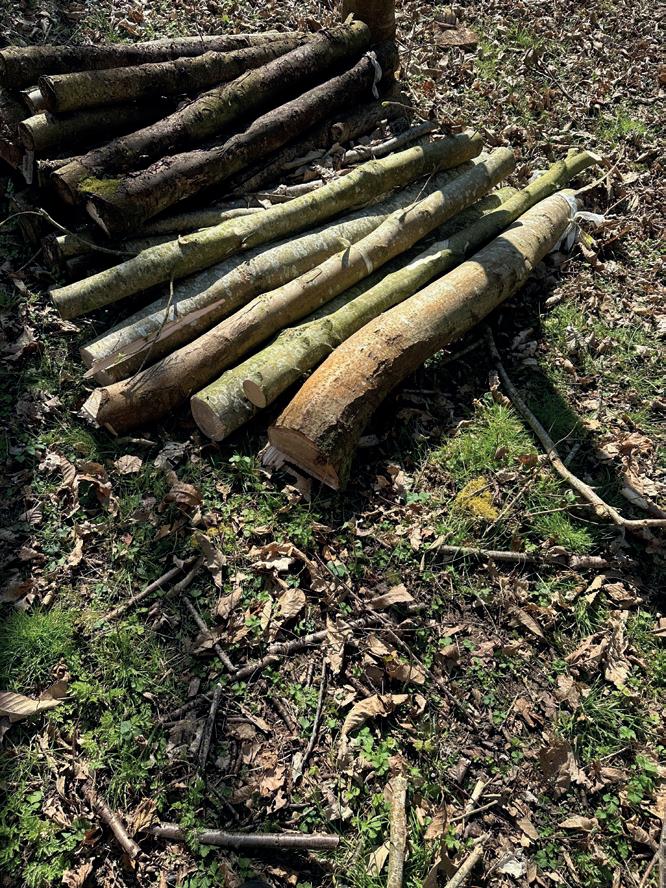
equipment that I was wearing and what I was going to do in my assessment.
• Basic Fell - used when the tree is standing up straight and it will fall the way you want it to go.
• Dog tooth - used when the tree is leaning heavily with the possibility of it barber chairing and injuring the tree faller.
and felling levers.
• Split level - used for heavily leaning trees and trees you want more control of.
We then headed to Brett’s Wood, and we were shown in person how to use these cuts.
We went straight to Brett’s Wood for more practice. I found it interesting and informative and enjoyed being left on my own to complete the tasks given.
At the end of the day the instructor asked us some questions from the manual which we had to answer.
More practice and skill improvement, as well as preparing for the assessment.
The instructor took me to two trees and asked me to use two cuts of my choice. I chose the basic felling cut and the dog tooth cut. I talked him through each cut and felled the trees.
After I had felled the trees I snedded the trees out (removed the branches) and then cut them into 1.4m lengths and stacked them where I was told. We had a chat, and the instructor said he was happy with how safe I was and happy with my cuts, he told me I had passed the assessment.
This course is now enabling me to do more felling work on the Lexham Estate and I am now becoming a valued member of the forestry team. Many thanks to the Education Fund for supporting the estate to let me attend this course.
The Education Fund supports career development for Confor members. Applicants can be individuals or companies, they must present clear reasons for doing the course, show how it will further their careers, and provide some background information.
Applicants can be at any stage in their careers and can pursue a wide range of training including attendance at
conferences, participation on specialist courses (e.g, ecology, tree health, timber technologies, GIS) or management skills or practical training (e.g. chainsaw, drones, mechanical).
Trustees are also interested in requests to co-fund with other bodies as this may broaden the scope of training opportunities available. Awards can only be offered prior to
training. It generally takes about three weeks to process an application, with offers of up to £1,000 per application. For more details and an application form, visit the Confor website.
The Provident Fund is available in cases of hardship, for example long-term illness, personal injury or death. It has more flexibility, and all applications are treated in confidence by the Trustees.
In previous FTNs I’ve spoken about how unusual the forestry sector is, with so much control and influence in the hands of politicians and civil servants. This control extends to the international arena as well, where discussions on the definition of sustainable forest management or the role of trees and timber in achieving net zero are undertaken by officials and politicians. By uniting the supply chain, Confor has strengthened the private sector’s voice, and we are using that coverage to develop solutions to sector-wide challenges like recruitment into the industry and the provision of certain types of training. As forestry becomes a bigger issue internationally, for example in meetings on climate and biodiversity, it is vital that the private sector has a voice there too.
With that in mind, I was pleased to be an observer last year at a meeting of the prestigious United Nations Food and Agriculture Organization’s (UN FAO) Advisory Committee on Sustainable Forest-Based Industries (ACSFI). The ACSFI brings together a select group of CEOs from organisations similar to Confor across the globe. It meets with officials from the UN FAO and provides an industry view on international discussions about forestry and wood.
This year I was invited to join the Committee. I was intrigued to hear at its annual meeting that future wood supply is still a big issue globally. Three years ago, Confor and Scottish Forestry part-funded a report commissioned by UN FAO which demonstrated that increased productive forest creation would be required to meet the growing world demand for timber. This report was launched at COP27 by then Scottish forestry minister Mairi McAllan and was key in raising domestic awareness of the vital issue of UK timber security.
It was also fascinating to hear that other countries face similar challenges to those we do. In the EU, trade bodies along the supply chain are working more closely together to strengthen their collective voice – similar to the Confor model. They are concerned that the EU only considers forests in the context of other policy areas like net zero or nature, and such an approach is likely to further restrict timber supply.
In Sweden, the area of productively managed forest is in decline as the main political parties are prepared to accede to demands from the Green Party for increasing nature targets in return for political support. Even in Sweden, the forest industry is not a sector the larger

Confor Chief Executive Stuart Goodall was invited to join the UN FAO’s Advisory Committee on Sustainable Forest-Based Industries’ annual meeting in New York City.
parties feel is important enough to fight for.
In light of the above, I proposed that the ACSFI and FAO should undertake work into making forests more productive for timber while not turning our back on environmental benefits.
Global shifts in wood-using capacity, particularly in pulp and paper, are having major impacts as production has moved from Scandinavia and North America to South America. The loss of market for sawmill co-product and small roundwood has resulted in sawmill closures in America, and a drive towards biomass, especially wood pellets. Unusual bedfellows like environmental NGOs, policy makers and downstream industry agree that this is suboptimal for carbon, jobs and economic development, but forest owners are just pleased to have a market – including Drax in the UK.
In an echo of Confor’s recent work on stakeholder engagement,
countries as far apart as Brazil and New Zealand spoke of the importance of community engagement and the forestbased industry’s “licence to operate”. Everywhere, forestry is a highly political issue and one where politicians are increasingly sensitive to the views of those outside the sector.
There were a variety of views on “nature credits”, with a few contributors questioning whether credits will persuade forest managers not to manage and produce timber products. In New Zealand, where the market is relatively well-developed for carbon, it was noted that the carbon price has fluctuated significantly in response to government policy announcements.
There was also an interesting presentation on the potential use of Artificial Intelligence (AI) in the forestry and timber sector, and in particular Agentic AI. AI of course requires there to be accessible data in an electronic form and, as a colleague from South Africa said, there should be an ‘AI sandwich’ with people checking the data going in and what’s coming out. The benefits of AI in manufacturing processes appeared more tangible than for forestry management where collecting useful data can be expensive, especially given the range of data that is often required.
The best advice I heard was to take advice from someone who has looked into the opportunities in more detail and who can hopefully provide useful insights. The Committee also discussed industry’s influence at the Climate COP in Brazil and the Forest and Climate Leaders Partnership work on Principles for Responsible Timber Construction –events and issues that will impact on our industry now and in the future.




Seán Lenihan, Kestrel Forestry Consultants Ltd, shares the latest forestry updates from the Republic of Ireland.
One of the most devasting storms in Irish history occurred on 24 January 2025 when Storm Eowyn made landfall. People who remember Hurricane Debbie in 1961 maintain that it was worse, and in terms of loss of life it was. However, Storm Eowyn broke the Irish windspeed record when a gust of 183km/hour was recorded in Connemara, and in addition broke many other regional long standing wind speed records.
Besides the argument that Debbie caused more destruction to buildings and infrastructure back in 1961, there is no doubt that Eowyn was the worst storm ever to hit Irish forestry. At the time of writing, the Department of Agriculture, following the completion of surveys using satellite imagery, believe that over 24,000 hectares of mainly coniferous plantations have been levelled.
The volume of blown timber associated with this area is estimated at over 10 million cubic metres, with the majority of the damage occurring in Sitka Spruce plantations of 20 years plus. The Department further estimate that the volume blown is divided almost equally between the private sector and Coillte. When one considers that the total volume harvested in the Republic of Ireland in 2023 was 4.3 million cubic metres, Storm Eowyn has blown down two and a half times our national annual harvest.
The impact on private growers who had the foresight to plant their land 20 years ago, and were looking forward to significant tax-free clearfell revenues
within 10 years, is self-evident. The impact on Coillte - Ireland’s biggest forest owner - and their financial projections for the next 10 years is also very serious. In a statement released in early May, the company estimated that Eowyn caused €60 million worth of damage to its forest estate.
Naturally, prices paid by the processors which were at a 10-year low prior to the storm are not going to increase for the next few years, or however long it takes to harvest all the blown volumes. The impact on future volumes for the processing industry after the storm timber has been cleared are also obvious.
In the short term there are serious concerns about the availability of harvesting infrastructure, which had become an issue even before the storm. Many contractors had reduced their fleet size due to a scarcity of labour and/ or uneconomic harvesting rates being paid by the industry. Now with over 10 million cubic metres of blown timber to be harvested in addition to the normal planned operations for unaffected
plantations, it is hard so see how it can be achieved in the optimum time.
Forest Industries Ireland (FII) maintain that the Irish processing industry can increase capacity by 30%, and that 30 new processing machines have arrived in Ireland to help deal with the blown timber. There has also been interest from European buyers, mainly Baltic, in harvesting the timber and shipping it back to their home countries, and a consignment of logs windblown logs was recently shipped to Belgium.
However, harvesting windblown timber takes more time and is more expensive. Timber left on the forest floor too long will degenerate in quality and weight, and is more vulnerable to attack from disease and pests. The spruce bark beetle Ips typographus which has devastated forests in Europe, and is currently present in the SE of England, targets trees under stress including windblown trees.
The longer it takes to complete the windblow harvest the chance of a potential infestation by Ips increases. www.kestrelforestry.ie




Michael Healy-Rae TD from County Kerry was appointed as a Junior Minister at the Department of Agriculture with special responsibility for forestry in February this year.
Mr Healy-Rae owns almost 40 hectares of mainly coniferous forestry and takes an active role in the management of his plantation. To date he has said all the right things but has been strongly criticised recently by the Chairman of the Forest Wood Producers Association for not doing more to address the issues arising from Storm Eowyn.

In addition, he recently advocated that afforestation should be allowed on peatlands again, which did not go down well with Environmental Agencies or indeed the general public. It was especially surprising as nobody







or certainly no sizable majority of the industry were lobbying for a return to peatland planting. There are many other issues facing the industry that the Minister could, and should, look at but this was not top of the list.
We wish him well, and trust he will be better advised from now on.





The University of Cumbria is home to the National School of Forestry and has a strong reputation for producing award-winning, professional graduates who now occupy some of the most senior positions in the forestry and woodland sector.
To discuss your training needs and how to sponsor learners on the apprenticeship, request a call from our business team.
Email: apprenticeships@cumbria.ac.uk
Visit: cumbria.ac.uk/professional-forester
Call: 01228 888 726



Earn your MSc in Forest Science and master advanced forestry skills amid the stunning Lake District, where you’ll tackle global challenges of climate change and biodiversity through cutting-edge research and hands-on experience. Designed for those with science backgrounds, this programme integrates the latest silviculture technology with ecological research, preparing you to excel in the dynamic forestry sector of tomorrow.
Email: enquirycentre@cumbria.ac.uk
Visit: cumbria.ac.uk/postgraduate
Call: 01228 588 588

Scotland’s Finest Woods Awards is marking 40 years of celebrating all that is great about the country’s woodlands and forests.
Scotland’s Finest Woods Awards celebrate the people involved across all types of Scotland’s woodlands who through their dedication make them the finest examples of a key national natural resource.
The Awards started at a time when many of the large estates employed their own foresters, and they focused on growing quality timber. These woodlands provide us
Clockwise from right: Winner of 2024 Fountains Forestry; Award Winner of the 2024 John Kennedy Trophy, Cawdor Estates, Nairn and Tim Stead’s grave at Wooplaw.
with many of the examples of quality woodlands we have today. Commercial forests cover about 1 million ha of Scotland and contribute £1.1bn GVA, employing more than 10,000 people.
Scotland’s Finest Woods’ Quality Timber category has three awards to reflect the importance of good forest management.
But Scotland’s Finest Woods Awards are unique because they demonstrate the broad range of forestry across Scotland, with the strong origins in productive forestry as well as other great examples of woodland management across society.
The Tim Stead Trophy, awarded to the best community woodland in the country, is an integral part of this. And this year also marks 25 years since the sculptor,
whose main medium was wood, passed away.
Tim Stead helped set up the Wooplaw community woodland near Lauder in 1987. It was the first of its kind in Britain and he is laid to rest within its peaceful setting.
His widow, Maggy Stead, said: “People have latched on to it and been inspired to create community woodlands across Scotland. Now, Scotland can be proud of what has been achieved over the past 40 years or so.”
She added: “What I witnessed was that for Tim, planting hardwood forests, managing woodlands, making children aware of the importance of planting trees, these aspects of man’s husbandry with nature, were as important to him as making art.”
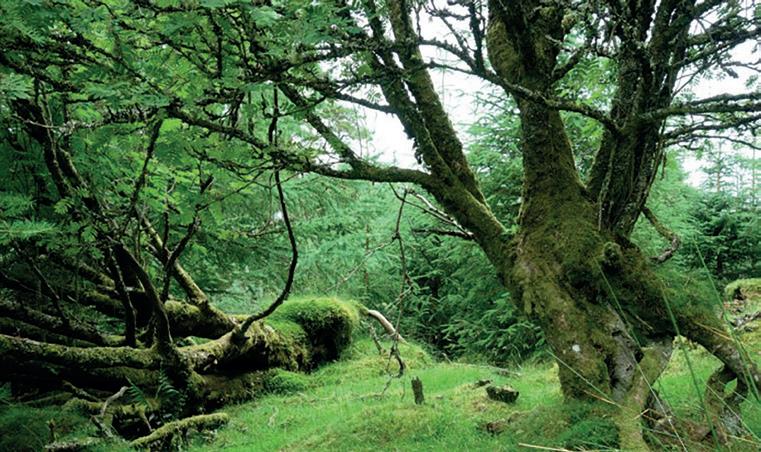
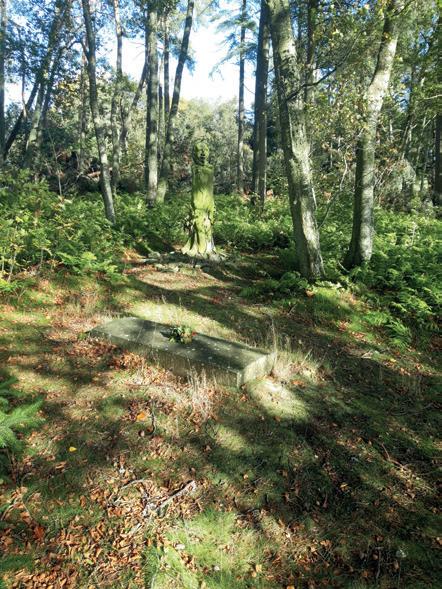
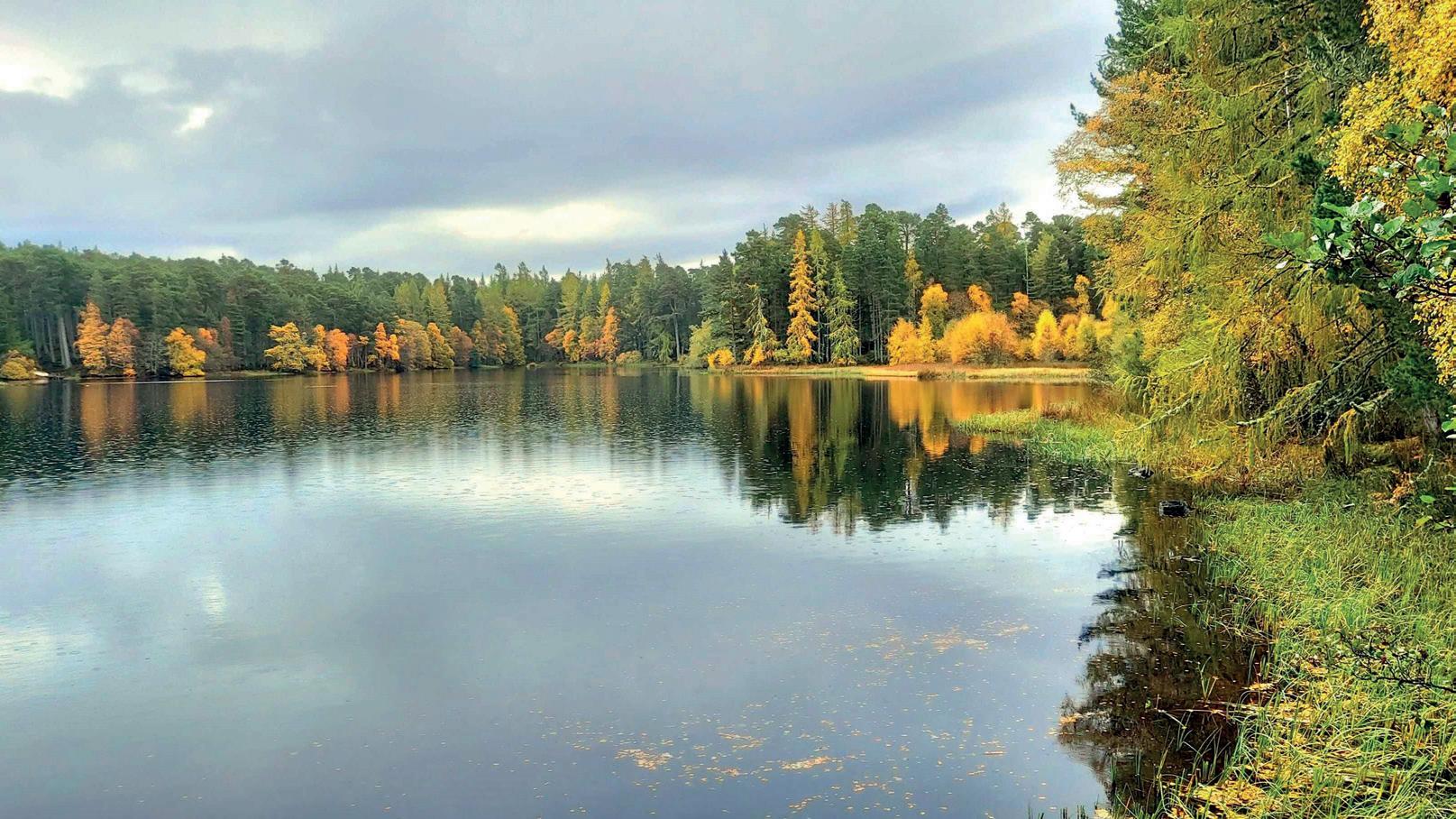
Origins of the awards
In 1985, a notice in Scottish Forestry, the Royal Scottish Forestry Society’s (RSFS) Journal announced: “A new scheme of forestry awards is being instituted by the Royal Highland and Agricultural Society of Scotland with the support of the Forestry Commission, Timber Growers U.K. (Scotland), the Royal Scottish Forestry Society and the Institute of Chartered Foresters.
“The purpose of the scheme is to focus public attention on the increasing importance of the forestry industry in the rural and national economy; to give credit to the best achievements of forestry management for the production of timber; to encourage owners to make provision for the enhancement of the landscape, conservation of the natural habitat, recreation, public access and integration with other land use.”
And thus, Scotland’s Finest Woods Awards were born. The first competitions were held in 1986. Then, in 1999, a fuller

industry. Finally, an independent charity was established in 2005 to run the awards.
A broad focus
Simon MacGillivray was a director when the Scotland’s Finest Woods was set up as a standalone charity in 2005. He and his colleagues saw this as a point where the focus had to broaden from not just timber production and farming to schools and the community, including the Tim Stead Trophy.
The Gardening Scotland Show at Ingliston was chosen as the new venue for the awards ceremony, with some





Above: At the Royal Highland Show and The Tim Stead Trophy
added celebrity. Simon said: “We wanted a public audience for forestry, using the RSFS stall.
“Jim McColl from the (BBC) Beechgrove Garden gave the awards and when you get that celebrity it mixes well with the public. They got involved and were able to ask for advice about trees in their gardens.
“Jim McColl was a star for us and would go out with me to schools as well.”
Charlie Taylor is a three-time winner and then became a judge, allowing him to the see the benefits of entering from both sides.
His wins came with his work with the then Forestry Commission Scotland –the Hunter Blair Trophy for Silvicultural Excellence for Faskally Forest, Perthshire in 1996, and the John Kennedy Trophy for Multi-purpose Forestry for Allean Forest in 2000 and Kinnoull Woodland Park, Perth in 2003.
He sees the wins as a team effort, something he noticed as a judge in the Quality Timber section, which has made him positive about the future.
He said: “You are there as a judge to have a conversation and share knowledge. In the last few years there has been a lot of new, younger forest managers, sharing their experience.
“One of the things for people in forestry is they don’t tend to blow their own trumpet. Scotland’s Finest Woods Awards gives folk recognition.”
Still growing
For 2025, there is a new category of Urban Forestry, as well as the existing categories of Quality Timber,
Farm Woodland, New Native Wood, Community Woodland, Climate Change and Schools and Early Years.
Shireen Chambers was also once a judge for the awards, and is now Chief Executive of Future Woodlands Scotland, which has just been announced as the sponsor of the new Urban Forestry Award.
She said: “Scotland is one of the most urban-centric countries in the world; over 80% live in the Central Belt. Getting kids out and understanding urban forestry is important, it can be where they get their only education about trees.”
Mairi Gougeon MSP, Cabinet Secretary for Rural Affairs, Land Reform & Islands, presented many of the Awards last year. She said: “40 years of the Scottish Finest Woods Awards is a fantastic achievement – and I want to congratulate everyone involved.
“It’s no wonder that the awards are thriving and that is down to the passion and dedication of all those who work so hard across all aspects of forestry and woodlands in Scotland.
“It’s fantastic to see the categories for the awards grow, showcasing the wide variety of great work taking place across both rural and urban Scotland. It’s particularly great to see the involvement and recognition of the work young people are doing, hopefully as they become our foresters of the future.”
Jean Nairn, Executive Director of Scotland’s Finest Woods, said the future looks bright: “The Trustees remain committed to encourage the good management of all types of woodland in Scotland.
“Our roots in recognising the best practice and importance of Quality Timber have grown to champion all forms of woodland and forestry, whether a school or urban wood, a farm woodland,



new native wood or community project – all with the underlying importance of trying to mitigate the climate emergency.”
The early winners and the original trophies
In 1986 Ardgarten Forest (managed by the then Forestry Commission, now Forestry and Land Scotland) won the John Kennedy Trophy for Multi-purpose Forestry.
This Award is for multi-purpose woodlands where a number of different activities are taking place within a woodland or forest. For example, in addition to timber production, these could be recreation or a visitor centre and/or conservation. The size of the forest or woodlands is not restricted, but must be appropriate to and capable of sustaining the stated objectives.
The John Kennedy Memorial Trophy, a splendid silver rose bowl, was presented by the Forestry Commission for a
competition to encourage ‘forestry in harmony with the environment’ and in memory of John Kennedy, the Forestry Commissioner responsible for forest management, who died in 1985.
Also that year, The Duke of Buccleuch (for Drumlanrig, Dumfriesshire) won the Hunter Blair Trophy for Silvicultural Excellence. This is awarded for a stand or compartment of trees where the exemplary use of forestry techniques, practice and management results in high quality timber production.
The silver salver was originally presented by Sir James Hunter Blair of Blairquhan Castle to the Royal Scottish Forestry Society as a prize for an ‘annual Competition for Woodland Management’.
Sir James was a keen forester serving as a District Officer with the Forestry Commission in the 1920s before returning to Ayrshire to manage the family estate at Blairquhan. Here he pursued his enthusiasm for silviculture and took great delight in testing forestry students and more experienced foresters on the identification of the more unusual specimens to be found at Blairquhan.
The distinctive Dulverton Flagon, which today is only awarded at the judges’ discretion, was first awarded to the winners of a sustainable woodland management competition to promote The Forestry & Woodland Code. The flagon was generously provided by the then Lord Dulverton, an enthusiastic advocate of forestry in Scotland and in the House of Lords.
The competition ran from 1986 to 1994 but the trophy had a subsequent outing in 1999 when the southwest England region of the by then re-titled Timber Growers Association provided it as a prize at Exeter Races when Walter’s Destiny romped home to snatch the coveted flagon!


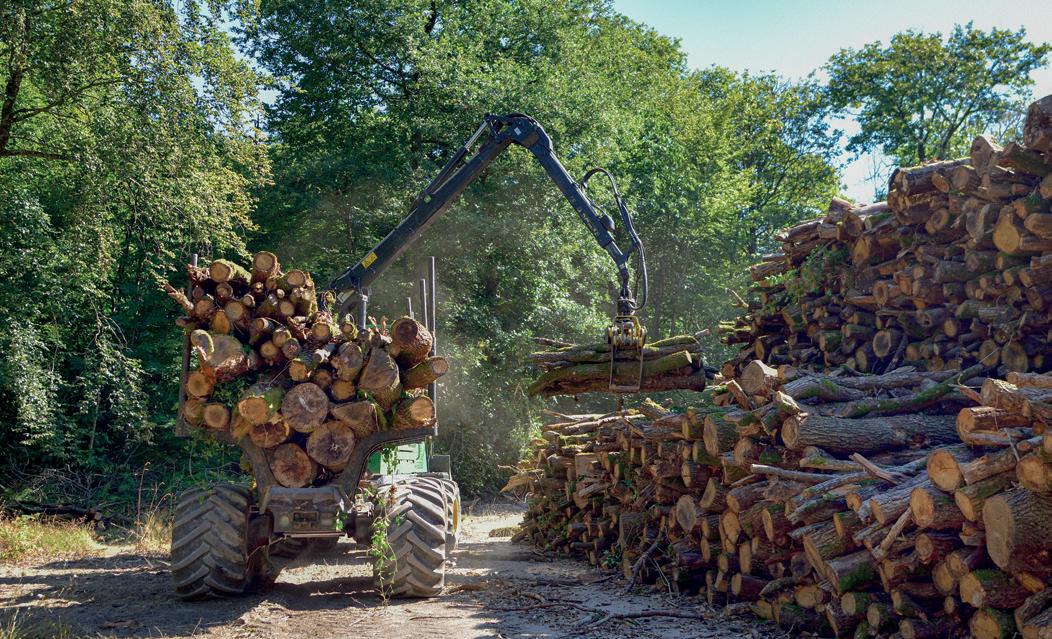
FISA CEO Gillian Clark invites you to mark your calendar for the 2025 Annual Summit on 17 September.
The Forest Industry Safety Accord (FISA) is pleased to announce that our 2025 Annual Summit will take place on Wednesday 17 September 2025 at the Rheged Centre in Penrith. You are invited to join us and participate in our safety-focussed annual event which has proved to be highly informative over the years.
Doors open at 12:00 with the summit commencing with a networking buffet lunch at 12:30. The formal proceedings begin promptly at 13:30. For those unable to join us at the lunch, we encourage you to arrive in time for the start of the afternoon session.
This year’s summit will centre on the critical theme of Risk Zones. Recent analysis of accident and incident data has revealed persistent safety challenges across the sector. The summit will provide an opportunity to review current practices and consider what enhancements can be made to the safety protocols to help address these concerns.
The afternoon agenda will feature:
• In-depth exploration of Risk Zones in forestry operations
• Summary reports from all FISA
• Introduction of new FISA Safety Guidance
• Launch of updated industry signage
• Relaunch of the FISA Safety Award
An interactive Q&A session will also be incorporated into the afternoon, giving attendees the chance to engage directly with FISA representatives. We encourage participants to come prepared with questions and insights to share from their own operations.
Registration for the summit will be open in the coming weeks – look out for links via the FISA e-update and other channels.
The Forest Works Manager (FWM) Competency Framework continues to serve as a mainstay for safety management in our industry. Developed by the dedicated FISA FWM Working Group, this framework aligns with FISA’s Guide to Managing Health and Safety in Forestry (GMHSF) and establishes core health and safety competencies for those with FWM responsibilities.
The framework has gained widespread recognition and implementation across the sector, including its adoption as the foundation for an apprenticeship program. It offers









a structured approach to identifying appropriate training resources and providers that meet FISA’s rigorous standards.
Recently enhanced, the framework now includes links to courses and training providers to help professionals locate suitable training opportunities. The FISA FWM Working Group continues to evaluate and add new training options as they are submitted and reviewed. It is then up to the individual to decide which course best suits them.
FISA Safety Guidance document 805, Training and Certification, serves as an additional resource within the FWM Competency Framework, outlining forestry industry training standards, terminology, and expectations. This document provides valuable guidance on planning, delivery, assessment, and record-keeping for training programs.
Guidance, not recommendation
While FISA provides guidance through the framework, it’s important to note that we signpost rather than formally recommend specific providers. Training organisations may reference their inclusion in the framework based on alignment with FISA Safety Guidance.
As stewards of a trusted industry brand, FISA maintains clear guidelines for logo and brand usage. We actively monitor and address any misrepresentations to ensure that references to FISA maintain the integrity our stakeholders expect and deserve.
See you at the Summit
We look forward to welcoming you to Penrith in September for what promises to be an informative and impactful summit.

Collection of a soil sample for eDNA metabarcoding to identify resident fungi and invertebrates of the forest floor.





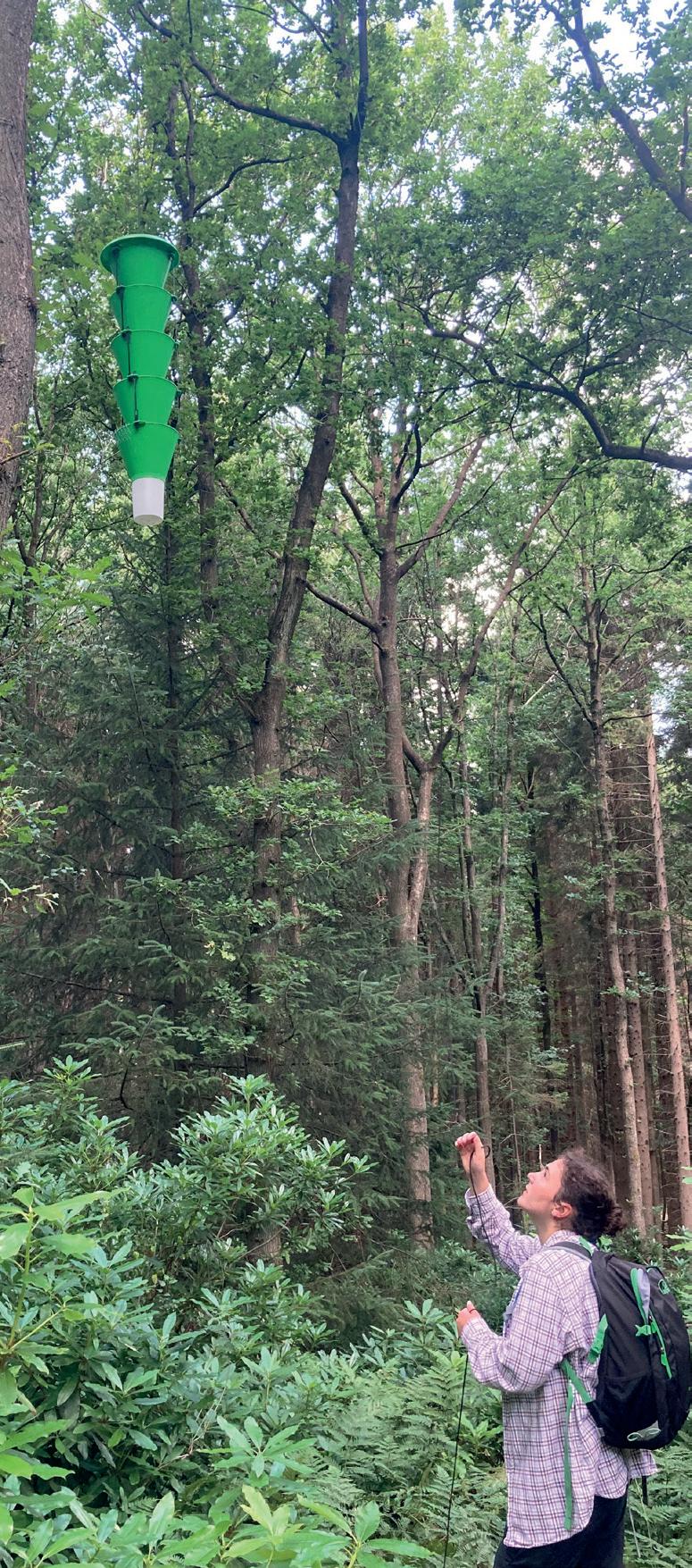







Forest Research scientists discuss the challenges of, and opportunities for, measuring biodiversity and why commercial forests will play a key role in achieving the UK’s natural capital goals.
Forest biodiversity refers to the variety of life that we find in forests, namely the range of plants, animals, fungi and microbial species. It encompasses the abundance, composition and diversity of species within a forest ecosystem as well as the genetic variation within the species itself and the ecological interactions between species.
This diversity underpins the functioning of ecosystems, the resilience of the forest and the provision of important ecosystem services. For example, these include resources like timber and fresh water and climate regulation through carbon sequestration.
Biodiversity also plays a role in hydrological cycles, flood control and soil protection.
Biodiverse forests contribute to our mental and physical wellbeing, offering spaces for recreation and rest. They provide opportunities for education, tourism, and research. They are deeply connected to social and cultural values.
Biodiversity under pressure
However, combined pressures mean that biodiversity is declining in the UK. These pressures include poor forest management, habitat loss and climate change, to name just a few. Extreme weather events can also cause stress and affect the timing of biological processes.
Agriculture, urban development and the spread of pests and diseases – which can include over-grazing by herbivores and deer, squirrel damage and invasive non-native species and diseases – also put pressure on biodiversity.
Committing to biodiversity
In the UK, the composition and structure of our forests are highly modified by management. The richness of native tree species and forest cover is low and much of our forests are fragmented.
Forest cover was particularly low at the beginning of the 1900s but after the First and Second World Wars there was a push to reduce reliance on timber imports resulting in non-native, fast growing species, like Sitka Spruce, dominating the reestablishment of forests in the first half of the last century.
Over the past half a century the UK has been slowly moving away from even-aged, monoculture stands to more sustainable forestry practices meaning native forests are no longer being converted to conifer plantations and there’s a renewed focus on preserving native, especially broadleaf, forests.
The UK government has set policy goals to halt and reverse biodiversity loss by 2030 and has implemented a range of legislative frameworks to help restore nature.
Monitoring biodiversity
Monitoring biodiversity is essential for understanding the health of forests. It allows the detection of changes in biodiversity over time and the potential to identify the drivers of those changes. This informs management and evaluation of conservation strategies and progress towards biodiversity targets and goals. But the multifaceted and complex nature
of biodiversity means that it’s challenging to measure.
Measures need to capture the complexity of biodiversity but be easy to interpret. They need to provide an understanding of what is happening now but also enable the tracking of biodiversity trends over time.
Commercial forests in Great Britain make up a considerable portion of our forest cover, and they are set to play a crucial role in nature recovery strategies.
“There’s often a lingering misconception that commercial forests and biodiversity are incompatible but that’s not the case – if we want to achieve our nature recovery ambitions it’s important to challenge that mindset,” said spatial scientist, Dr Helen Slater.
Late last year, funded by the Forestry Commission, Forest Research published a review of evidence on biodiversity in many of the most commonly encountered commercial high forest types in Great Britain.
“Forests where trees can attain their full-canopy heights and reach mature stages of development are known as high forests,” said senior biodiversity scientist, Dr Nadia Barsoum.
“In Great Britain, a significant proportion of these forests are managed in a commercial capacity for timber and wood-based products and comprise conifer, broadleaf or conifer-broadleaf mixtures. The review was needed to understand the contribution of these forest types to biodiversity and to identify gaps in understanding.
“We have since expanded the evidence review to include a wider range of ‘emerging’ commercial trees species that are expected to be favoured for planting in future climates.”
The review’s findings
The first part of the publication, ‘Rapid Review of Evidence on Biodiversity in Great Britain’s Commercial Forests’, used expert knowledge of the habitat requirements of over 400 woodland specialist species to predict whether commercial high forest had the potential to offer a suitable habitat for at least one stage of the species’ lifecycle.
The second part of the publication was a summary of published research (from 1970-2020) reporting on biodiversity in commercial forests in Great Britain.
The review concluded that there may only be enough research evidence to answer specific research questions
about biodiversity in commercial high forests for certain broad taxonomic groups (i.e. birds, ground vegetation, carabid beetles).
It also predicted that, based on species habitat requirements and expert knowledge, some commercial forest types can potentially accommodate many specialist woodland mammals, birds, amphibians and reptiles, some woodland specialist fungi and vascular plants, but few specialist invertebrates, lichens and bryophytes.
In addition, the review highlighted gaps in evidence and provided some recommendations for future research areas to focus on and methodological approaches that might be used to fill those gaps.
Scientists at Forest Research are aiming to publish a database of all the biodiversity studies in UK commercial forests that were uncovered in the detailed literature reviews. A new project, inspired by the literature review, called Biodiversity Across Forest Types (BioX4Types), will investigate forest biodiversity in multiple forest types (commercial and semi-natural) across Great Britain.
“We’ll use different techniques to measure biodiversity from soundscape recordings for bats, canopy traps for arthropods and environmental DNA to identify fungi and soil-dwelling invertebrates,” said Dr Nadia Barsoum.
“We are keen to collaborate with other researchers to measure additional components of biodiversity in our carefully selected research plots which represent a range of forest types and structures”
State-owned public forests account for around a quarter of woodland area in the UK. Forestry England and Forestry and Land Scotland, the agencies that manage these forests, are legally required to demonstrate their impact on biodiversity. Forest Research, Forestry England and Forestry and Land Scotland collaborated to develop the Forest Biodiversity Index (FOBI). The FOBI includes measurements of the diversity, extent, condition and connectivity of woodlands as proxies for biodiversity. This includes tree age diversity, open habitat cover, and woodland size, which can be directly influenced by woodland management. Crucially the FOBI uses data that is already being collected by the agencies.
Measures of biodiversity potential
“We summarise the complex information captured by the various FOBI measurements into two combined indices of biodiversity potential,” said spatial scientist, Dr Chloe Bellamy.
“Providing these two headline numbers is useful for high-level decision makers, such as policy makers reporting on progress towards biodiversity goals, whilst forest managers and other users can make use of the underlying detail.”
The results are provided as mapped data each year so that users can see how well each woodland scores for the overall combined indices and the individual measurements that the FOBI is made up of.
“Using GIS software, planners are then able to track the relative performance of each woodland across time – this allows them to identify where management practices are benefitting biodiversity and where potential intervention may be required,” said GIS scientist, Andrew Rattey.
Forest Research is exploring how
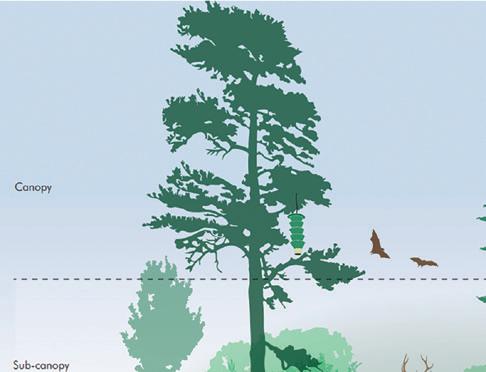
Detection methods.

the FOBI approach can be used to measure and monitor the biodiversity potential of private forests and welcomes collaborations.

To collaborate with us on the projects described in this article, please contact chloe.bellamy@forestresearch.gov.uk or nadia.barsoum@forestresearch.gov.uk.




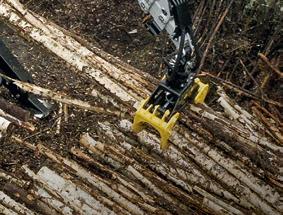



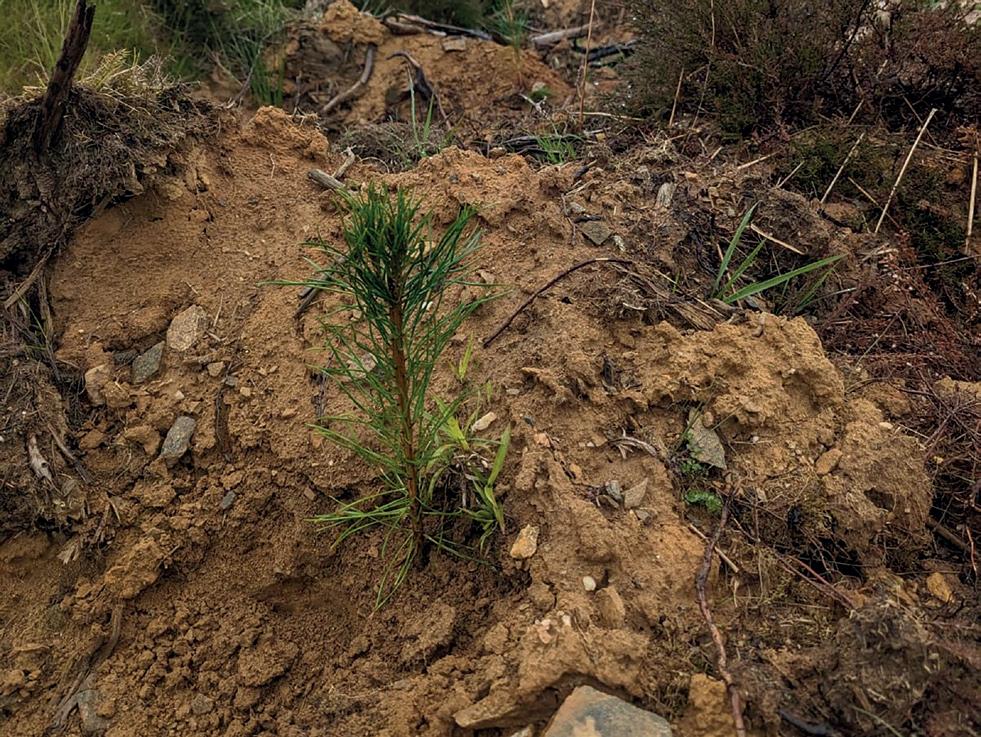
While using frozen trees is not common practice in Scotland, it is a technique deployed in Canada where Paige originally hails from. She said: “Planting trees when they are dormant, typically in the colder months, allows trees to focus energy on developing root systems rather than producing leaves and shoots.
Forestry & Land Scotland (FLS) are currently trialling planting frozen tree across Highland Perthshire and the Angus Glens to try and extend the planting season and improve the hardiness of saplings.
“Freezing the trees puts them into dormancy. Being frozen, trees can be preserved for around six months compared to our current method of cold storage which is usually around three months. The cells of a frozen tree have enough locked-in nutrient reserves to survive once planted, even in warmer
weather,” explained Stewardship Forester Paige Klinkman.
This allows them to be planted after the recognised winter planting season of October to March.
For this, young trees are being frozen and stored at a newly renovated nursery in Newton before being transported to planting sites. Here they are left to thaw under controlled conditions before being planted.
A cooling blanket made from foil and tarpaulin is used to control the thawing of the saplings.
In a project led by the Woodland Trust, high-tech drones weighing 110kg and carrying up to 58kg of seeds have scattered 75,000 seeds across the rolling hills around Bodmin.
The drones, which hover just a few metres above the ground, can reach areas inaccessible for human planting by hand. Working with the South West Rainforest Alliance, the Woodland Trust hopes the new seeding technique will help triple the area of temperate rainforest in Devon and Cornwall from 8% to 24% of land area by 2050.
Sam Manning, project officer for South West rainforests at the Woodland Trust, said: “Restoring and expanding our temperate rainforests are vital to
solving the climate and biodiversity crises. A key part of that is developing innovative methods of woodland creation which are faster, cheaper and reach inaccessible sites unsafe for human tree planters, or places where soils are too thin for planting with spades.
“The frozen plants also don’t have the same issues with mould or plant shock which is when the roots are damaged during transportation and distribution across sites. Other benefits were that the young trees had less damage caused by deer browsing with a wider variety of grazing options available to deer in the warmer conditions.”
The frozen trees are planted in the same way as any other bare root or cell grown tree, with the thawing out process the only additional step. A slow thaw is needed, and temperatures are kept low (around 5 degrees Celsius) using silvicultural tarps.
The trial is using a mixture of noble fir, Scots pine, Sitka spruce and mixed broadleaves.
Trialling methods such as frozen seedling stock is part of FLS’s endeavour to plant more trees, so that forests and woodlands contribute significantly to tackling the climate emergency and continue to support jobs, businesses, and livelihoods in Scotland’s rural communities.
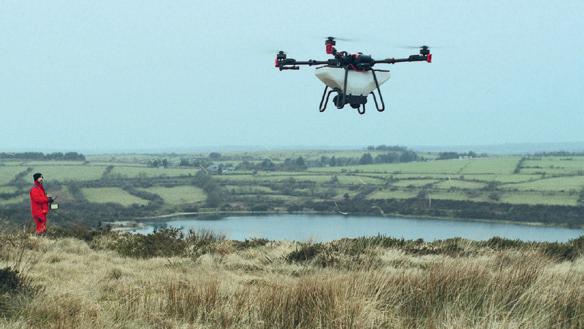
“Drones are potentially much faster and cheaper at dispersing seeds than volunteers. The other aspect is safety and accessibility. Many potential woodland creation sites are either too steep, unsafe or remote for people to plant or scatter seeds. Drones can help solve these issues by removing the safety and accessibility limitations of humans.”
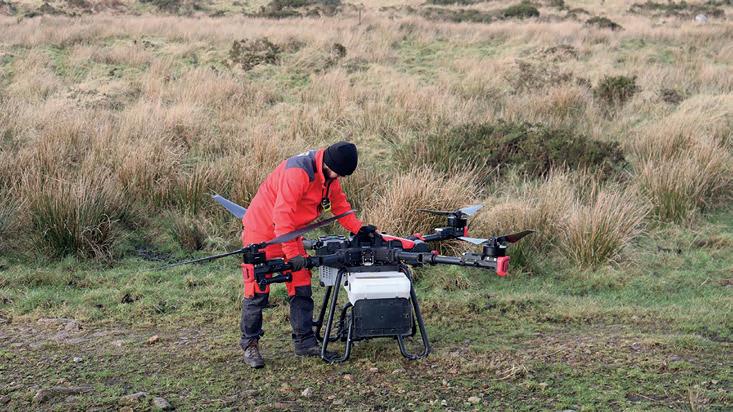
The Centre for Forest Protection has been awarded £4m to support 17 research projects boosting resilience for trees and woodlands.
British woodlands and trees will benefit from new research aimed at boosting protection against pests and diseases, with additional funding for the Centre for Forest Protection announced as part of National Plant Health Week.
Plants and trees are estimated to contribute £4.1 billion per year to the UK’s economy – their vast canopies are teeming with birds and insects, they help mitigate the impact of flooding for communities across the country, trees outside woodland in towns as well as rural areas are cherished by the British people.
However, the significant threat posed by pests and diseases is growing due to factors like climate change, and it is increasingly important to plant resilient trees that can withstand warmer temperatures so people and nature can enjoy the widespread benefits they bring.

Key new research projects will improve tree health and resilience through the Centre for Forest Protection, a collaboration between Forest Research and Royal Botanic Gardens, Kew, as part of the Government’s Plan for Change.
These will help plant and protect treescapes that are resilient to stresses including climate change and pests and diseases such as ash dieback, which has been estimated to kill over 100 million trees in the UK and cost the economy up to £15 billion to Great Britain over the coming decades.
The £4 million of funding will include projects to facilitate future tree breeding for resilience to ash dieback and a fungal disease affecting Scots pine, and new technologies so trees can flower at a younger age to accelerate breeding programmes.
Professor Nicola Spence, Defra’s Chief Plant Health Officer, said: “Tackling the growing threat from plant pests and diseases due to climate change is critical to protect the long-
Among the 17 new projects for 2025/26 are:
• Dodging the Double Whammy: Does Resistance to Ash Dieback Help European Ash Avoid Damage by Emerald Ash Borer?
• SUPPoRT: Sustainable Plant Provenancing for Resilient Trees
• Genomic basis of ash health after five- and 13-years’ exposure to ash dieback
• Enhancing forest resilience through stand structural complexity
• Infusing resilience into the Scots pine genetic resource
• Speed breeding technologies for UK broadleaved trees
• The wind within the trees: understanding cultural, silvicultural, and timber quality dimensions to windstorm risks and impacts
term health and resilience of our trees.
“Expanding our research efforts and work to restore native ash trees are an important step in the fight against diseases which devastate our nations woodlands, protecting trees for the benefits they bring to our climate and for people’s enjoyment.”
Dr Louise Gathercole, Centre for Forest Protection Coordinator, said:
“At Forest Research and Royal Botanic Gardens, Kew, we are delighted to continue our collaboration under the Centre for Forest Protection.
“Funding this virtual centre gives us the opportunity to leverage the expertise and resources of both organisations, along with a wide range of other collaborators, to carry out innovative science and produce the evidence needed for future woodland resilience.”
Additionally, as part of £700,000 of Defra-funded research, a second UK ash tree archive in Clackmannanshire, Scotland has now been planted with the aim of increasing resilience and further developing efforts for a breeding programme of tolerant UK ash. This is a key step towards restoring native ash back to our landscape.
This follows over 3,000 trees of tolerant ash being planted at the first ash archive site in southern England in 2019. Screening for tolerant trees in a different climate away from other threats will significantly boost research efforts. Identifying ash with a high tolerance to the disease will enable the development of orchards producing commercially available seed and prove transformative to our future landscapes.



Woodland managers, landowners and the forestry sector are being encouraged to increase their vigilance against the tree pest Ips typographus.
The warning comes following a record dry spring, and the heavy rain and waterlogging of last year, which has left lowland spruce, particularly those on clay soils, at heightened risk of stress, potentially increasing their susceptibility to beetle infestation.
Ips typographus, also known as the eight-toothed spruce bark beetle, is a serious pest of spruce trees in Europe which was first identified in the UK in 2018. It has the potential to cause significant damage to Great Britain’s forestry and timber industries but a robust and comprehensive management programme of pest management from Forestry Commission has contained all known outbreaks to date within the designated Demarcated Area.
Defra Chief Plant Health Officer Professor Nicola Spence said: “I am urging foresters and landowners to really be on their guard as we enter the heightened risk period for Ips typographus.
“We need maximum vigilance from all landowners and land managers as temperatures rise – the dry spring following last year’s wet summer has created ideal conditions for the beetle.
The cooperation of the forestry sector has been vital in our efforts to keep the pest at bay and we need that to continue.”
A grant is available within the Proactive Spruce Removal Area as part of the Tree Health Pilot and the Forestry Commission plans to provide a new offer to further support removal of spruce later this year.
Dr Anna Brown, Director of Forest Services at the Forestry Commission, added: “Continued vigilance to the threat posed by Ips typographus is needed following the recent rise in temperatures, and we’re urging landowners and land managers to report any sightings immediately via Tree Alert to help reduce the risk of the pest spreading.
“The help of the sector is vital in the successful management of this pest – landowners, agents and timber processors should continue to comply with ongoing restrictions for movement of spruce material and methods of forest operations in the Demarcated Area.”
Defra will host a workshop later this year, in collaboration with UK AgriTech Centre, to continue to exchange knowledge with the international plant health community on innovative and technological solutions for managing bark beetle pests.
Asurvey of over 7,000 participants by Forest Research as part of the ‘National Conversation on Plant Health’ project funded by Defra looked at levels of awareness and understanding of biosecurity and plant and tree health in the UK.
The research explores what the public sees as their role and responsibility when it comes to improving biosecurity, as well as identifying barriers to adopting plant health behaviours.
Most people recognise that plants have environmental, aesthetic, economic and recreational value and agree that it is important to protect plants and trees from pests and diseases. For example, when thinking about the impact that loss of plants and trees could have at the national scale, around two fifths of people surveyed said that reduced air quality (40.4%), loss of carbon capture or release of carbon from dying plants and trees (38.1%) and loss of biodiversity or nature (37.2%) mattered a great deal to them.
However, this concern does not always translate into taking personal action for biosecurity. Just 13.9% of people surveyed said they always checked the plants and trees in their homes and gardens for signs of pests and diseases and tried to treat any problems they found and only 15.4% said they always clean their footwear of soil after going for a walk around areas of woodland.
Emma Hinton, Social Scientist at Forest Research, said: “Protecting trees from significant pest and disease threats requires changes in behaviour and practice from a wide range of stakeholders, including the public. The ‘National Conversation on Plant Health’ project aims to facilitate a dialogue with the public and other groups to increase appreciation, understanding and support for plant health and biosecurity.”
Graeme Leith, partner at Brodies LLP, examines the issue of buying and selling carbon units from woodland and peatland restoration.
Over the past five years, interest in buying and selling carbon units has significantly grown as landowners and investors have realised the critical role they can play in the UK’s net zero ambitions.
This spring marked the completion of an 18-month project funded by the Facility for Investment Ready Nature in Scotland (FIRNS), to develop and issue template agreements to enable the sale of carbon units from UK woodland carbon and peatland restoration schemes.
Graeme Leith, lead legal adviser on the project, explains more.
their legal advisers to better understand the responsibilities, obligations and liabilities they should consider when buying or selling units.
The new templates and the accompanying guidance are designed to provide greater clarity, making it easier for participants to engage in the market.
Who was involved?
The project was a collaborative effort involving Scottish Forestry as lead partner, in partnership with the IUCN UK Peatland Programme and law firms Brodies LLP, Gillespie MacAndrew and Turcan Connell. It was supported by NatureScot in collaboration with the Scottish Government and in partnership with the National Lottery Heritage Fund, through FIRNS.
What are the main features of the new agreement forms?
There are two core agreement templates. The first addresses the sale of pending issuance units, which involves the seller of the units - typically a landowner but can also be a tenant or joint venture vehicle - transferring the benefit of future carbon sequestration/ emission reduction related to those units.
The second is of the nature of an offtake agreement, where parties contract to transfer verified carbon units after the carbon sequestration/emission reductions have been evidenced.
The templates themselves are pro-forma documents, requiring only completion of a commercial term sheet that will contain commercial and scheme-specific information and allow parties to record decisions on issues such as project risk, timing of payments and protection of investment.


What is the process for participation in the voluntary carbon sequestration sector?









The initial stage involved extensive consultation with stakeholders, including landowner representative bodies, insurance brokers, investor platforms and businesses who are involved in the design and delivery of

The Woodland Carbon Code and Peatland Carbon Code underpin the UK’s woodland carbon and peatland restoration schemes and have been in place for 14 years and 10 years, respectively. These codes set out the requirements for developing projects which tackle climate change by removing carbon dioxide from the atmosphere or stop it from entering in the first place.






Projects that meet the requirements generate carbon units, a product which landowners can sell and companies can buy to compensate for their unavoidable greenhouse gas emissions.
Why were new template agreements needed?
By its nature, the process of buying and selling carbon units is complex, and that complexity was discouraging participants from becoming involved. This project aimed to help buyers, sellers and




carbon schemes. found?




They also enable contracting parties to tailor their agreement to individual preferences, through the provision for bespoke clauses. Detailed guidance has also been prepared to assist participants in identifying the pertinent issues and inform completion of the commercial term sheet.


Where can the template agreements be applied?







Anywhere across the UK. The project group produced variations of the core templates for use in each of the UK’s jurisdictions – Scotland, England and Wales, and Northern Ireland - reflecting differences in property law.

Where can the new templates be






The agreements and guidance are available on the Woodland Carbon Code website (https://bit.ly/BrodiesWCC) and are free to download.




Chloe Vernon-Shore, Partner in destination law firm
Michelmores’ Commercial team, shares some of the integrated technology products supporting rural businesses that have roots in the MAINstream.
The future of farming and forestry in the UK is inextricably linked to the increasing integration of technology across all aspects of rural land management practices. Faced with challenges such as the shortage of workers, environmental regulations, climate change, and the need for increased efficiency and sustainability, small businesses are increasingly turning to technological innovations to navigate these complexities and ensure the long-term viability of their operations.
Michelmores established a network of Angel investors in late 2019 (MAINstream). Created with the aim of accelerating and facilitating investment into the Southwest of the UK, MAINstream receives a steady flow of applications from early-stage businesses that are looking for investment. Over the past five years, a number of these applications have been from businesses looking to have a positive impact on the natural environment, and we showcase a few of them below:
Wilder Sensing identifies what species are present on a site/landscape by analysing vast quantities of sound using AI. It checks each audio file every 3 seconds to identify what species has made a sound and add it to a large database which users can analyse. This provides actionable insights into the status and trends of biodiversity. Using commercially available audio recorders, millions of species level records are generated each year providing insights as to how, for example, the bird assemblage changes through the seasons and over a period of years.
Wilder Sensing is involved in the EU Future Forest Initiative which aims to understand the health of forests using 8 key indicators, one being the Forest Bird Index. They are also involved with the Aviva funded temperate rainforest project, in conjunction with Cardiff University.
Ostara is a farm management and control software solution for
controlled environment agriculture. Ostara improves growing conditions by automating manual tasks and giving its growers a wealth of data. Data sensors are connected with automated controls, allowing its users to monitor performance and instantaneously manage their farm.
Sensor examples include: temperature and humidity; soil moisture; water usage and run-off; power consumption; and light level. The data derived from these sensors then automatically dictates and controls the following: water pumps and valves; motorised vents and fans; motorised shaders; LED lights; fertiliser dosing systems; and heating and cooling systems.
Ooooby is a purpose-built tech platform that enables farmers to sell small-scale food production to their local community on-line. Farmers are enabled, via the Ooooby platform, to launch an own- branded website (via the Ooooby website builder); sell produce locally; and process all payment transactions through the platform. Orders can be managed with built-in fulfilment features (including inventory checklists, packing and pick sheets and stock management) and deliveries are streamlined with automated route optimisation.
The platform can also generate performance and financial reports and customer surveys, enabling each farmer to gather valuable insights on their customers’ behaviour.





Soil Benchmark brings together intuitive design, trusted datasets and simple map-based editing to create faster, smarter soil, manure and nutrient management plans. Already covering 9.8% of England’s farmland, farmers and advisors use the Soil Benchmark Platform to support soil management on thousands of farms; the users and founders are driven by a shared ambition to bring about healthy soils, profitable farms, nutritious food, clean rivers, thriving wildlife and carbon removal.







One of the most common recommendations in their plans is for agroforestry and buffer zones to be included in farm plans, particularly to mitigate soil erosion and nutrient run-off
The examples above show how the future of land-based businesses in the

UK will be characterised by a deeper and more sophisticated integration of technology. From autonomous machinery and precision agriculture to AI-powered analytics and controlled environment systems, these innovations hold the key to enhancing efficiency, improving sustainability, ensuring food security, and making UK agriculture more resilient to the challenges of the 21st century.






If you are interested in applying for investment through our MAINstream programme; or need some early-stage legal support through our MiVentures programme - a dedicated programme giving extra support to innovative and scale businesses, please get in touch.
mainstream@michelmores.com miventures@michelmores.com
Confor Members have access to a free legal helpline, administered by Brodies LLP. Get in touch for guidance on key issues that impact forest owners and the forestry sector.
Whether your query is employment law, health & safety, planning, tax or property-related, one of our experts will be happy to give you a free initial consultation. More info: https://bit.ly/3yPGRI1
For members based anywhere in the UK Brodies LLP 0131 228 3777 www.brodies.com confor@brodies.com
For members based in England/Wales Michelmores LLP 0333 004 3456 www.michelmores.com
For more than 20 years we’ve helped thousands of customers achieve lower cost and lower carbon heating.
Our experts have a depth of knowledge and experience that comes from working with hundreds of customers from every sector and industry. We are committed to assessing a clients’ needs and designing the best solutions for reducing energy consumption and costs.
Biomass boilers are tremendously versatile and the perfect choice for a huge number of applications from pools, schools and hotels to horticulture, manufacturing and beyond.
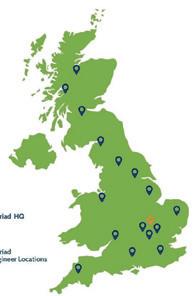
The adaptable nature of biomass boilers, and the wide range of heating outputs (100kW to 5MW) make them an excellent fit for almost any application.
Partnering with Myriad means that you are supported by UK leading engineers, trained and experienced in the design, installation & maintenance of commercial and industrial biomass boilers.
In other words...
...Peace of mind Our expertise comes from our experience. Finding the right products and designing the perfect system is what we do.




Funding totalling £2 million has been allocated to timber transport improvements across Scotland.
Five new projects which will reduce the impacts of timber transport on communities and improve the transport infrastructure are being funded by Scottish Forestry.
£900,000 has been allocated to the projects which include upgrades to existing fragile rural roads, creating passing places or building new in-forest routes to take timber traffic away from people’s homes.
A further £1.1 million has already been committed to funding ongoing initiatives including the TimberLINK coastal shipping project, a three-year electric timber lorry trial and a network of Regional Timber Transport officers across Scotland.
Welcoming the Strategic Timber Transport Fund support, Rural Affairs Secretary Mairi Gougeon said: “Our forests produce around 6 million tonnes of timber each year. This is a vital part of our green economy which generates over £1.1 billion to Scotland each year and supports around 34,000 jobs.
“It is important that this timber gets to market safely and very importantly, in a way which minimises any impacts on rural communities. This funding aims to achieve this and more.
“In our drive towards Net Zero, I’m looking to promote innovative ways to decarbonise how our timber gets to market in a way that is more environmentally friendly. Using sea routes and exploring the use of electric timber lorries are good examples of this.”
The TimberLINK project operates from Argyll using ships instead of timber lorries to move 75,000 tonnes of timber each year to state-of-the-art wood processors in Ayrshire. On average, this service avoids around 4,000 lorry journeys and reduces emissions by 1,700 tonnes per annum.
The three-year electric timber lorry trial (EV Timhaul) is nearing its second year in operation with both companies, James Jones and Sons (Lockerbie) and Scotlog Shipping (Inverness), becoming advocates for fleet electrification.
The network of Regional Timber
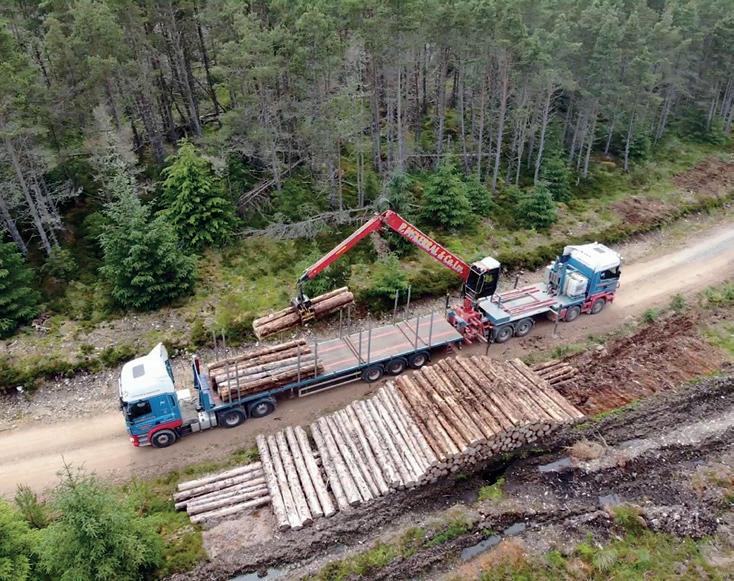
Argyll and Bute Council (£150,535)
The A819 is a key strategic timber transport route and is due to carry almost half a million tonnes of timber over the next decade. Funding support will make a number of construction and safety improvements at Electric Cottage.
Stirling Council (£207,835)
The C33 at Balquhidder is a narrow, mostly single-track road which will support around a quarter of a million tonnes of timber being transported over the next decade. Funding will upgrade the road, increase passing places and improve forest exits.
Angus Council (£150,000)
The C27 and C28 roads in the Angus glens are not suitable for sustained timber traffic, which is due to increase over the next 10 years. This project will improve and upgrade key sections by strengthening, widening and patching the carriageway, providing improved
Transport Groups and the Timber Transport Forum will also continue to be funded. These groups and staff provide a critical liaison between communities, local authorities, the forestry industry, and Scottish Forestry to assist with timber transport issues.
Dr William Clark, Scottish Forestry’s Forest Transport & Innovation Advisor added: “The Strategic Timber Transport Scheme has been reducing the impacts
passing places throughout, and installing enhanced drainage at key sections.
Barhill Strategic Timber Transport Committee (£45,000)
The Barhill Timber Haul Route ensures timber haulage will not need to use the local fragile public road network. This project will upgrade the Carrick Burn bridge to allow continued use and avoid the impacts of more than a quarter of a million tonnes of timber being extracted over the next decade.
Tilhill Forestry (£381,232)
As one of the principal timber producing regions in Scotland, Argyll communities will benefit from the diversion of 100,000 tonnes timber transport from Lagalochan and Loch Avich timber along the C29, C30 & B845, through Dalavich and Kilchrenan. This will allow timber movements onto primary routes without using local roads.
of timber haulage on Scotland’s communities for 25 years.
“Over 600 projects have been supported in this time, reducing the impacts of over 1 billion tonnes of timber transport on communities and the environment.”
All the projects under the Strategic Timber Transport Fund are co-funded by the local authorities or public and private partnerships.
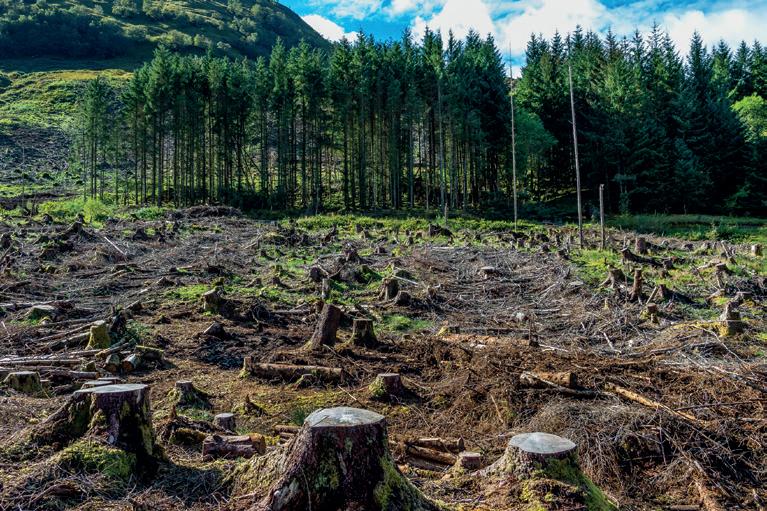
Confor’s new Technical and Industry Support Manager Dr Kate Palmer explains how the UK’s new “low-risk” designation impacts the expectations for forest managers and landowners under EUDR.
The latest developments from Brussels have delivered a significant boost for UK forestry and timber businesses. As of 22 May 2025, the European Commission has formally confirmed the UK as a low-risk country under the EU Regulation on Deforestation-Free Products (EUDR).
With the EUDR coming into force on 30 December 2025 for large and medium-sized operators - and on 30 June 2026 for small and microenterprises – this confirmation gives clarity and direction to UK exporters. But more importantly, it defines a clear role for landowners and forest managers who have a vital part to play in maintaining the integrity of the UK’s “low-risk” status and supporting downstream processors.
The EUDR is the EU’s flagship legislation aimed at ensuring that key commodities, including timber, coffee, soy, palm oil, cocoa, and cattle, do not contribute to deforestation or forest degradation globally. Under the regulation, businesses placing these products on the EU market must
demonstrate that they are deforestationfree and legally produced, supported by robust due diligence.
This involves traceability to the plot of land where the commodity was produced, geolocation data, and proof of legal compliance. However, the compliance burden is reduced for countries classified as low risk - a list which now officially includes the United Kingdom.
The low-risk designation brings tangible benefits for UK exporters:
• Only 1% of operators and products will be subject to annual compliance checks, compared to 9% for high-risk countries.
• A clear competitive advantage for UK timber businesses trading with EU partners.
This status is grounded in scientific and internationally recognised data, reflecting the UK’s strong forest governance, regulatory oversight, and low rates of deforestation. It also underscores the success of collaborative forest management
practices across the UK’s forestry sector.
In addition to the low-risk designation, the European Commission unveiled a package of simplifications in April 2025 to ease compliance while preserving the environmental goals of the regulation. These include:
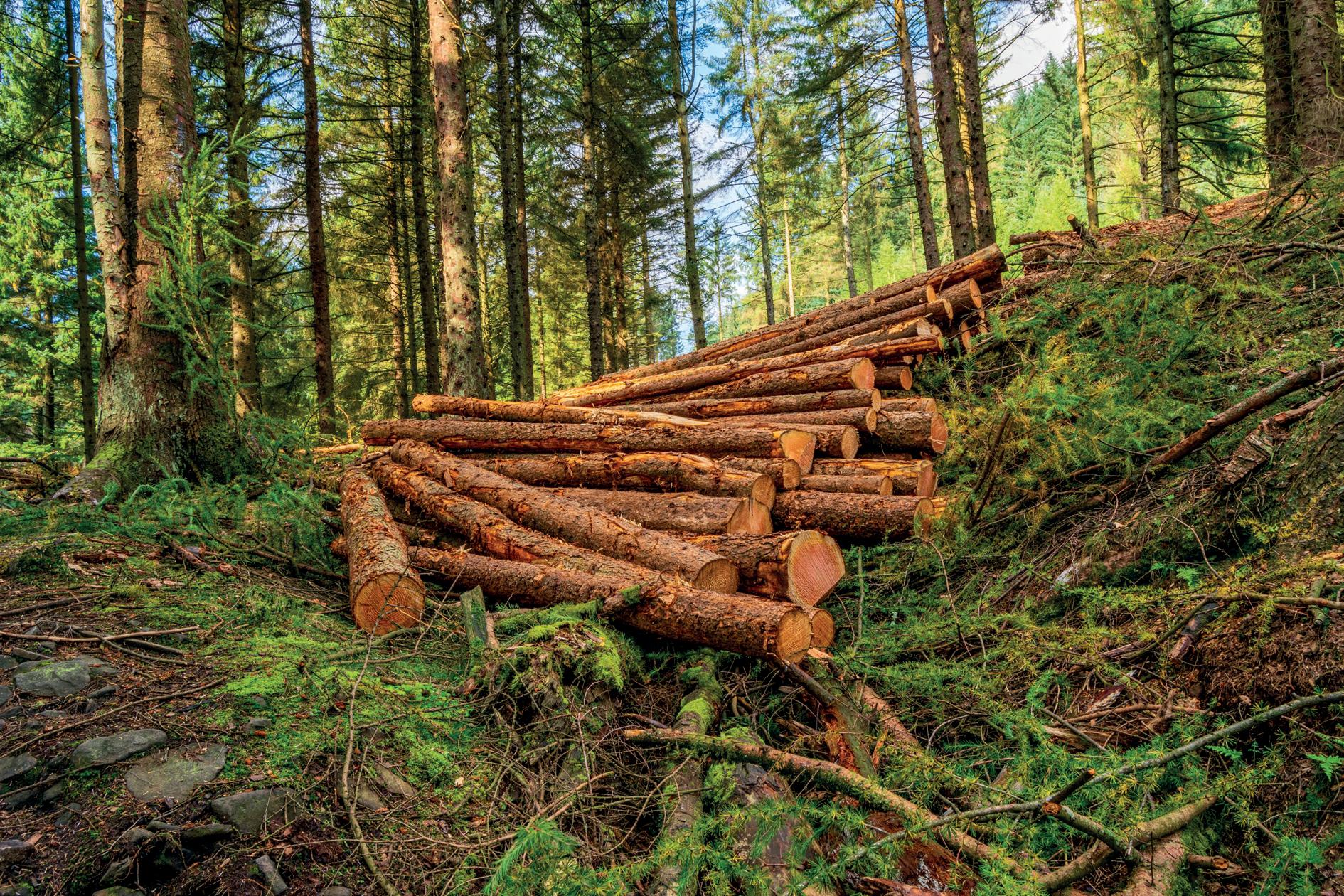
• Due diligence statements (DDS) can be submitted in batches instead of one for every shipment. Due Diligence Statements (DDS) can only be valid if they are less than 12 months old at the time the product is placed on the EU market or exported.
• Re-imports of the same product can reuse existing DDS, reducing repetition and paperwork.
• Companies can appoint a representative to submit DDS on behalf of a group of businesses.
• Clarified scope: Packaging materials, test samples, and waste are excluded from EUDR requirements.
Together, these measures help reduce red tape, streamline administrative processes, and cut costs for timber businesses operating in the EU market.

What should landowners and forest managers be doing?
While the regulatory weight of the EUDR falls largely on processors and exporters, landowners and forest managers have a pivotal role in supporting the system. Their actions will directly influence the industry’s ability to maintain the UK’s lowrisk status and compete internationally.
Here’s how landowners and managers can help:
1. Maintain Accurate and Accessible Records
Geolocation data and legal compliance documents (e.g., felling licences, management plans, harvesting records) must be well-maintained and readily available. Exporters may need this information to complete their due diligence requirements efficiently.
2. Engage with Certification Schemes
Participation in recognised forest certification schemes (e.g., FSC, PEFC) can provide additional assurance
of sustainable practices and legal compliance, supporting supply chain traceability.
3. Stay Informed on EUDR Developments
Understanding the implications of the regulation and how it affects the wider supply chain helps landowners align with processor needs. Proactive communication with downstream businesses builds stronger, more resilient trade relationships.
4. Support Digital Traceability Tools
New digital platforms and traceability systems are emerging to meet EUDR requirements. Landowners should be prepared to engage with these tools, which may include geolocation mapping and data sharing with processors.
5. Promote Transparency and Communication
An open dialogue with buyers and timber processors ensures that the necessary information is shared in a timely and
reliable manner, streamlining compliance and minimising delays.
ahead
Although the 30 December 2025 implementation date for large and medium enterprises is approaching, the EUDR framework continues to evolve, with further updates anticipated in the coming months.
Recent changes over the past year have not altered the core expectations for landowners and forest managers, particularly around the importance of maintaining accurate records and ensuring ongoing compliance.
This period of regulatory development provides a useful window for businesses and forest stakeholders to assess current practices, enhance supply chain coordination, and consider how potential adjustments might be integrated into existing systems as the EUDR guidance becomes more defined.
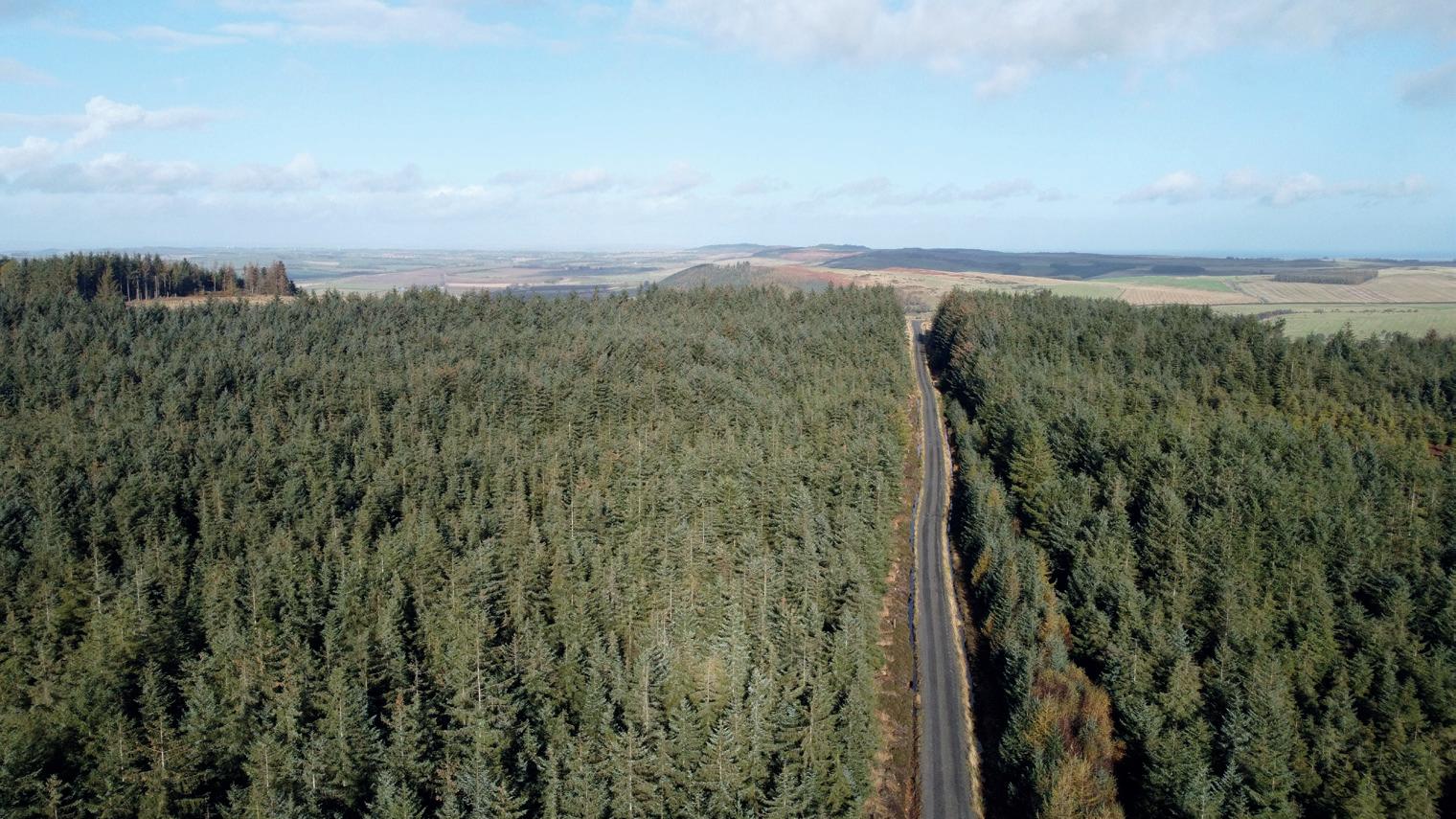
The new season brings sunshine and optimism for woodland sales. Mike Tustin FICfor MRICS, Director of Tustins Group Ltd, shares the market outlook for England and Wales.
As I sit down to write this issue’s market report, I am encouraged by the fact that the office window is now open and the sounds of early summer are drifting in from the polo fields surrounding our office. To the woodland sales agent, the weather is warming and spring is almost finished.
With this change there has been a surge of activity within the England and Wales forest and woodland market. At Tustins, we have seen the number of instructions sharply increase and have recently launched a range of properties that should appeal to a broad spectrum of buyers.
There is a feeling amongst buyers and sellers of cautious optimism in this, our busiest period. Indeed, we are agreeing plenty of sales at the current time which will slowly make their way through the legal system to be reported as completions in due course.
Interest in well-presented mixed amenity woodland with income generating potential remains strong, especially when there is proven vehicular access and the owner has invested in sound woodland management. As ever, values are still
clearly linked to timber/forest product prices, and this sector often includes high value firewood.
This is the one product which has been barely affected by a cautious economy and woods and the property sales market in the south of England continue to benefit from this forest product still being so sought after despite the introduction of clean air zones.
Completed significant sales include: Bressenden Wood in Kent, which comprises of 45 hectares of mixed woodland guided at around £800,000 in an off-market deal, and Warren Farm Woods in Hampshire, a selection of productive broadleaf woodlands totalling 57 hectares guided at £1.1m, agreed as part of a wider farm purchase scheme.
As one would expect, softer sawlog timber values remain a factor, especially in the resilient commercial woodland sector where the value of the timber verses the cost of extraction is playing a larger role in the overall attractiveness of a property. This requires an element of caution to be embedded into guide prices, especially where timber forwarding or additional road building is required.
The slow downward movement of interest rates and the avoidance of a trade war with the US does appear to be giving investors cause for optimism. We have recently launched the 158-hectare Amersidelaw Forest in Northumberland at £2.6m. This has received lots of interest both nationally and internationally, being a well-presented commercial woodland with the added benefit of a cosy cabin and fishing lake.
At the other end of the country, we have also just launched Putham Woods, guided at £990k. On the edge of the Exmoor National Park, close to Minehead, Putham Woods is a 67-hectare mainly commercial mixed conifer plantation with some productive broadleaf and a range of ancient ruined buildings on site.
Planting land continues to be challenging as legislation and newly thought-out obstacles (both in place and upcoming) are succeeding at reducing the percentage of commercial planting possible over any given property. As a result, and as previously reported, we are still seeing large amounts of uncertainty around the potential financial return, and this is causing buyers to look more


closely at established schemes instead.
Recently, Goldcrest Land & Forestry Group has launched Banc Woodland to market guided at £2.2m; a 144-hectare property with 91 hectares of new planting which was completed in 2022 and looks to be first rate. Located in Southwest Wales, we look forward to seeing how this is received by the market and how the new owners might see themselves benefiting from the fast growing, mainly Sitka dominated crop and carbon rights included in this property.
The charitable and public sector has also been actively pursuing a number of new projects, and we are nearing completion or have completed on several properties in the 45-105 hectare range. This sector now seems to prefer to buy off-market as this provides them the time they require for due diligence and internal governance, which often precludes them from participating in traditional marketing campaigns where private treaty offers or a closing date has been set.
Vendors benefit from dealing with well-funded, experienced, professional buyers as well as added satisfaction that their property will deliver against the charitable aims of the organisation involved.
Whilst we would normally recommend vendors use open competition as a vehicle to achieve the best market
value, we have fostered a close working relationship with charitable buyers and our experience in England and Wales has allowed us to negotiate excellent terms that have suited both parties.
With higher than expected first quarter growth in the UK economy recently announced, combined with the increased focus in land investment for both commercial and carbon sequestration purposes, the future is looking bright for the forestry and woodland sector in England and Wales.
Added confidence in the economy should increase the appetite from institutional investors and the reduction in interest rates is positive news for the private buyer who may need to borrow to secure their woodland purchase.
The perfect storm of Trump and Labour taxation reforms has created a bit of a ripple effect which has probably succeeded in extending the period of cautious optimism reported in previous issues.

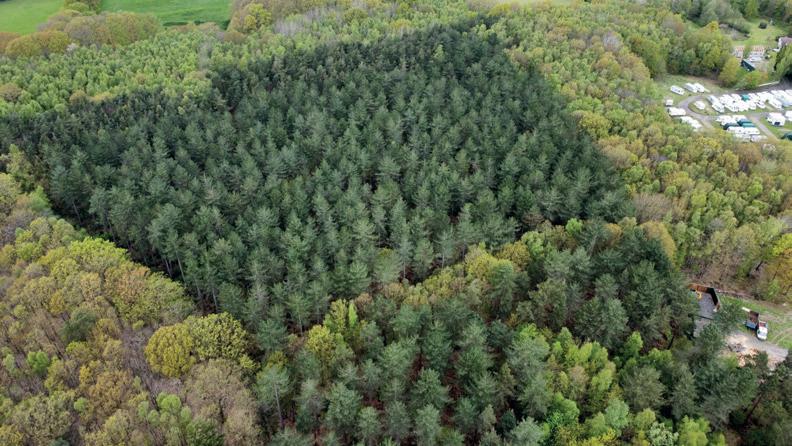
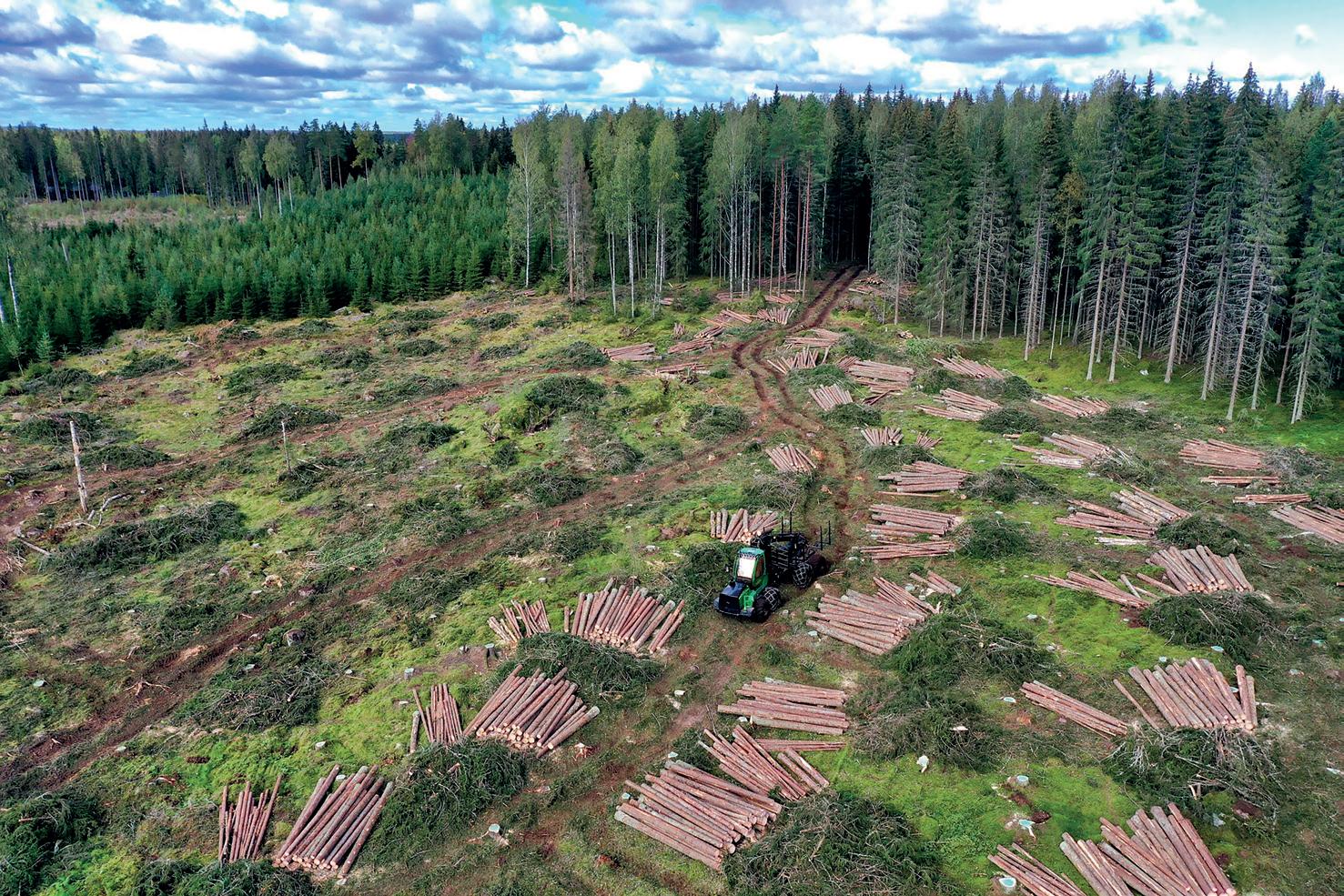
The global warming potential impact of increased wood supply and use is not well understood. Researchers at Bangor University and University of Galway have proposed a framework combining forest carbon modelling and dynamic consequential life-cycle assessment to evaluate productive afforestation as a climate change combatant.
Increasing the use of wood, a key low-carbon alternative to steel, concrete, and plastics, is an important component of the UK’s “net zero” strategy. However, the UK is the second largest importer of wood of any country of the world and has amongst the lowest forest cover (14%) of any country in Europe.
Only 20% of current UK wood demand is met by homegrown timber, leaving us with a serious challenge of “wood security” – or at least highly exposed to fluctuations in global wood prices. Our research, recently published in Nature Communications, has shown that beyond these economic concerns, high reliance on wood imports to meet domestic demand could also undermine the positive contribution that increasing wood use can make to a country meeting global net zero targets.
Authors: John Healey, Professor of Forest Sciences, Bangor University; Eilidh Forster, Research Associate, Bangor University and David Styles, Associate Professor, University of Galway.
This problem will be particularly acute for the UK if it continues to rely on increased wood harvesting from northern boreal forests in Scandinavia and the Baltic States to compensate for low domestic wood supply. The carbon stored in these slow-growing boreal forests takes much longer to be replaced after harvesting through the growth of the next generation of trees compared

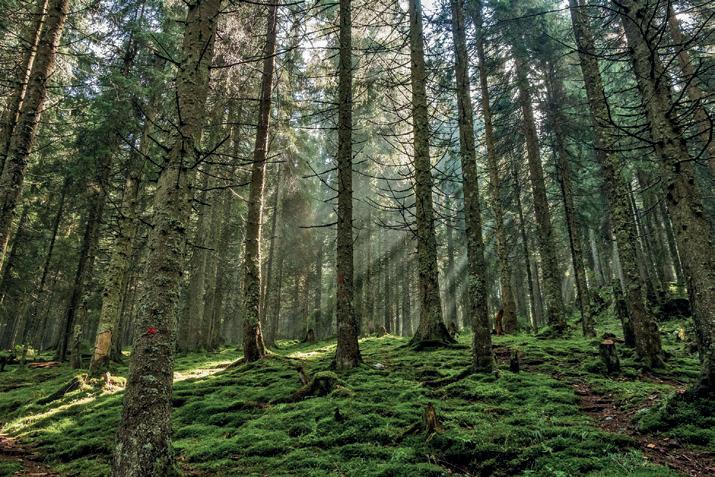
with conifer forests growing in the UK’s warmer temperate environment.
Is there a way to get round this problem whilst maintaining the critical role of increased use of wood as a low carbon material in national net zero strategies? To address this important question, our Bangor University research team developed an enhanced framework for forward-looking “consequential” life cycle assessment (LCA), projecting global warming potential impacts over the next 100 years (using “prospective dynamic LCA”).
We combined modelling of carbon storage dynamics in forests managed at different harvesting intensities (using the Canadian CBM-CFS3 model) with the carbon storage and emissions associated with every stage of wood harvesting, transport, processing and use (for which we had to develop a new model). To include the increase in emissions that would result from having to use more concrete or fossil fuels in the absence of sufficient supplies of wood to meet demand (i.e. the loss of the substitution benefit of using wood in place of these other high-emission products) we used “expanded system boundary LCA”.
Through this rigorous analysis, we showed that it will still be possible to meet rising wood demand while contributing positively to net zero targets at national and global scales, but only if there is a dramatic increase in temperate forest wood production in countries like the UK.
This will require drastic changes to current land use policy and forestry practice. To meet even modest rates of increase in wood demand (1.1% per year) the area of productive conifer forest may need to increase by at least 50% through afforestation over the next 50 years or so. A more ambitious doubling
of productive forest area, combined with management changes to increase tree growth rates by 33% (from a yield class of 18 to 24), increases the overall contribution of production forestry and wood use to slowing global warming by a further 175%.
To illustrate this another way, taking into account the whole forest-wood product value chain, if you start with an initial 100,000 hectares of yield class 18 conifer forest and progressively expand the area to 200,000 hectares over the next 50 years, with the next rotation achieving yield class 24, then after 100 years a greenhouse gas emission (cumulative global warming) saving of 277 million tonnes of carbon dioxide equivalent will have been achieved. However, this benefit would be threatened if the productivity of forests is reduced by factors like pests, pathogens and drought, which are predicted to become an increasing risk because of climate change.
In contrast, under a high rate of increase in future wood demand (2.3% per year), there is a significant risk that wood production and use will actually make a reduced contribution to slowing global warming unless there are large increases in domestic wood production. With such high demand, individual measures such as increasing temperate forest productivity by 33%, or expanding forest area by 2% per year, or altering forest rotation lengths, would not be sufficient in isolation to sustain any reduction in global warming potential over the next 100 years. Only combining a doubling of the area of productive temperate forest over the next 50 years with a 33% increase in the rate of tree growth would be sufficient to sustain a progressive slowing of global warming over this period.
These results present three major challenges to the UK if we are to successfully make progress towards net zero from use of wood in the wider economy:
Firstly, the increase in area of productive conifer forest has slowed to a standstill over the past 30 years, with the amount of wood available to harvest forecast to fall after 2039 – in sharp contrast with projected increases in wood demand. This trend will have to be reversed very soon to rapidly increase the area of conifer forests, which implies a rethinking of priorities for land use to achieve wood security alongside food security and biodiversity conservation.
Secondly, we need better knowledge of how the management of our conifer forests can be improved to sustain higher rates of productivity despite the growing threats of pests, pathogens and drought.
Thirdly, we must dramatically improve the efficiency with which we use wood to moderate increase in demand, processing it with the minimum of wastage and reusing wood products as many times as possible following the principles of a circular economy.
It is therefore essential that national net zero policy strongly links the benefits of increased use of wood in place of other materials to the land use strategy required to sustainably supply this demand. Equally, policy analysis that assesses impacts on global warming of harvesting trees from forests must fully incorporate the net effects on greenhouse gas emissions of the way that the harvested wood is used throughout its lifespan, including the effect of substituting for other materials, using the kind of sophisticated forwardlooking analysis pioneered in our study.
Such analysis should also consider the extent to which increased wood demand will drive land use change towards productive forestry (with its additional carbon storage) in different countries.
Countries such as the UK have a pressing responsibility to ensure that we manage our land to meet as much of our need for wood as possible, to minimise “offshoring” of consumptiondriven emissions and biodiversity loss to countries that we import our wood from. This is just as strong a requirement for our increasing demand for wood as it is for our consumption of food.
Full report: Temperate forests can deliver future wood demand and climate-change mitigation dependent on afforestation and circularity (www.nature. com/articles/s41467-025-58463-5)

Biomass, a satellite conceived at the University of Sheffield and developed by British academics and engineers, is set to become the first in the world to measure the condition of the Earth’s forests from space.
Above-ground biomass plays a crucial role in the climate system. It acts as both a source and a sink of carbon in the global carbon cycle, directly influencing the amount of carbon dioxide in the atmosphere – and therefore climate change.
Current maps of above-ground biomass have been based largely on data from missions such as Europe’s Copernicus Sentinel-1 which carries C-band synthetic aperture radar, and Japan’s ALOS L-band synthetic aperture radar missions. Spaceborne lidar such as NASA’s GEDI and ICESat missions also provide additional detail relating to forest height and structure.
The European Space Agency’s (ESA) Biomass satellite, however, brings something new to the table. It is the first satellite to carry a P-band synthetic aperture radar, operating at a wavelength of around 70 cm.
This longer wavelength allows the radar to penetrate dense forest canopies – especially those in tropical regions –and gather detailed information about tree trunks, branches, and stems, where most of the forest’s carbon is stored.
This work will be crucial in furthering understanding of how tropical forests are changing to protect future generations from climate breakdown and accelerate the transition to net zero.
From conception to construction, the satellite – called Biomass – has been primarily built in the UK, capitalising on the UK’s industrial and academic expertise in space technology while opening up new opportunities to attract future backing from global investors.
Throughout construction, it has supported approximately 250 highly skilled jobs at Airbus UK, in Stevenage, where it was manufactured, supporting the local economy and bolstering the UK’s 52,000 strong space workforce.
The Biomass satellite launched from Europe’s spaceport in Kourou, French Guiana on 29 April.
The University of Sheffield’s Professor Shaun Quegan, joint lead proposer of the mission concept to the European Space Agency (ESA), said: “It’s been a privilege to have led the team in the development of a pioneering mission that will revolutionise our understanding of the volume of carbon held in the most impenetrable tropical rainforests on the planet and, crucially, how this is changing over time. Our research has solved critical operational scientific problems in constructing the Biomass satellite.
“Conceived and built in the UK, Biomass is a brilliant example of what we can achieve in collaboration with our partners in industry and academia. The mission is the culmination of decades of highly innovative work in partnership with some of the best scientists in Europe and the US.”
Biomass is a hallmark of British innovation, facilitating jobs in everything
from design and development to assembly integration and test. The satellite will create a 3D map of tropical forests after 17 months, then new (non-3D) maps every nine months for the rest of the five-year mission, providing insights normally hidden from human sight because of the difficulty in accessing these environments.
Its revolutionary technology will help scientists capture vital data on the changes to carbon in forests as ecosystems are increasingly impacted by deforestation.
Minister for Space Sir Chris Bryant said: “The Biomass mission showcases British ingenuity at its very best. Britain is not only stepping to the forefront of the space industry, but of global climate action too.
“Contributing to such great extent to a European mission set to deliver vital global results is testament to the UK’s industrial and academic expertise in space technology and will attract global investment into our vibrant space ecosystem, helping us boost growth and deliver our Plan for Change.”
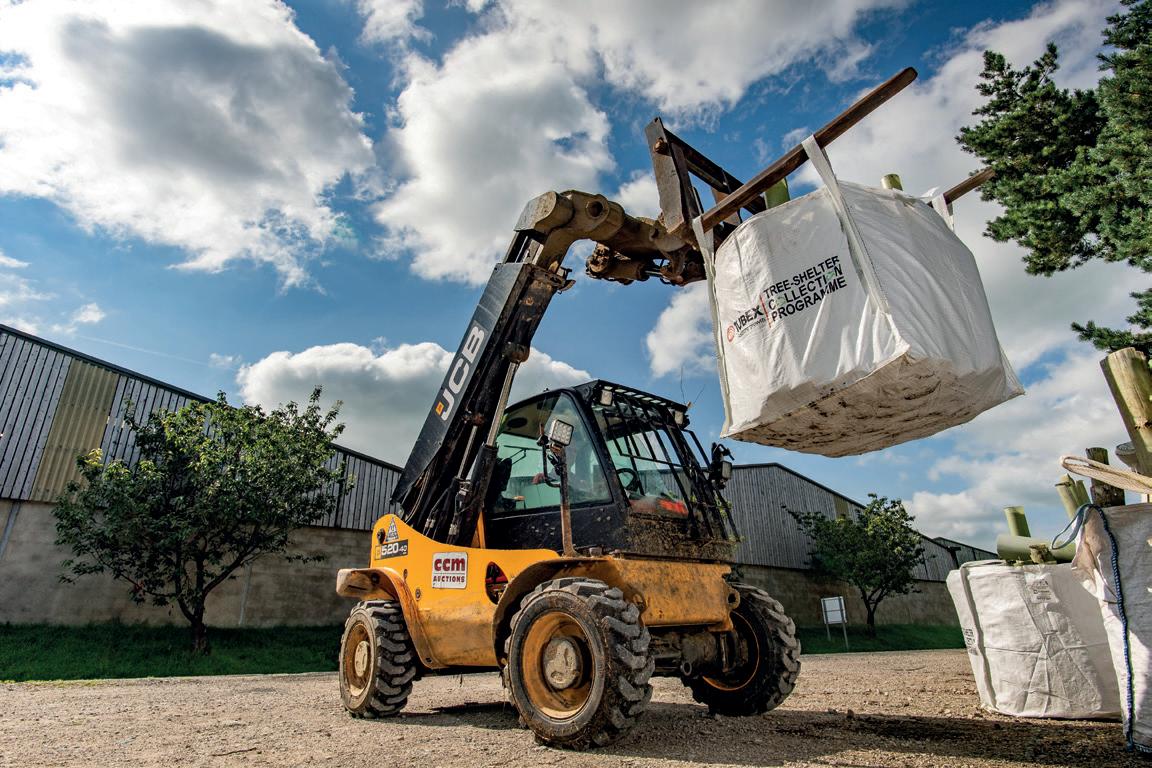
Both deforestation, which releases carbon dioxide, and forest growth, which soaks up CO2 from the atmosphere, are crucial parts of climate change. Data on the biomass of tropical forests is very limited because they are difficult to access.
The Biomass satellite will be able to penetrate cloud cover and measure forest biomass more accurately than any current technology, which only see the top of the canopy. By providing better data it will help create a more accurate global carbon budget and better understanding of carbon sinks and sources which will help in developing and implementing effective strategies to achieve net-zero goals.
Observations will also lead to better insight into the rates of habitat loss and, as a result, the effect this may have on biodiversity in the forest environment.
Tubex has undertaken a major expansion of its tree shelter Collection and Recycling Programme, making it easier than ever for landowners and tree planters to recycle used shelters responsibly.
Tubex has built on the scheme’s success in 2024 by working closely with more partners and distributors to expand the network for 2025, with new collection points, including West Chevington, RSK Whittington and Alba Trees Ltd, joining the list.

These new locations accompany Tubex’s existing partners such as Yorkshire Dales Millenium Trust, Tilhill, Maydencroft, Green-tech and others, helping to grow the hub network to over 25 sites across the UK. This year’s expansion ensures even greater accessibility for landowners and tree planters looking to dispose of used shelters responsibly, either by dropping them off at a hub for free or by booking doorstep collection for a small fee.
The Tubex Tree Shelter Collection and Recycling Programme accepts used polypropylene or polyethylene tree shelters or mesh tubes from all manufacturers. All materials
collected are recycled into new shelters, reinforcing Tubex’s ongoing commitment to a circular economy where materials are reused, and waste is minimised.
As confirmed by independent research, collection and recycling represent the lowest impact option when tree shelters are used, making this the most responsible avenue for landowners.
Pete Stevens, Business Development Manager at Tubex, said: “The growth of our Collection and Recycling Programme shows what can be achieved through strong collaboration and shared sustainability values. Our goal has always been to make it easier for landowners to ensure shelters aren’t left in the environment, and the expanded hub network means more people than ever can do the right thing.
“We are proud of the community of stakeholders who have helped make this programme what it is today. By working together, we are driving real progress in how the industry approaches tree shelter use and disposal, and we look forward to continuing that journey this year.”
An open letter co-signed by Confor
Ajoint letter, co-ordinated by the Stove Industry Association (SIA), from a range of organisations representing over 1,500 businesses and woodland owners, has led to the government confirming that wood burning stoves will be permitted in new homes in the future, ending ongoing speculation in the media that these appliances could potentially be banned.
In response to a letter from the SIA co-signed by Confor, the British Flue & Chimney Manufacturers Association (BFCMA), Federation of Environmental Trade Association (FETA), OFTEC, Renewable Energy Association (REA) and the Small Woods Association, on 2 April the Ministry of Housing Communities & Local Government (MHCLG) stated that:
“…the Government is currently working towards setting a new standard which will be called the Future Homes Standard and will ensure that its new homes are zero carbon ready, meaning that they will need no retrofitting to become zero carbon in use as the electricity grid decarbonises. A full technical consultation on the Future Homes Standard was launched in December 2023 and closed in March 2024. Under the standards proposed in the consultation, a wood burning stove would be permitted as a secondary heating source in new homes.”

The MHCLG also notes that: “The Government acknowledges that it is possible to significantly reduce the level of smoke emitted through domestic burning if the right fuels, appliances and practices are used.”
Within the joint letter, sent in early February to various government departments, the SIA sought to highlight the significant benefits of modern wood burning stoves, including their role in reducing carbon emissions, alleviating energy system strain, improving air quality, and promoting sustainable energy solutions.
Modern wood burning stoves provide secondary heating, reducing reliance on electricity, gas, and liquid fuels, thereby enhancing the resilience
of the energy infrastructure; every log store is decentralised, low carbon energy storage.
These stoves are more efficient and produce fewer emissions than open fires and older stoves. Future innovations aim to further reduce emissions and improve efficiency.
Wood fuel is a renewable resource with low carbon emissions when sourced sustainably, complementing primary renewable heating systems like heat pumps. Promoting the use of sustainably sourced wood supports local forestry operations, creates jobs, and enhances biodiversity, while reducing the carbon footprint associated with fuel transportation.
Commenting on the response received from government, Andy Hill, Chair of the SIA, said: “We are delighted
that it has been officially confirmed that under the proposed Future Homes Standard, the installation of a wood burning stove will be permitted and we are also particularly heartened to see that government acknowledges the impact of domestic burning best practices. Responsible use of modern wood burning appliances is something the SIA and its members have advocated for over many years.
“The SIA welcomes the government’s positive response and looks forward to continued engagement as policies are developed and implemented. We believe that modern wood burning stoves can play a crucial role in achieving cleaner air, supporting local economies, and providing consumers with sustainable and flexible heating choices.”







At LC Energy, we’re committed to delivering sustainable, high-performance renewable heating that helps homes and businesses transition away from fossil fuels. As a Certified B Corporation™, we meet the highest standards of social and environmental impact, ensuring our services benefit both our clients and the planet.
✓ Premium Quality Sustainable Biomass
✓ Wood Chip & Wood Pellet


✓ For Domestic & Industrial Biomass Systems
✓ Delivery across SE & East England























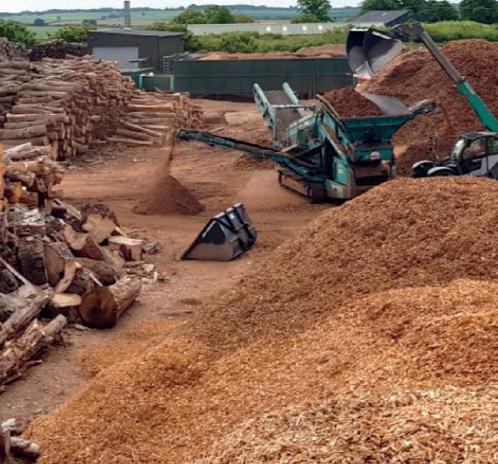
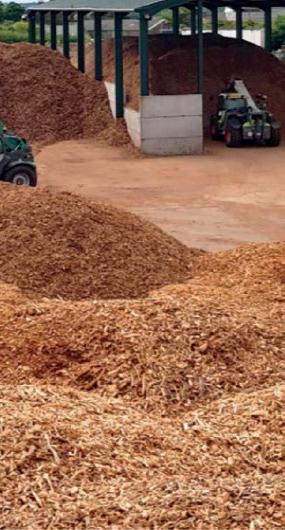
Neil
Harrison, Director at Reheat, looks at the
UK biomass heat market and some of the challenges and opportunities ahead.
“We encourage people to burn trees as a way of combating climate change” is a tough sell, even to some in the forest industry, but it does ignite a conversation about woodfuel quite readily. Using a controversial statement to provoke (hopefully) thoughtful engagement is a tried and tested communication principle, but only if you have the scientific fundamentals to address the, often, agitated response.
The issue with woodfuel is that it’s not just one aspect of its use that attracts controversy, it’s that there are a complex range of downsides, both real and perceived, which can combine to undermine its acceptability as a source of low carbon heat and power. This presents a significant and ongoing communication challenge to the forestry sector, which has come to rely on this market as an outlet for around 2.5 million
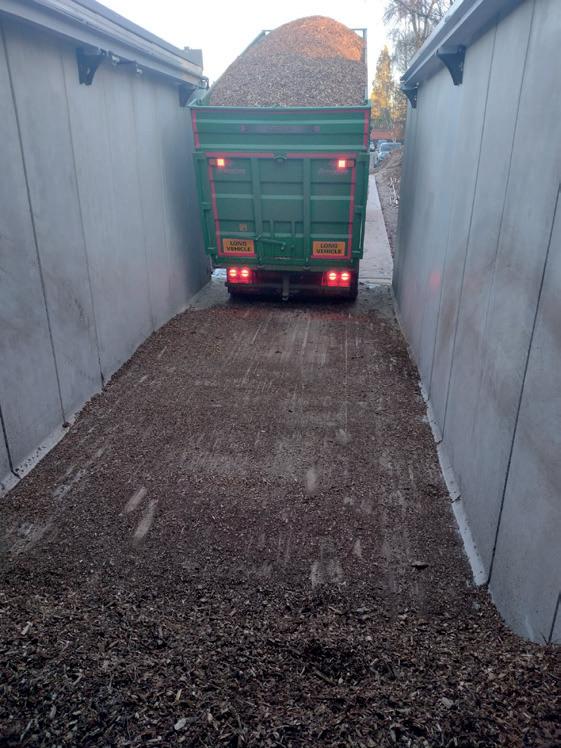
trees” message, an inability to differentiate between utility scale power generation and sustainable heat production, and the lack of carbon and forestry cycle literacy which dogs most conversations around trees and timber, wood fired boilers can often be a hard
That said, with the right approach to informing and educating willing customers, wood fired heating systems still offer the cheapest route to heat decarbonisation of all the currently available technologies - less than half the cost of a well-performing heat pump on a per kWh basis, and for a comparable capital investment. Obviously, operational considerations and their substantial footprint mean that biomass systems aren’t for everyone, but in the right place they offer a proven route to displacing fossil fuels which simply can’t be matched by other sources of renewable heat.
The total number of biomass installations delivered by the RHI in the ten years it was open has been substantial, with around 17,500 new installations in the period 2011-2021, the vast majority of which were wood-fired, and biomass installations make up 82% of the total renewable heat installations

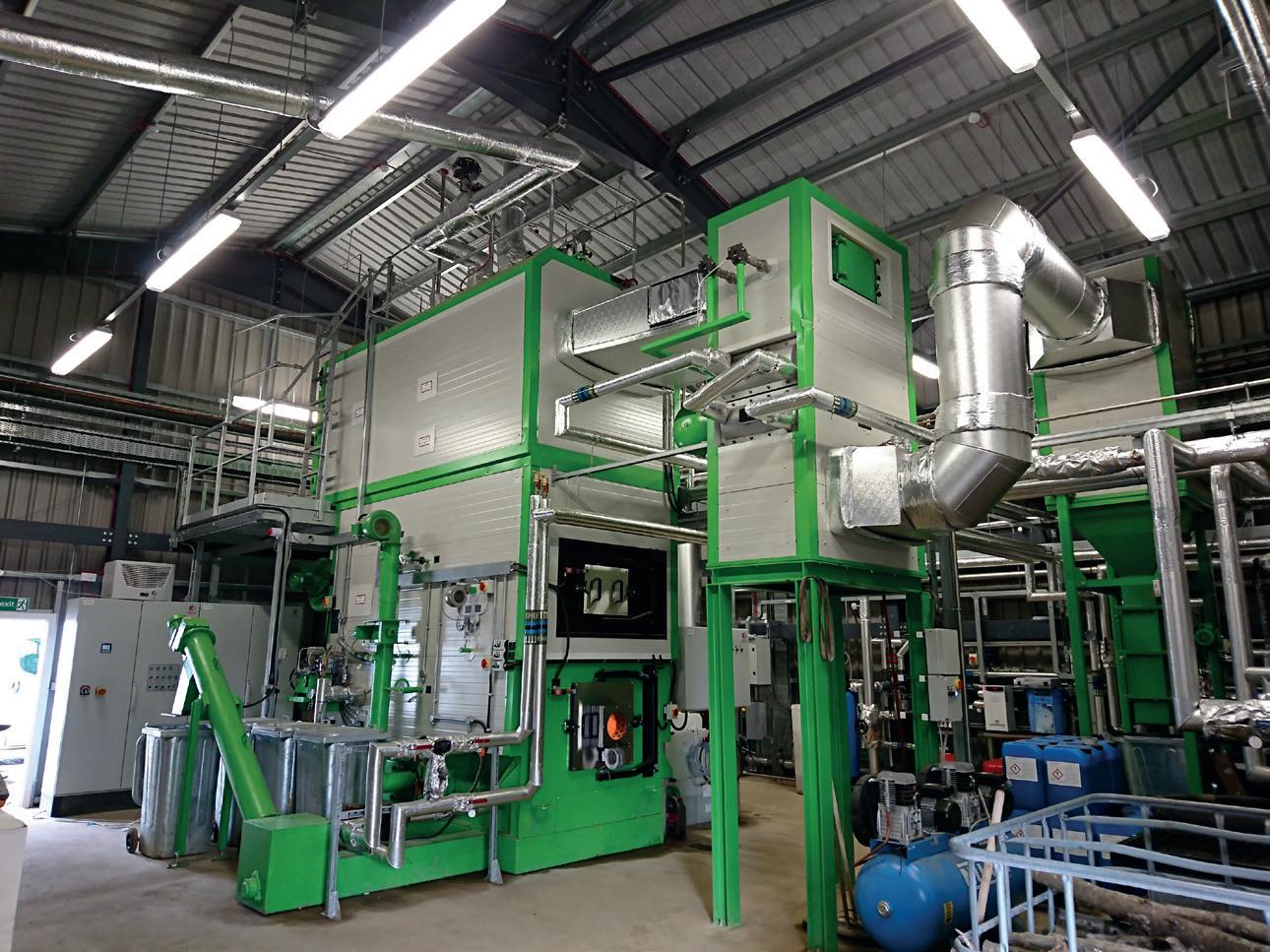
The COVID-19 outbreak meant that the RHI fizzled out over the period 20212023, rather than hitting a hard end date, and there has been no meaningful progress on renewable heat policy or the support mechanisms necessary to encourage uptake since then.
Speaking with a large chip supplier at the end of May, they noted that around 20% of the boilers which they deliver to are off at any one time, and it’s safe to say that the number of companies with the engineers who can design, install and maintain biomass systems

and business and skills exodus from the sector has been a feature of the postCOVID period.
It’s not all doom-and-gloom however, and the market for new installations is proving strong enough to sustain the remaining installer base in this policy vacuum, largely thanks to one of the legacies of the RHI - inappropriate and poor-quality projects, the many unfortunate examples of where an RHIdriven biomass stake was hammered into almost every hole that presented itself.
Thanks to lobbying activity early in the life of the RHI, it’s possible to move tariff registrations from one site to another, even without the original boiler, meaning systems which are unwanted by their original owners can be relocated, or as is more common, simply have the tariff sold on and applied to a new boiler. The new owner is then able to run down the clock on the tariff, with at least their capital investment repaid, and usually a few years of ‘free’ heating thereafter.
This mechanism is driving most of the new projects in the market at present, and although there are a handful of subsidy-free installations happening, these are very rare and only in specific sectors.
Applications which are seeing the highest levels of activity are those which have always been the most attractive for biomass heat. Sites which have space, run on higher-cost fuels such as oil and
LPG, and have high heat demands are strong performers, meaning traditional estates, country hotels, and rural food and drink producers have some of the best project economics. Rural estates with the ability to create small heat networks have a particularly strong set of additional drivers, with the ability to boost the EPC scores of rental properties by up to 20 points, as well as raising additional income from heat sales to tenants.
With around 1.5m tonnes of woodfuels now going into a boiler fleet which is around seven times larger than it was 15 years ago, the scale of the biomass heat sector is significantly greater now than it was then. However, with some of the excesses of the ‘RHI years’ still evident, and the challenges that “burning trees” presents to winning over policy makers and potential customers, any growth we see is likely to be slow and steady for the foreseeable future.
With just 9% of the UK’s heat currently coming from renewable sources, and a target of 100% by 2050, the potential in this £53bn annual market is clearly substantial – the challenge for the forestry and biomass industries in realising this will be to align our communications, avoid past mistakes, and ensure that the applications where we present woodfuel as the right solution are the most appropriate by every measure, and not just driven by subsidy chasing.
A&J Scott, one of the UK’s leading homegrown sawmills, has announced the launch of its highly anticipated Mill 10 project, a transformative venture that will see the installation of a brand-new cutting-edge sawmill, designed to increase sawn timber output by an impressive 40%.
The new sawmill will feature a fully integrated system, including a log infeed, a high-performance sawline, an automated high-speed edging line, crosscut, stacking, and sorting lines for both centre and side-board products.
Complementing this will be a fully integrated co-product handling system, ensuring optimal efficiency, sustainability, and resource utilisation.
Established in 1960 and still operating from the original site in Northumberland, A&J Scott supply sawn timber for a wide variety of uses, principally in the fencing, landscaping, DIY and pallet and packaging sectors. The Mill 10 project reflects the company’s











of sawmill technology and innovation. By incorporating state-of-the-art systems, it aims to boost productivity, enhance efficiency, and maintain its reputation for delivering high-quality timber products.
“This project represents a major step forward for A&J Scott,” said Robert Scott, Managing Director. “Mill 10 will enable us to meet growing customer demand while improving our operational efficiency and sustainability. It’s an exciting new chapter




in our history, and we look forward to seeing the first log processed in Q1 2027.”
The company is now well positioned for sustained growth in its main markets for fencing products, railway sleepers and other outdoor timbers in the years ahead, building on its record of delivering quality sawn timber products and high standards of customer service to its loyal base of customers across the UK.
The company has also extended its product offer, adding NHSS4 highways standard fencing to its existing range.

Pupils from schools across the Highlands and Moray joined forces to showcase their innovation and learning from their involvement in the Confor-backed ‘Climate Smarter’ programme.
Pupils from schools across the Highlands joined forces to showcase their creativity, problemsolving skills, and learning as part of Stemovators, an award-winning STEM outreach programme.
Schools have been taking part in the Climate Smarter project throughout the year, sponsored by Crown Estate Scotland, Confor and The Scottish Forestry Trust. The challenge encourages pupils to imagine an ecoschool of the future, engaging them in activities to learn about sustainable materials, energy production, and fitting in with their local environment.
The programme culminated in a celebration event held at Kingsmills Hotel where 85 young people and 15 teachers gathered to exhibit their projects and compete for competition prizes. Industry volunteers and partners provided challenges which gave the young people an insight of the different career paths available in the STEM sector.

Thomas Wild, Head of Stemovators, said: “The projects, in partnership with our industry funders, inspire pupils and helps them develop valuable skills and knowledge whilst encouraging uptake in STEM subjects and careers.
“The celebration event is a culmination of the project and gives an opportunity where young people can showcase their innovation and hard work whilst learning more about different career and education pathways.”
The activities at this year’s event were provided by Bristow Group, Highlands and Islands Airports Limited, LifeScan, National Space Academy, SSEN Transmission and West Fraser.
Rosalind MCQuaker, Farr High School, highlighted: “Our S1 class have had the opportunity to develop their understanding of a range of issues as part of the Climate Smarter Challenge along with developing their problem

solving and collaboration skills.
“The opportunity to participate and achieve a Young STEM leader award ensures our young people become aware of the skills they have developed throughout the programme.”
The Climate Smarter project is funded by industry to provide free resource kits to schools. The content focuses on sustainable materials, energy storage and ‘smart’ technologies. This enables schools to create a tabletop model of their future eco-school to compete at the celebration event.
Eleanor O’Neill, Communications Manager, Confor, said: “Confor has been a proud supporter of Stemovators for a number of years and it continues to be a fantastic introduction to the world of forestry for young people across Scotland.
“Taking part in the Highland Celebration of STEM event gives us an opportunity to see the learning outcomes for ourselves. It is more important than ever to get young people thinking about the future and interested in the skills needed for a greener tomorrow.”
Amy Mack, Crown Estate Scotland’s Partnership Team, added: “These events help to raise awareness of STEM subjects, while showcasing the quality and potential of the young people taking part. We hope they will inspire the next generation to consider the range of exciting opportunities offered by these subjects.”
Stemovators is an initiative delivered by Prosper (SCDI) supported by industry partners across Scotland and funded in partnership with the Scottish Government.

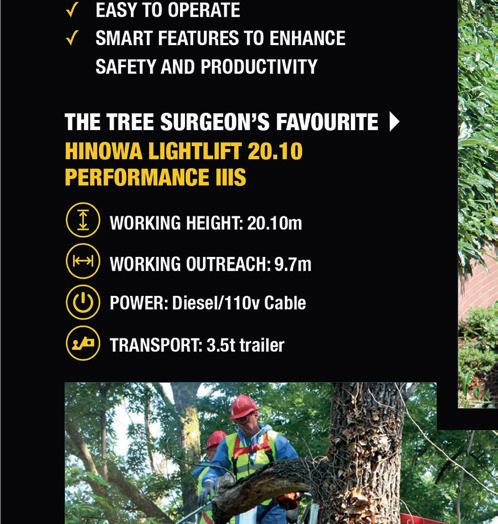
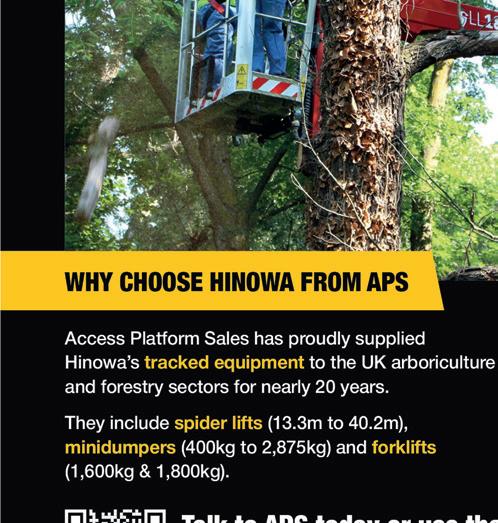







TChris Bank Technical Director at Access Platform Sales reports
ree management professionals have conventionally chosen to use dieselpowered spider lifts. But, to use a well-known quote ‘times are a-changing’. Lithium battery power is emerging as an increasingly popular option for tree management. Albeit with some diesel backup.
With the tried and tested diesel technology – and a couple of fuel cans in the back of the 4x4 – tree professionals know they have power on tap in all conditions. Power to weight ratio has always been the telling issue. Most tree care workers want to tow spider lifts, whether owned or rented, on a 3.5t trailer behind a car of van.
The extra weight of lithium batteries places a challenging limit on the size of spider lifts able to shimmy under the 3,000kg bar that allows them to be transported in this way. However, as technology has progressed, lithium battery spider lifts that are light enough and have the right performance characteristics for tree work are coming onto the market.
Diesel-powered spider lifts are seen as having a reliable fuel source, and they’re flexible. Especially if teams are working a long day in woodland, with lots of tracking and platform repositioning.
But a growing number of tree care companies are realising the very real benefits of using spider lifts with diesel thermal engines and lithium batteries. The combination can be a classic win-win, for the tree care company and their customers. A case in point, is the new Hinowa Lightlift 18.80 Performance IIIS. It is no coincidence that the diesel and lithium battery bi-energy version of the platform weighs a 3.5t trailerfriendly 2,990kg.
Its maximum working height of 18.55m and maximum outreach of 7.8m is a little less than the tree care industry’s favourite MEWP, the Hinowa Lightlift 20.10.
However, it can still do a very effective job, and it shares Lightlift 20.10’s 230kg unrestricted basket capacity valued by tree

workers, because they always know where they stand, and repositioning is minimised. What the lithium bi-energy version of the Hinowa Lightlift 18.80 also delivers is greater versatility and even more business opportunities.
A full battery charge provides 4 to 4.5 hours of continuous working. So, for all but the most arduous of days, battery power is likely to suffice. If it does not, the operative just has to switch to the diesel engine. An alternative approach is to use the diesel engine to track the platform to a work location, the switch to battery power to work at height. Either way, diesel fuel is being saved.
The much smaller carbon footprint of lithium battery power impresses a growing number of customers. Near silent and zero emissions working supports working close to sensitive sites, like schools and hospitals. It also extends the working day when customers and their neighbours demand peace and quiet early or late in the day. When the spider’s not needed for tree work, its bi-energy credentials command premium rates when rented to other businesses, like electricians, roofers and maintenance specialists.
Medway Tree Surgeons, based in Chatham, Kent, has realised all these benefits with its Hinowa Lightlift 18.80.
‘Huge’ resale value Director Joel Sims said: “Having a lithium bi-energy spider lift is epic. It’s transformed our business, and is creating new ways to generate income.
“We use electric power 80% of the time. In a lot of cases, we can run the platform via
a plug-in 110v cable, so there is no power cost to us at all. “Because electric power is so smooth, there is less wear and tear, so maintenance costs are likely to be less.
“Also, the battery is only working when the platform or boom is moving. So, my platform clocks up fewer operational hours than a diesel one. That’s huge in terms of maximising my platform’s resale value.”
Another advantage with the Hinowa LL 18.80 is that it is the first Hinowa platform with its drive track stowed inside the boom. This eliminates snagging risks if falling branches come into contact with the boom.
There is little chance tree specialists will give up diesel power altogether very soon. But the half-way house bi-energy option will clearly be a growing force in tree management.
The Hinowa Lightlift 18.80 is already demonstrating its capabilities, both for treework and creating lucrative new business opportunities for entrepreneurial tree specialists.
Talk to APS today about the Hinowa Lightlift 18.80 spider lift and all other spider lifts in the Performance range – with working heights ranging from 13.3m to 40.2m. APS can offer excellent finance and contract rental deals, plus fixed-price servicing and LOLER Thorough Examination packages, as well as our fast and efficient UK-wide mobile repairs service.
Access Platform Sales, the UK and Ireland authorised distributor for Hinowa spider lifts.



Offering a comprehensive range of professional log & woodchip drying kilns for the timber industry. Along with kilns for sawn timber, pallets & fencing producers
KILN Services has been designing and manufacturing timber-drying kilns from its base in Essex for over 45 years. The company provides drying and heat-treatment kilns for all sectors of the industry, including softwood and hardwood sawmills, pallet manufacturing, fence-post producers, biomass fuel producers, modified timber and research facilities in universities and training colleges. In recent years, the market for kilns to dry biomass fuel has increased considerably. This has been driven by consumer awareness of product moisture and government initiatives to improve air quality, such as the Woodsure Ready to Burn accreditation scheme.
Please visit our website for more information www.kilnservices.co.uk t: 01621 785 935 e: admindept@kilnservices.co.uk Kiln Services Ltd, Essex, CMO 8TE












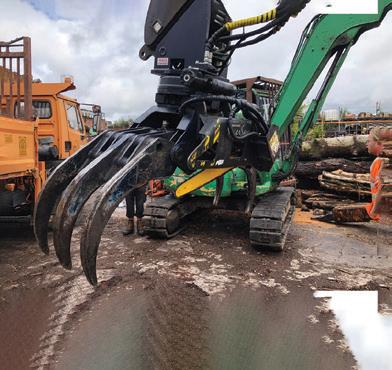




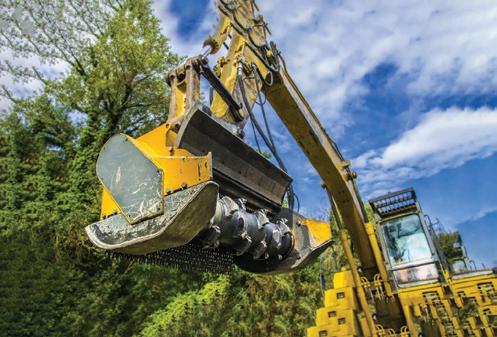
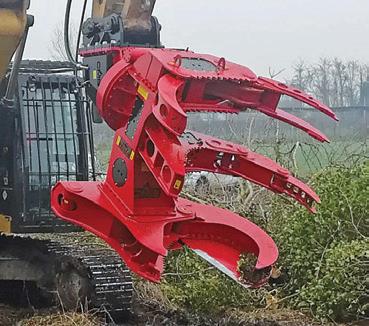
A new course designed to tackle skills shortages in the forestry industry in Scotland has been declared a “resounding
success”.
The Forestry Operations New Entrants Programme was targeted at young people or career changers interested in forestry or the wider rural sector.
The intensive five-week course, delivered at the Scottish School of Forestry at UHI Inverness, focused on practical woodland creation skills - tree planting, tree identification, driving allterrain vehicles, using equipment and pesticides safely, and emergency first aid.
The programme was funded by Par Equity and Aviva Investors, who are involved in natural capital investment in Scotland - both woodland creation and peatland restoration.
Tom Croy, Investment Director at Par Equity, said: “There’s a real challenge in terms of forestry skills, with lots of older people leaving the industry.
“So Aviva Investors and Par Equity worked with Scottish Woodlands to create a short training programme to address skills shortages - and give students practical skills and certificates they needed to go out and work with contractors.
“It’s been a resounding success; student feedback has been fantastic. We’re excited about engagement from employers and hope we’ll run the programme again.”
Melanie Collett, Managing Director,
added: “Through our investments in woodland creation and peatland restoration projects, and by partnering with initiatives like this, Aviva Investors hopes to help address forestry industry skills shortages. It’s great to see the first cohort of students so enthusiastic about what they’re learning. They can be a real asset to the industry, and perhaps even work on one of our projects.”
Scottish Woodlands Ltd, the UK’s largest forest management company, advised on the curriculum and provided equipment for the students. Isla Campbell, Forest Manager at Scottish Woodlands, stated: “We worked together to create a programme that offered relevant training, support, and funding, so the students feel armed and ready to come into the world of work.”
Neil Cleland, Deputy Head of Curriculum at the Scottish School of Forestry - UHI Inverness, explained the need for the course. “We’ve had a lot of people retiring out of the forestry industry, so we’re losing a lot of experience,” he said. “This programme was about encouraging youngsters and career changes into forestry, to show them how broad and varied the opportunities are.
“I feel elated. From day one, the group gelled. They have demonstrated a
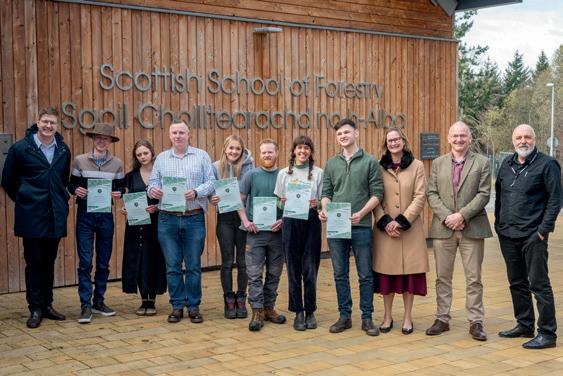
“Working with Par Equity, Aviva Investors and Scottish Woodlands Ltd has been fantastic. It’s given us a really good foundation to take this course forward.”
Among the cohort was Dougie Mackintosh, who spent 25 years in the reserve armed forces and worked in energy performance. He said: “I’m setting up a gardening and landscaping business and the course offered a range of qualifications beneficial to doing that. It’s been fantastic.”
“The course has been wonderful –it’s opened up more career choices, and given me qualifications to kick start an ambition,” added Robbie Fletcher, who joined with construction sector experience.
Madison Davis had worked with horses and done some forestry work with SM Forestry Ltd. She said: “I couldn’t really find what I was looking for and liked the thought of constantly being outside, so I came and gave it a try, and it’s been really good.”
Nora Aubry, who lives in Glasgow but is originally from France, said: “This opportunity is incredible. We learned so much, and got hands-on experience in a very supportive and supervised environment. I’d encourage anyone to sign up.”
To find out more about future courses like this, email info@parequity.com.
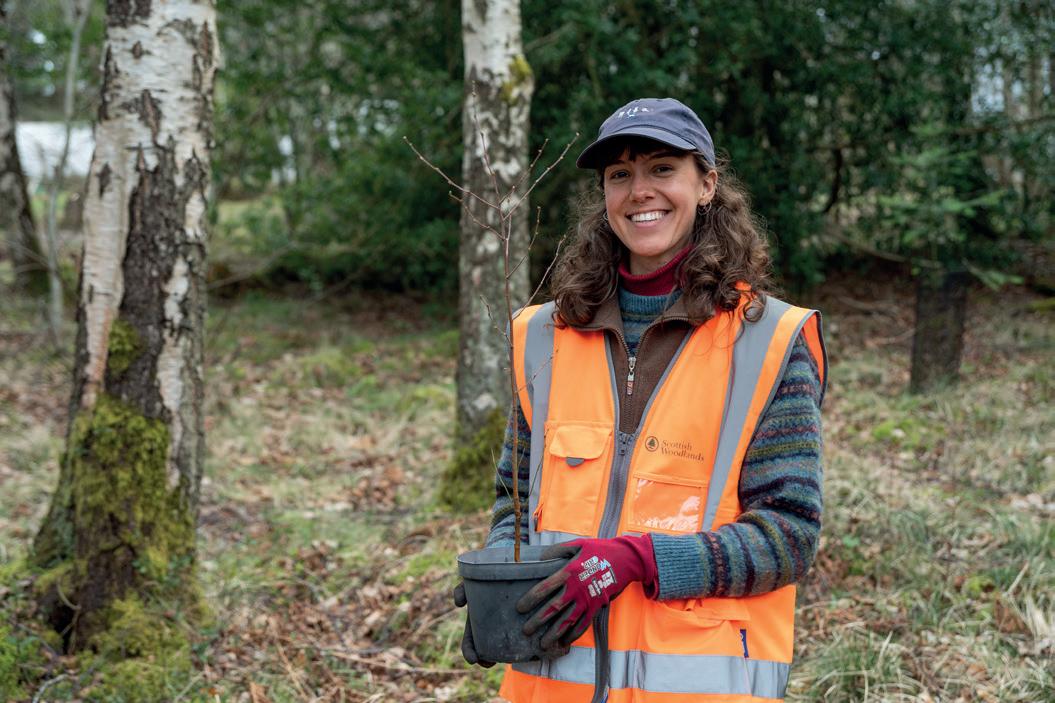




Professor Julian Evans
OBE FICFor reflects on the significant changes to the landscapes and practices from his early career.
n the weeks before penning this update, I have attended the Institute of Chartered Foresters centenary conference in Edinburgh and the Royal Forestry Society’s annual study tour in South Wales. Allow me to share some highlights, not so much as summaries of events, but more take home messages that point to the future.
The incredible advances in understanding DNA in organisms and extracting it from seemingly nothing and increasingly with great ease, is reframing our knowledge of the environment – eDNA – and of identifying genes or sections of code to explore; for example, disease resistance and how easily we can (or cannot) select for it.
Techniques that 25 years ago were hailed as marvels and breakthroughs
are now commonplace. We know this from cold-case crime reviews, but it is still a revelation that we can now know what has recently passed through our woods or whether an exceptionally surviving tree had the genes or just the luck.
Modern life requires gigawatts of electricity to keep everything running so it was a thrill to visit one of Europe’s largest onshore wind farms. It was on the tops of the South Wales valleys where yield class 10 or 12 Sitka spruce was cleared for the numerous turbines. As part of the deal, disafforested areas of deep peat were being restored to the mires they once were.
I had been an FC district forest officer in the 1970s and the land Natural Resources Wales (NRW) now lease for the wind farm was part of my patch. The new use made sense: the exposed tops are harnessing wind energy with not a worry about windthrow to trees and the poor peaty soils are being returned to what they do best, storing carbon and water; so helping ‘slow the flow’ too.
We have ranged from the micro to the macro, but what about the ‘meso’, that is, developments at our scale as it were? The take home message is the everyday tree shelter, now actively under research to find materials other than plastic. Forest Research have robust trials comparing recent alternatives on the market, several
universities are investigating what true biodegradability means i.e. more than just breaking down and disappearing but becoming what(?), and all the while ever new variants are offered by manufacturers.
At the moment, I cannot recommend any one product but can reiterate that re-using for a second or even a third time a plastic tree shelter does make sense and is as sustainable as it gets while we wait for the truly biodegradable version that both protects safely and for long enough the planted tree.
The biggest surprise of the last few weeks was the South Wales valleys. Working there more than 50 years ago, everything was post-industrial dereliction, waste and industry still belching forth into the atmosphere or digging ever deeper in giant opencast mines. Today much is gone – though the important and strategic Port Talbot steel works survives – and everywhere is greener and tidier and even enjoyed for recreation.
The region now has over 40% woodland cover and unless you know where to look, the visitor sees no coal tips, slag heaps or other signs of industrial exploitation that once filled every valley and hillside. There are still forest fires, still unsocial activity, but I left feeling hope that what was once a landscape of eyesores need not always remain so.

Euroforest are specialists in Arboriculture and offer a range of tree care and woodland management solutions to suit your needs:-
Mechanised Arboriculture
Tree Health Surveys
Tree Surgery
Site Clearance & Mulching
Hedge & Verge Maintenance
Tree Planting & Landscaping
Marketing of Timber and Biomass
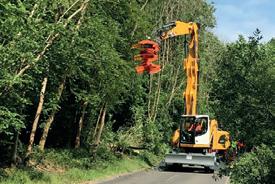
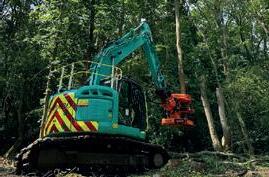

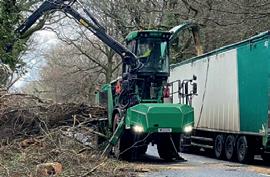
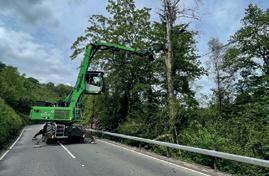



Ash Dieback and other tree diseases con�nue to spread at pace throughout the UK. It is an�cipated that up to 97% of all Ash trees could be lost. Ash and other species at risk are widespread in woodlands and roadside edges. This causes a considerable liability risk to landowners associated with falling trees, especially adjacent to footpaths, highways, and property. Early interven�on is always advised to minimise cost and maximise value.
Euroforest offer a tailored approach to suit all requirements. We use a range of specialist equipment, allowing us to safely dismantle any tree in any loca�on. All of our projects are professionally planned and managed from start to finish, enabling us to achieve and deliver the best results.
Our highly experienced team offer an industry leading Arboriculture service across the country. We lead the way in compliance and public rela�ons, seeing a gold standard through our cer�fica�on to ISO 9001 Quality Management Systems, ISO 45001 Occupa�onal H&S Management and ISO 14001 Environmental Management Systems.
Euroforest's specialist teams offer a bespoke service, from ini�al site appraisal through to comple�on and replan�ng. We offer a service that puts the landowner centre stage while always minimising costs and maximising any �mber revenues. If you wish to find out more, please visit our website or contact us via the below details.


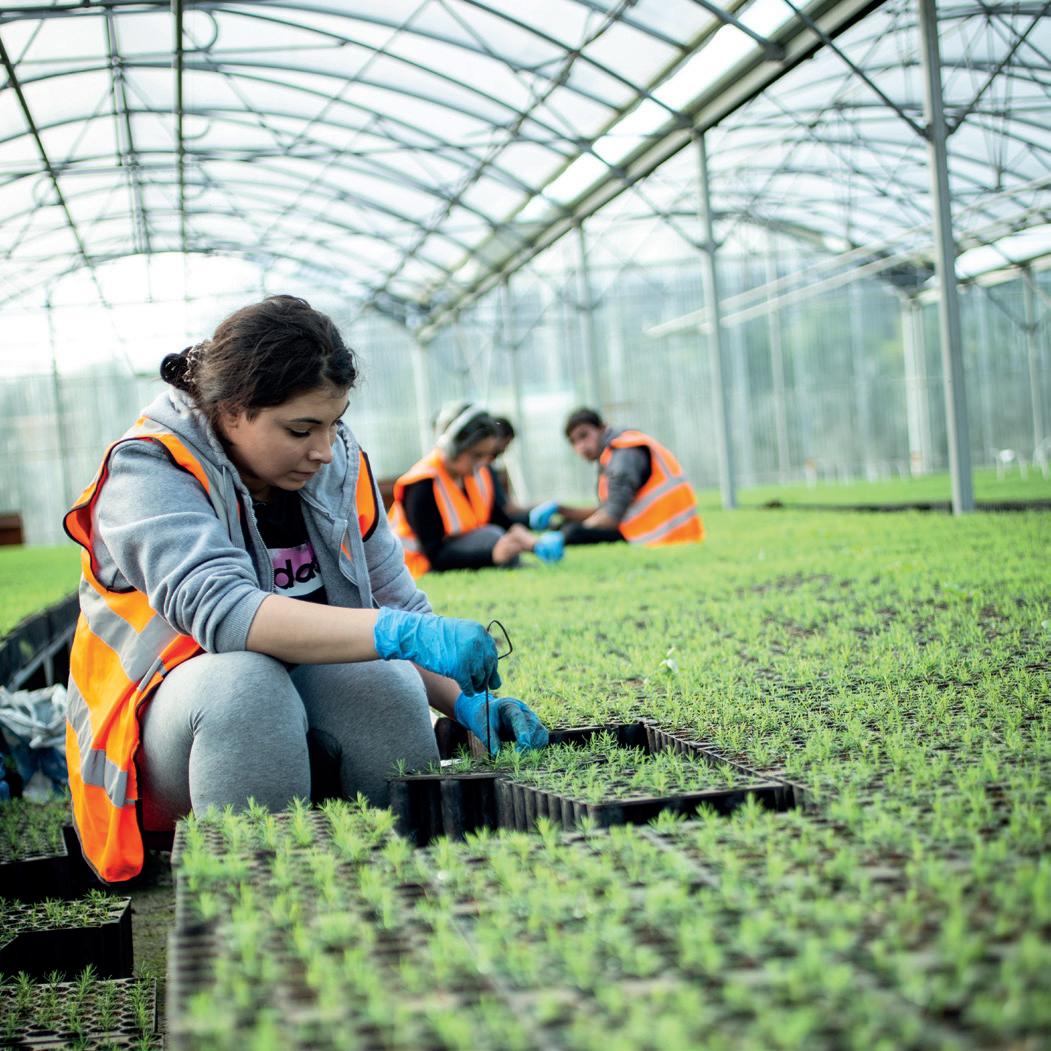
This photo, submitted to Forestry & Timber News by Cheviot Trees Ltd, shows Douglas Fir seedlings that are only a few weeks old.
Foresters will be familiar with the term ‘thinning’; the selective removal of trees from a stand, primarily undertaken to improve the growth rate or health of the remaining trees.
Cheviot Trees also widely use thinning techniques on their nursery to produce a premium quality plant. It is often necessary to sow more than one seed per ‘cell’ as seed viability may vary and, if more than one seed germinates, then a thinning process through the entire crop to single out multiples must be carried out. Any spare plants can also be transplanted into the gaps.
This is a very labour-intensive process, but the result is a strong, single stemmed plant which has had even spacing, resulting in premium quality. A task reserved for the nimble-fingered and eagle-eyed!

Forestry in Pictures is a regular feature in FTN. For every issue, we select the most impacting photograph sent by a reader. If you have a photo you would like to see published here, please send your file to ftn@confor.org. uk. Please include your name, a short comment text to go with the picture, and an image credit.
Photos should relate to forestry and timber and be of high-quality (minimum resolution 300dpi). Exceptional pictures might be considered for the front cover of a future FTN issue.
By submitting a picture to Forestry in Pictures you give Confor permission to use the file for non-commercial purposes in Forestry and Timber News or the Confor website. Photos will always be credited.
In our August/September issue we will be focusing on Forest Machinery and Timber Processing. Remember that FTN is your magazine – get in touch if you want to suggest editorial or give us feedback on articles we have published in the past. Confor members, send us your company’s news updates or pitches for feature articles.











